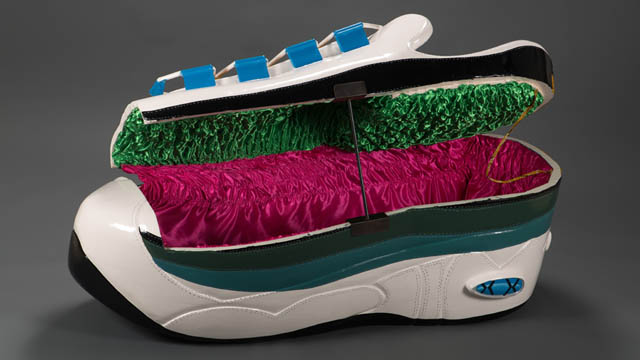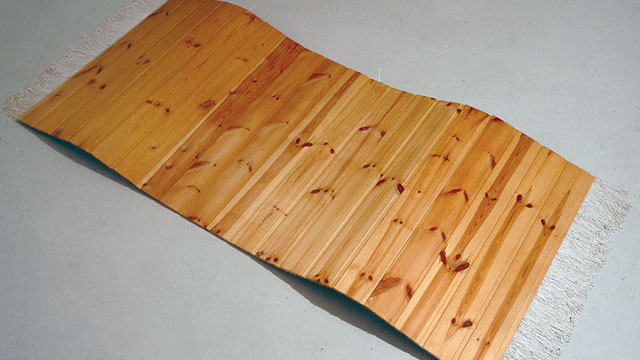Dear user,
This section of our website forms the heart of the EVC project. Here you find a collection of images of objects from different ‘visual cultures’. Our contributors selected and interpreted them in their respective contexts believing that these objects are particularly important for intercultural understanding across boundaries. Each time a user opens this page, the order in which the objects appear changes. In this way we hope to avoid a hierarchical understanding of the collected objects as their entries continue to be accessed in the long run. The constant changing face of the page also reflects the continuous expansion of the collection. As there are already over more than a hundred entries, users may want to form an overview, or to navigate through the growing collection according to their interests. For this purpose, we offer the following search options:

Filter: This enables you to search for objects according to time, place, keywords, etc. / Free title search: If you know the title of an object, you can find it in the free search field. / Lab: In the lab section, objects from the database are grouped under overarching themes. This is an ongoing project and about to be expanded extensively.
Enjoy exploring our database!
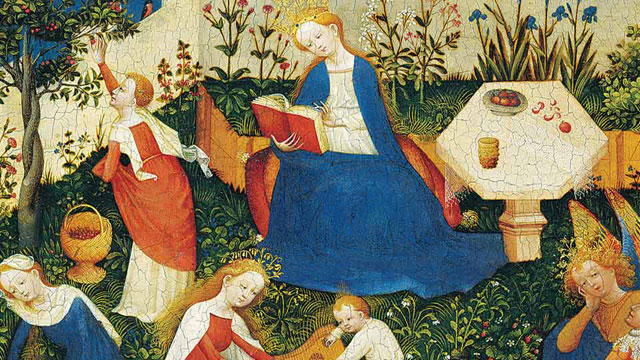
-
 Constanze Kirchner
Constanze KirchnerThe motif Paradiesgärtlein originates from Christian imagery. It was painted many times in the 15th century, especially in Italy and along the Rhine. The enchanting devotional picture shows Our Lady enthroned on a bright red cushion in the middle of the garden, tall, in a radiant blue robe, as the figure dominating the picture. Her head is bowed and she is reading a book. A crown with leaves distinguishes her as the Queen of Heaven.
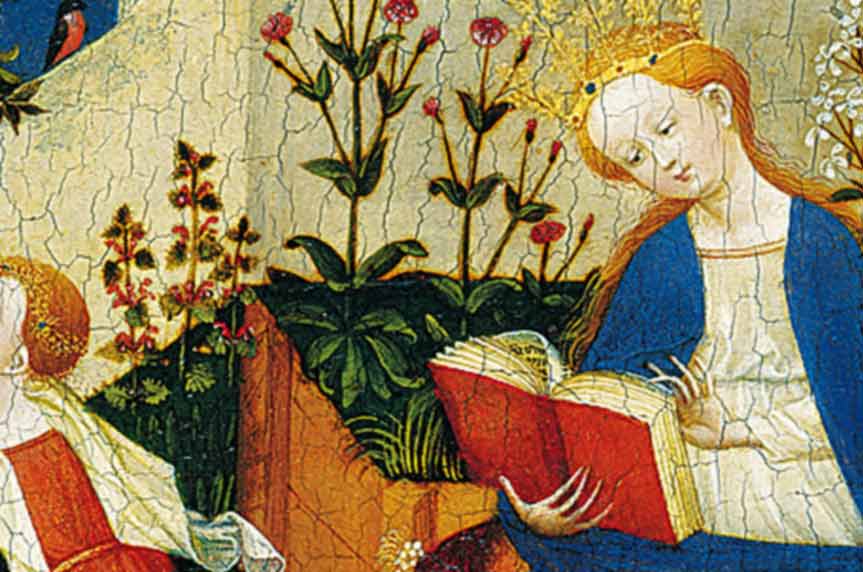
The Christ Child is playing at her feet. The other female figures in the left half of the picture are also to be understood as Holy Virgins because of their splendid clothing. A clear assignment of these saints is uncertain (Keazor 2001, p. 231 ff.). St. Barbara is probably drawing water with a golden spoon from the (life) well in the foreground on the left, because legend attributes to her miraculous powers in overcoming a period of drought. And it could be St. Dorothea who picks cherries from the (life) tree and puts them into the basket, although – according to the legend – the cherries are handed to her (ibid.). The figure holding the plucked instrument (psaltery) to the infant Jesus is interpreted as St Catherine of Alexandria or St Agnes. She is distinguished by a golden diadem with floral decoration and by her flowing hair (ibid.).
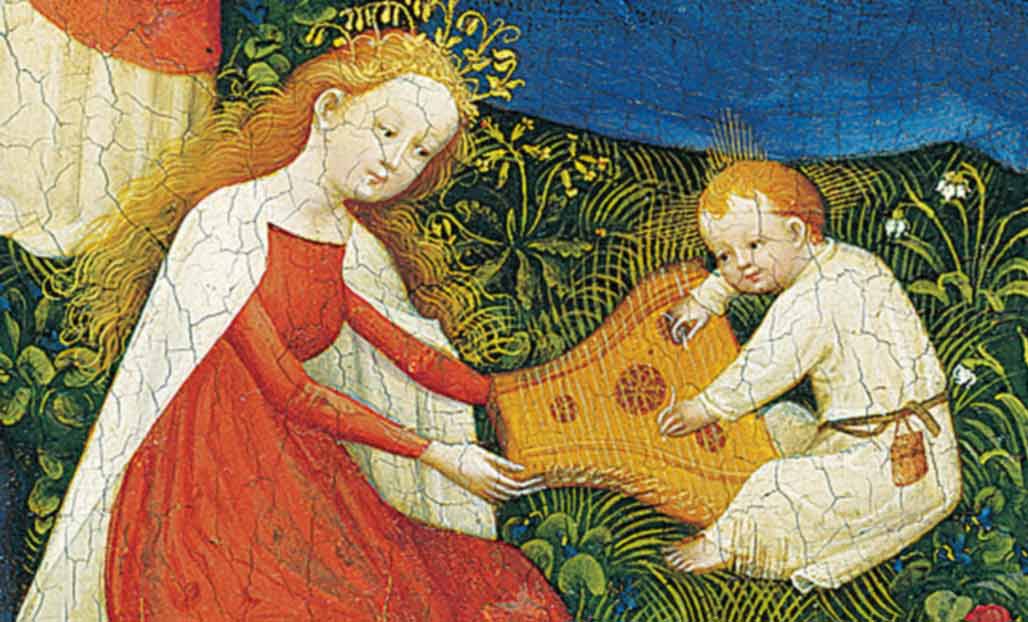
The group of figures on the right consists of the pensive Archangel Michael, also crowned with a golden plant, and – facing him – St. George in chain mail, next to whom lies a small dead dragon. A third figure, probably St. Oswald, bends down to both of them, as a raven peeps out from behind his knee (ibid., p. 233). He is holding on to the tree of knowledge. Saint George has of course already conquered the dragon, which stands for evil, and looks expectantly at Mary. Under another tree sits a frightened monkey with the distinct features of the devil.
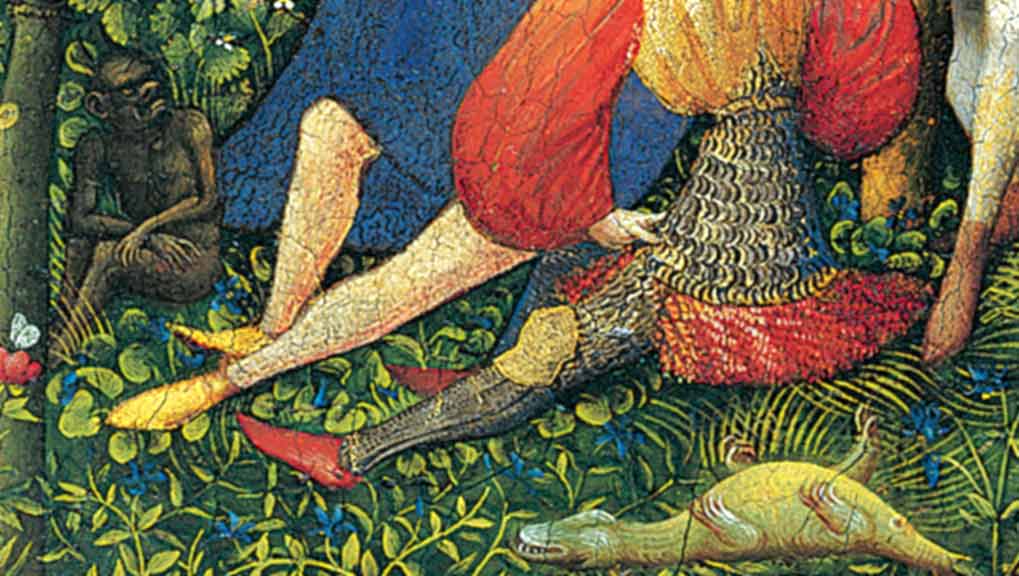
According to biblical legend, he is held in check by the Archangel Michael, the fighter against evil and guardian of paradise. The apples mentioned in the creation story, which tempted to sin, lie ready on the hexagonal, bright white stone table. Wine and bread refer to the Last Supper. The table is compositionally remarkable, dividing the male group of figures from Mary.
Both paradise and the garden stand for a protected, enclosed and bounded place that provides food and water as well as peace and quiet. In the garden, flowers, herbs, fruits and grasses blossom and grow, spanning a supra-temporal, idealising arc from spring (lily of the valley) to midsummer (roses). Especially the white-flowered plants, such as the lilies, stand for the purity of Mary. Just like the plants, twelve birds of different species are depicted in detail and realistically - and thus identifiable (Brinkmann/ Kemperdick 2002, p. 93).
Compositionally, the colour scheme dominates the picture: the secular blue sky frames the graceful Mary leaning towards the book, whose blue robe corresponds with the blue clothing of St Barbara and that of the archangel. The white garments of the saintly figures, the wall in white tones and the light-coloured table enclose the baby Jesus, also dressed in white, in their midst. At the same time, the bright red of the virgins' robes, the red of Mary's book, her seat cushion, St. George's sleeves, the blossoms and fruits reinforce the clear composition, which is additionally underlined by the complementary green of the plants and once again places Mary at the centre of the picture's action. The spatial effect is essentially determined by groupings and overlaps of the figures and pictorial objects; there are no shadows in the heavenly world.
The figures appear relaxed, peaceful and serene, the colourfulness and the abundance of vegetation with springing water embody serenity and earthly happiness. The Holy Virgins are engaged in an occupation that does not cause any trouble. The clothing and hair ornaments are reminiscent of courtly life in a well-tended castle garden. This is also indicated by the killed animals, which are not usually part of the heavenly world, as well as a tree of knowledge that does not bear fruit. This combination of the divine world as a heavenly paradise with the impression of earthly reality characterises the picture to a great extent and thus lends it a peculiar mood, explosiveness and tension in its contemplativeness.
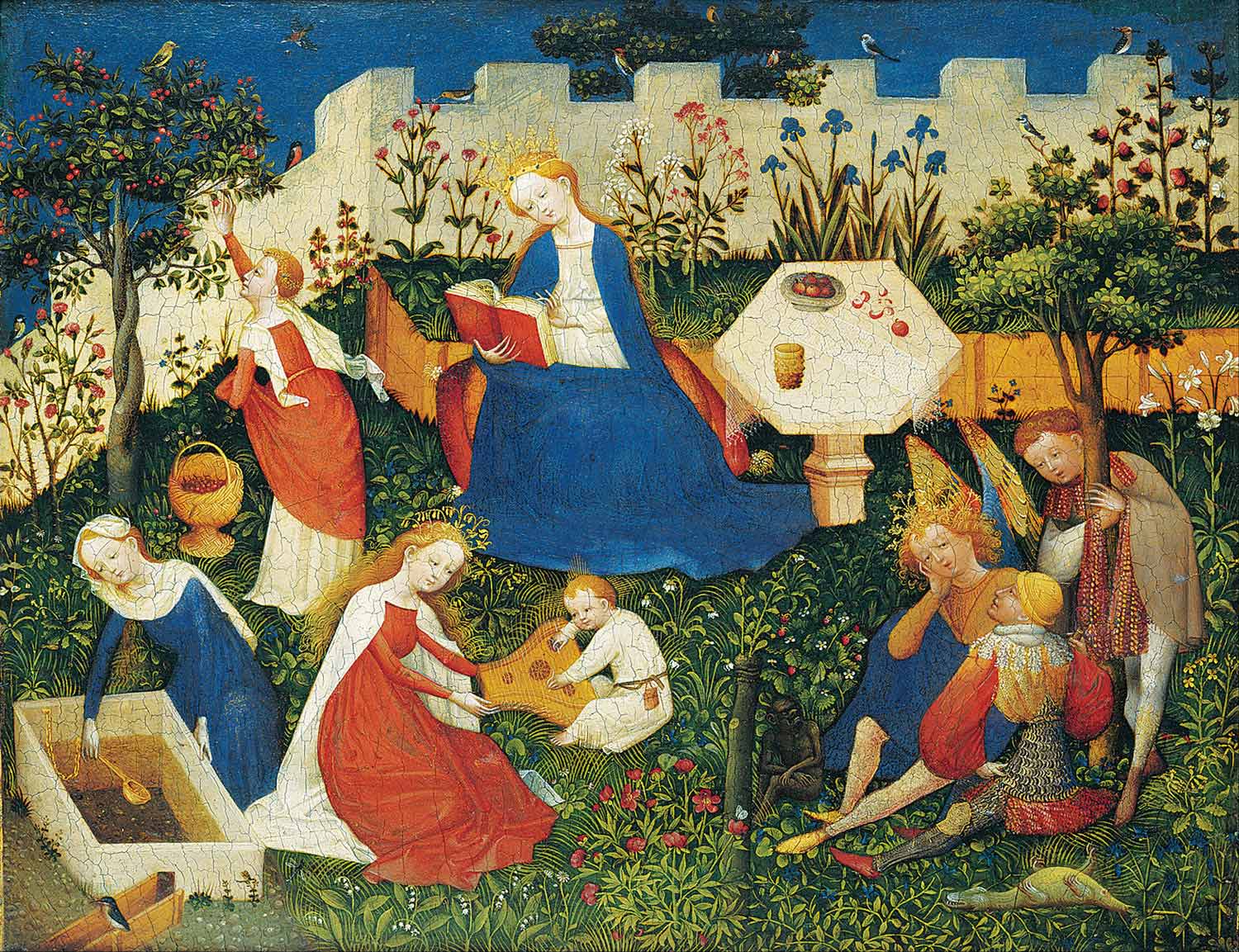
There are numerous studies on the painting technique, the use of colour, the symbolism, the identification, function and activities of the saints, the plants and animals. Also research has been done on provenance in the monastic context or on the attribution of the picture type as ‘hortus conclusus’ (closed garden as a symbol of Mary's virginity). ‘Hortus conclusus’ is often alluded to in paintings of Mary - a garden with an enclosure and with certain plants that refer to Mary (lily, rose, but also lily of the valley or strawberries) - as can also be seen in the Paradiesgärtlein. At the same time, however, the Paradiesgärtlein evokes associations with the gardens of pleasure and love, as found, for example, in engravings by the Master of the Gardens of Love in the mid-15th century (http://bildersammlung-prehn.de/de/node/946, 06.03.2019) - and in this ambivalence once again clearly emphasises the link between divine and earthly worlds of life.
What does the Paradiesgärtlein mean?
The Paradiesgärtlein defies a clear interpretation. The duality of good and bad is hinted at, but the victory of good in paradise over evil or sin – represented by the dead dragon and the vanquished devil – is clearly emphasised. However, the ideal state in paradise is not unbroken: With their tilted heads, the figures in the painting appear pensive, as if they know that there is a life of tormenting reality outside their shelter. The garden as a retreat from the dangerous outside world protects, where in everyday life there is oppression, fear of hunger or sudden death. With the devotional image, religion offers comfort in the promise of salvation to a paradisiacal existence in which the threatening is banished. The imponderable reality is countered by the protective enclosure of the massive wall – outside, the world is full of danger.
The devotional image builds a bridge from this world to the hereafter and vice versa. It opens up a view into eternity and thus into a transcendental space of experience that lies outside finite everyday experience. Visual means are used to create access to the divine, an access that at the same time recalls one's own experience of the world and yet enables the imaginative experience of transcendence.
As an anthropological constant, the idea of a transcendent reality, which usually characterises life after death, runs through many cultures. Experiences of transcendence are described in many ways and often refer to extrasensory perceptions and supernatural forces to which the respective belief is tied.
Why is the painting interesting for art education?
Transcendence and spirituality are often at the core of cultural traditions - in this case Christian heritage. It could be exciting to enter into a conversation about this and to draw on examples of non-European cultural testimonies of faith from the 15th century. In this way, world history can be opened up and a Eurocentric perspective on the history of Western art can be expanded. (As the epitome of European beliefs about the Garden of Eden, the work also stands at the end of the medieval conception of nature and art.)
The image announces divine truth: In paradise, the world is in order. Outside the garden, man lives in untamed nature and is exposed to all incalculable events. With its religious context of origin, the painting's function is primarily to depict an otherworldly, divine order that illustrates the promise of salvation after death in contrast to the earthly hardships of the late Middle Ages. But the pictorial interweaving of earthly and heavenly life already points beyond the late medieval conception of the image. The shielded divine world view experiences ruptures, opening and change.
Not only can the work paradigmatically explain the end of the Middle Ages and the development of art history. Furthermore, the it invites discovery: plants can be identified, animals and groups of figures with their actions tell stories that can be researched, re-enacted, developed further and transformed into the present day. And last but not least, the linking of divine and earthly reality allows analogies to virtual and real, individual and global worlds of life.
References
- Brinkmann, Bodo/ Kemperdick, Stephan (eds.): Das Paradiesgärtlein. In: German Paintings in the Städel: 1300 - 1500, Catalogues of the Paintings in the Städel Art Institute. Frankfurt am Main/ Mainz 2002, pp. 93 -120
- Leaflet of the Städelsches Kunstinstitut on the work: "Das Paradiesgärtlein", c. 1410-1420. Upper Rhenish Master, mixed media on oak, 26.2 x 33.4 cm. Städelsches Kunstinstitut, Frankfurt am Main o.J., o.S.
- Historisches Museum Frankfurt am Main, Prehn'sches Kabinett. http://bildersammlung-prehn.de/de/node/946 (06.03.2019)
- Keazor, Henry: "Manu et voce". Iconographic Notes on the Frankfurt Paradise Garden. Original publication in: Bergdolt, Klaus/ Bonsanti, Giorgio (eds.): Opere e giorni: studisu mille anni d'arte europea dedicati a Max Seidel, Venezia 2001, pp. 231-240. http://archiv.ub.uni-heidelberg.de/artdok/2344/1/Keazor_Manu_et_voce_Ikonographische_Notizen_zum_Frankfurter_Paradiesgärtlein_2001.pdf (07.03.2019).
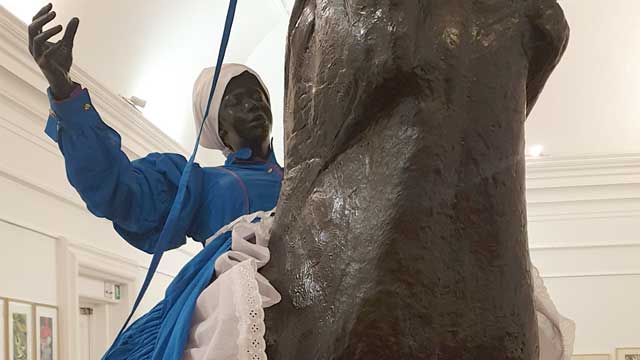
-
 Estelle Vallender
Estelle VallenderMary Sibande’s sculpture The Reign (2010) affects the viewer due to its interplay of bipolarities such as European/African, male/female, past/present, working class/bourgeoisie, private/public, reality/fiction. It forces us to scrutinize our contemporary thinking about the past in relation to the present. The criticism of the colonial era and the rebellion against limitations, that history has placed on identity is inherent in the work, which focuses on African women, historically oppressed as Blacks, as workers, and as women. As a sign of resistance and tribute to all Black women fighting for equal rights it raises questions about race, class and gender.
Vaulting on a boisterous horse, a life-size female figure is displayed in the hyperrealistic sculpture. Rider and mount – both made of fiberglass – are identical in color, creating a consistent medium of presentation for the abundant dress supported by a scaffolding of white and purple undergarments rimmed in Broderie Anglaise, a technique of embroidery, which originated in 16th-century Europe. In addition, the mannequin wears a white apron tied into a voluminous bow at the back and a white headscarf covering her hair. On the one hand, the distinctive elements of the apparel such as puffed sleeves, petticoats and ruffles can be identified as characteristic features of 19th-century Victorian fashion. The style of clothing popular in Great Britain was brought to Africa by the settlers during the unprecedented expansion and consolidation of the British Empire, where it became a symbol of colonial rule. On the other hand, the specific blue color in combination with the white headscarf, collar and apron refers to the uniform of South African maids, that has hardly changed until today. Domestic service – established in the earliest days of European colonisation and later assured by Apartheid – has long been a major sector of the South African labour market. In 2010, the same year the sculpture was created, “the domestic worker industry employed 18% of all women, and 80% of domestic workers were women, with poorly educated Black South Africans making up the vast majority of these women.” (Bosch & McLeod, 2015, p. 135, quoted after Dinkleman & Ranchod, 2010) Readily available at local supermarkets the artist draws on the maid’s uniform and uses the mass product as starting point for her textile hybrids. Born into a line of domestic workers that stretches back three generations, Sibande makes her family history the subject of her art. (Dodd, 2010, p. 467) From silicone casts of her own body she created a fictional character named Sophie [the English name given to her grandmother by her white employer, as Corrigall (2010, p. 155) states]; as alter ego, homage, and representative of former and current domestic workers, she appears here as the protagonist of the work. Through the interplay of the Black body and the dress oscillating between workwear and sublime gown, Sibande performs a subtle manipulation of the semiotics of fashion and their social function as indicators of status, gender, and affiliation (Corrigall, 2015, p. 150). Power relations are explored and the dichotomy of maid and mistress, which implies further bipolarities such as colonist and slave, oppressor and oppressed, European and African, woman of substance and pauper, is deconstructed. “Sophie” occupies the role of the white landlady and thus claims a social position denied to her by repression and racism, whereby her outfit can be read as recovery of autonomy through dispossession of the 'Other'. Regarding the title of the work, the words reign and rein are played on here. In The Reign she is holding the reins both figuratively and metaphorically.
The composition is, also due to its surface property and shade, reminiscent of the European equestrian statue, a portrayal of a sovereign, politician, or commander on horseback, that has functioned since antiquity as a tried and tested means for the demonstration of male power. During colonial rule it was also introduced in South Africa; two well-known examples are the statues of Louis Botha (general in the Second Boer War and first prime minister of the South African Union) in Cape Town and Cecil Rhodes (British entrepreneur and one of the leading players during the high point of imperialism) in Kimberley. Thus, the equestrian statue as a form of representation of white supremacy is anchored in the collective memory of South African society and is here referred to, deconstructed, and reinterpreted by Sibande.
By replacing the idealized male character with a Black female figure, the artist adds an additional layer to the postcolonial debate about South Africans as oppressed Blacks and oppressed workers: women’s limited scope of action in the patriarchal system. Through the usurpation of potentiating positions of power – the mistress first, the sovereign second – Black femininity is calling for an uprising. Dodd (2010) points out that the maid, who is expected to disappear, unseen and unheard, into the background of private life and thus remained socially and culturally invisible for a long time, has assumed the center stage, boldly announcing herself to the world in the gallery room. Her visibility in public space was once again enhanced as the sculpture was featured during the 2010 World Cup within the city of Johannesburg on the side of a building as large, photographic mural. To ensure a dominant and imposing presence, Sibande shows the mount in the so-called pesade: Using the horse's body as a shield and its front hooves as a weapon, the rider is erect according to the movement of the rearing horse and is usually depicted in paintings and sculptures as a battling hero with a sword in his hand and a determined expression on his face. “Sophie” can thus certainly be understood as an insurgent and tribute to all Black women fighting for equal rights. But in my reading the absence of a weapon and the daydreaming character of the human figure, which has her eyes closed as if in trance, break with art historical tradition and expose the scene as an objectification of inner desires and empowering imaginations. The overcoming of class and gender boundaries as well as of limitations, that history has placed on identity, still more of a wishful thinking than an actual condition. This is also evident in the ambivalent figure of the horse, which on the one hand symbolizes the momentum of the protest movement, but on the other hand can also be interpreted as the oppressive system that must be made compliant. While circling the sculpture, it becomes visible, that the dynamics of the animal are not necessarily reflected in the rider’s posture. In a fragile intermediate state, half falling, half vaulting, she presents herself to the viewer from one side as if she were controlling the horse, and from the other as if she would be thrown off at any moment. The Black woman exploring options in the political and social field is thus in a constant balancing act between control and loss of control, combat and lethargy, fiction and reality.
In the large scale work The Reign, Mary Sibande calls on the elaborate attire of the Victorian era to, in some way, refashion our contemporary thinking about the past in relation to the present. She is intent on collapsing binaries around race and power, and alerting us by means of the textile, which is a linchpin of identitarian negotiations, to unexpected interplays between apparently oppositional and asymmetrically related cultures; the plastic body thereby serves in accordance with the functionality of the mannequin as an accessory that reinforces the statement. Clothing is used performatively and, in addition to the cultural reappraisal of national history on the macro level, functions on the micro level as a vehicle of expression and personal search for the artists own postcolonial identity.
References
- Bosch, Tanja / McLeod Caitlin: Dress, Address and Redress. The relationships between female domestic workers and their employers in Cape Town South Africa, in: Global Media Journal African Edition, Vol. 9 (2015), p. 134-155.
- Corrigall, Mary: Sartorial excess in Mary Sibande's “Sophie”, in: Critical Arts 29 (2015), p. 146–164.
- Dodd, Alexandra: Dressed to thrill. The Victorian postmodern and counter archival imaginings in the work of Mary Sibande, in: Critical Arts 24 (2010), p. 467–473.
- Long Live the Dead Queen (Exhibition Catalogue). Gallery MOMO Johannesburg 2010, Johannesburg 2010.
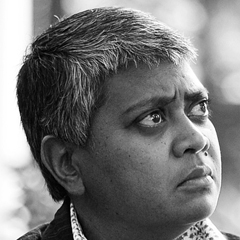 Avitha Sooful
Avitha SoofulIn my reading of this work, I am tempted to and almost seduced by the immediate crutch of a colonial critique that is rooted in positioning the rider and horse within a Eurocentric frame. Instead, I re-read the words spoken by the artist Mary Sibande in an interview held with Malibongwe Tyilo (2021) from the Daily Maverick that crystalises Sibande’s thinking. “My work is not about complaining about apartheid, or an invitation to feel sorry for me because I am black and my mothers were maids. It is about celebrating what we are as women in South Africa today, and for us to celebrate we need to go back, to see what we are celebrating. To celebrate, I needed to bring this maid” (Tyilo 2021).
In summary, Sibande speaks of celebrating black women today and this is vested in the courage that black women had during apartheid to protest against such experiences. It was my responsibility as a researcher to seek out these celebratory moments that Sibande speaks about in her work. In response to the sculpture The Reign (2010), the artist portrayed Sophie riding a black horse that stands on its hind legs referred to as rearing. The rearing of a horse is associated with aggression, disobedience, or pain that is experienced by the animal and in this case, the horse appears to be a mare rather than a stallion. The rearing can also be caused by an inexperienced rider however, it appears that Sophie is calm and in full control of the horse that she rides. Would this animal not be a metaphor for all black women during apartheid in celebration of their aggression, disobedience and pain endured while facing the inhumanity that was meted out to them? In retaining this thought, would Sophie then not be a symbol for all the black female leaders who led the women’s struggle during apartheid and who were also labourers on the farms and domestic workers in cities?
I think that Sibande deliberately played with the pronunciation of the words reign and rein when she titled the work. On the one hand, the work references the reign of black women who were revered as queens when they marched and protested their abuse. The fact that they were severely undermined by apartheid restrictions made them more militant than men. During the years of abuse under apartheid, anger festered within black women, giving rise to 60 000 women who marched to the Union Buildings in Pretoria in 1956, a protest against the pass laws and the 1957 Public Utility Transport Corporation (PUTCO) bus boycott which began in Alexandra. Women also formed the Natal Organisation of Women (NOW) in 1983, The Federation of Transvaal Women (FEDTRAW) in 1984 and the United Democratic Front Women’s Congress (UDFWC) in 1987. Women as members of these organisations protested and marched against high rents, increased food prices and demanded the release of incarcerated black leaders.
Sibande also references rein in this work that indicates the control that the rider has on the horse or the female leadership over the thousands of women who marched on apartheid via protest marches and the formation of women’s organisations. This idea of control via the use of a rein is indicated by the blue length of the rein attached to the horse that Sophie loosely holds in her hands. This shows that Sophie does not require or impose an aggressive response to the rearing horse but allows the horse to perform as Sophie does sitting on its back. In this paused moment, control is about leadership that is asserted without force.
The Reign (2010) appears to include the seeds of democracy with Sibande’s use of the purple undergarment that the rider wears. This introductory period would be 1989 into the 1990s when the African National Congress and many other anti-apartheid organisations were unbanned, and many political prisoners were released including Nelson Mandela which allows for the greater celebratory moments that Sibande refers to. The year 1989 is significant apart from it being the year when violent protests took place nationally, in schools, universities and on the streets. It was the year when the police used purple dye in water cannons to spray protestors, a dye that did not wash off easily and was referred to as the purple rain.
When one considers the idea of protest during apartheid, it was a performance by a mass of people, a performance that included song, dance, body gestures and movements that emulated, ridiculed, and promoted a different approach to the ‘norm’. The rearing horse is a performance indicative of the protests that fuelled the journey to democracy. A journey that demanded sacrifices from black people of their time, lives and brutality that can only be imagined. In my view, the meters of the blue dress that Sophie wears is a metaphor for the millions of workers who participated in this struggle. The sculpture is a metaphor for the black female struggle during apartheid, her struggle against patriarchy and a demand for equality that was situated within the broader apartheid struggle. These two struggles gave birth to the adoption of the Women's Charter (1954) and the Freedom Charter (1955) in Kliptown, Soweto.
There is no doubt that the work is a critique against colonial rule however, the manner in which Sibande has invented and presented the work, is saturated with the achievements of black women within metaphors of significance that describe the black female struggle without pity. It celebrates black female achievements in eroding the inhumanity imposed by apartheid specifically on women who endured the slurs and oppression of race, class and gender.
The fact that Sophie sits with her eyes closed, allows her to reminisce about the periods that announced the celebration of black women’s victories against the apartheid beast through women’s protests, boycotts, arrests, torture, fragmented family lives and mass marches. The domestic attire is Sibande’s prop for the historical enactments that define black women’s contribution to the struggle against apartheid.
In my view, Sibande’s work The Reign has encapsulated black women’s struggle not only against apartheid but their right to equality within a South African democracy.
References:
- Tyilo, M. 2021 Iconic South African Works: Mary Sibande’s ‘The Reign’. Daily Maverick. 22 June (online)
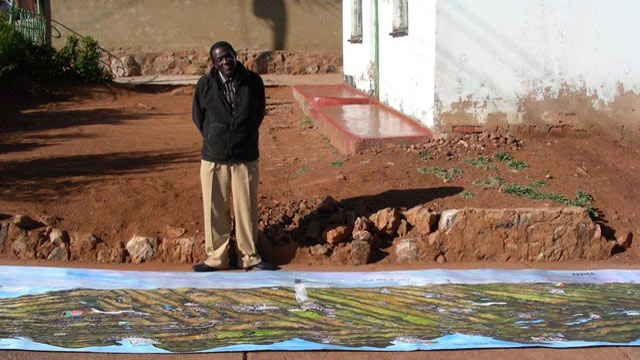
-
 Elfriede Dreyer
Elfriede DreyerMatiyane depicts cities of the world in the form of large mixed-media panoramas, utilising a naïve style of schematic outlining and an almost unsophisticated usage of coloured pencils and crayons, not unlike the early travelogues of the Renaissance and colonial explorers. In his panoramas, the landscape is flattened out into a subjective urban picturesque adorned with the city’s commercially most well-known markers functioning as a concise overview of or introduction to its most important historical events and its icons. Although Matiyane generally presents wide panoramas of cities, thus ‘walking’ multi-viewpoint compositions, he often creates panopticon-like designs in which he functions as a kind of ‘watchman’ surveying the city from a single point of observation – his own. In the late eighteenth century, the English philosopher and social theorist Jeremy Bentham coined the idea of the panopticon as a particular type of institutional building design that could allow surveillance by a single watchman in such a way that the entire institution could be surveyed from a single angle. The term ‘panopticon’ has been derived from Panoptes in Greek mythology that was a giant with a hundred eyes and known as a very efficient watchman. Bentham's architectural designs were very much aimed at the design of institutions such as prisons, for instance, or corporate environments, where inmates or workers could be surveyed without them realising it. Bentham’s ideas acted as precursor to twentieth-century technology such as closed-circuit television (CCTV).
Having been territorialised under the apartheid regime of segregation and living in Attridgeville a township outside Pretoria, the country’s administrative capital, Matiyane embarks on a kind of symbolic remapping of these histories. Operating without sufficient transport and with minimal equipment and art materials places limitations on his mobility and professional practice; within the context of the strenuous context of his daily battles, the spectacularity of powerful world cities and their apparent glitz and glamour to him seem like places of pleasure and the world like a global utopia where poverty and agony can be forgotten. In his Panorama of Africa: Cape to Cairo, Matiyane expresses a particular sense of place and a human condition, echoed in Alice Ming Wai Jim‘s (2008:264) description of Hong Kong in ‘Mediating place-identity: Notes on Mathias Woo’s A Very Good City’:
Over the last decade, contemporary art in Hong Kong, informed by travel(ing) theory, the special administrative region’s ambiguous (post) colonial-national-global connections and its inimitable set of historical and cultural situations, has been preoccupied with the themes of mobility, transition, and location in its representations of the city. This fixation, or, rather, the urgency of its mediation in not only artistic but also cultural, economic, and political arenas is inextricably linked to an ongoing elaboration of a Hong Kong identity. But assertions of “who we are” are often intimately related to suppositions of “where we are,” and ideas captured in the environmental psychological concept of place-identity.
Matiyane’s sense of identity and notion of ‘who he is’ is similarly tied to ‘where he is’, but virtually he can be anywhere. In every panorama, the artist traces the contemporary city’s ontology of mobility and transitivity in images of technology, airplanes, trains and boats. To him these images represent power, positive energy and dynamism, being tropes of transition and movement towards improvement, development and transformation. His utopian imagery can be interpreted as being populated by a multitude of heterotopic elements, such as powerful personae and images of transitivity represented by trains and boats that function autonomously but concurrently in close relation to their socio-cultural and geopolitical contexts; as liminal instruments connecting space and place; and as vigorous agents of change. In a work such as Panorama of Gauteng (2014), for instance, the artist included images as well as the life history of Nelson Mandela, interpreted as the as an iconic symbol of transformation and change, and in Panorama of Africa: Cape to Cairo, he once again presents Mandela as the most powerful legacy in Africa. It becomes a stratagem of power mediation to point out the country’s instruments of advantage within the global sphere of competition. His vision radiates optimism and hope and deconstructs the notion of the processes of historisation as categorically fixed, predetermined and non-negotiable.
Through the act of being empowered to depict any place in the world, the artist constructs his identity in the domain of the global self that utopianistically interacts with perceived spectacular environments. By mostly depicting cities that he has never been to, Matiyane expresses a desire and a longing for the exotic Other, yet his relationship to place is transmutative in essence. He imagines places where the home of the place–identity involves a process in which the self and local become metamorphosed into the global world. The artist becomes a ‘nomad’, displaced and diasporic in his pursuit of fame, wealth and global stardom through the fusion with ‘famous’ and ‘successful’ cities in his depictions. Global psychogeography is created in which cultural disparities are flattened in renderings of cities and their surrounding landscapes, each endowed with air and ground transport, patterns of housing, own histories, a national flag and a city centre. Becoming ‘playful masquerading’, the artist’s presentation of panoramic landscapes imbued by factual information makes the real, perceived and imaginary differences between cities, cultures and worlds fall away. Surveyed through the panopticon framework of his panoramas, there are superficially neither perceivable binaries of have and have-not, poverty and wealth; nor anxieties, losses or racial discrimination. East meets West meets Africa in a global blueprint of urban patterning.
By crossing the borders of the self and the local in his depiction of cities, Matiyane becomes a virtual flâneur of the cities of the world and a cartographer of imagined spaces.
Reference
Ming Wai Jim, A. Mediating place-identity: Notes on Mathias Woo’s A very good city, in Asselin, O, Lamoureux, J, Ross, C (eds). 2008. Precarious visualities: New perspectives on identification in contemporary art and visual culture. Montreal & Kingston/London/Ithaca: McGill-Queen’s University Press.
About the artist
Major exhibitions since 2008
2018, Venice Architecture Biennale, Japan Pavillion
2018, Titus Matiyane’s Cities of the World, ZAM, The Hague
2014, Cool Capital Biennale, curated by Elfriede Dreyer and Adele Adendorff. Panorama of Pretoria: Mamelodi to Soweto
2014, Reserve Bank, Cool Capital Biennale exhibition. Panorama of Pretoria: Mamelodi to Soweto
2013, Royal Academy of Fine Arts, Artesis University College, Antwerp. Group exhibition, Nomad bodies curated by Elfriede Dreyer
2012, Stevenson Gallery, Johannesburg. Panorama of Polokwane to Sasolburg
2012, Fried Contemporary Art Gallery, Pretoria. Group exhibition, Me 3, curated by Elfriede Dreyer
2011, La Société générale, Casablanca, Morocco. Cities of the world exhibition and Panorama of Western Cape. Curated by Annemieke de Klerk
2010, Fried Contemporary Art Gallery, Pretoria. Group exhibition, Cities in transition, with Eric Duplan and Lucas Thobejane, curated by Elfriede Dreyer
2010, Lille Métropole Museum of Modern, Contemporary and Outsider Art. Panorama of Lille
2010, Big 5 Festival, Teater aan het Spuy, The Hague. Panoramas of Cape Town, Berlin, Tanzania, Mali, Dubai, Johannesburg, Mpumalanga and KwaZulu Natal. Curated by Annemieke de Klerk
2009, UJ Gallery. Cities of the world. Panoramaas of New York, Pretoria, London, Dubai, Kwazulu Natal, Pietersburg to Sasolburg
2008, Aedesland, Berlin. Cities of the world. Curated by Annemieke de Klerk
2008, National Museum Of Mali, Bamako. Cities of the world. Curated by Annemieke de Klerk
2008, Fried Contemporary Art Gallery, Pretoria. Group exhibition, On the globe, with Pieter Swanepoel and Diek Grobler, curated by Elfriede Dreyer
2008, Delft University of Technology, Faculty of Architecture, Delft. Cities of the world. Curated by Annemieke de Klerk
Publications
- Annemieke de Klerk, Melinda Silverman, Stephen Hobbs, Wytze Patijn, 2007. Catalogue for the exhibition, Titus Matiyane: Cities of the World. Afdeling Bouwkunde, Technische Hogeschool Delft. 010 Publishers. Published for the purposes of the Cities of the World travelling exhibition, 2007- 2008 and the manifestation "African Perspectives" held December 6-8,2007, both commissioned by the Faculty of Architecture of Delft University of Technology.
- Makorakora: Shaping wire into vehicles. 1985. SA Today. Article featuring photograph of model of spacecraft “Challenger” made by artist.
- Rankin, E. 1994. Images of metal: Post-war sculptures and Assemblages in South Africa. Johannesburg: Wits University Press.
published February 2020
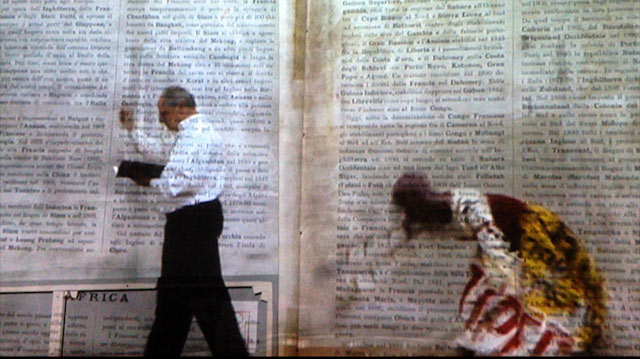
-
 Elfriede Dreyer
Elfriede DreyerOriginally, South Africa was discovered by the Portuguese in 1488, but this was not permanent, just like the Dutch settlement in 1652 that is generally viewed as the birth date of the country. In 1795 the Cape Colony fell under British rule again; it reverted back to Dutch rule in 1803; and again to the British in 1806. From the onset of colonisation, the transatlantic slave trade was immense and especially South-East Africa was a main source of slaves. The colonisation of Southern Africa had as main purposes the setting up of refreshment posts where food and other essential stock could be collected, as well as the trading of slaves. The indigenous nations were subject to the whims and fancies of the colonisers, and they were sexually and labour-wise exploited; families were broken up and those who resisted were punished and often killed by whipping, shackling, hanging, beating, burning, mutilation, branding and rape. In many cases the slave ships themselves were killer machines since the slaves were packed into the haul like sardines with little attention to hygiene.
In addition, South Africa is extraordinarily rich in mineral resources and gold, which has brought about massive wealth, but also instability. Johannesburg was established in 1886, due to the so-called gold rush, with fortune seekers and diggers flooding to it from all over the world to the country. Since then the gold mines have attracted an influx of locals as workers, which contributed to much nomadism, but especially since 1948 during apartheid, such mine workers were ironically allowed to work underground but once aboveground they had to return to townships outside the large city.
Since 1948 when the country became locally governed by the Afrikaner-dominated right-wing National Party, whilst still regarding Queen Elizabeth II as head of state as a relic of British imperialism, attempts were made to throw off the colonial yoke permanently, and on 5 October 1960 the country became an independent Republic. At all times there have been resistance to the ruling governments by groups of all cultural origin, but especially during the 1980s and early 1990s there was severe resistance to the ruling policy of segregation: a period that saw much abuse, violence and many incarcerations. In 1990 Nelson Mandela as leader of the oppositionist African National Party was released from prison and in 1994, as part of a peaceful handover, he was inaugurated as the new president of the country with the ANC as government.
It is clear that, as a country, South Africa has been torn apart by politics, and especially by the impact of colonisation. The postcolonial impulse is therefore inordinately robust in this part of the world. The notion of the postcolonial is closely linked to that of the postmodern, and according to Gen Doy (2000:204), author of Black Visual Culture: Modernity and Postmodernity, much of current art practice is “often relating to issues discussed in postcolonial theory such as identity, displacement, mixing of cultures and peoples (hybridity) and indeterminancy.” Post-colonialism could be viewed as a response as well as a resistance to colonialism, whereby issues such as historical events, beliefs, traditions, conventions and languages are evaluated and critiqued in an attempt to uncover the superiority and centrality of certain systems of thinking. Ideas of superiority and power relations play a core role in postcolonial investigations, but a main problem in much postcolonial theory is to nurture the idea of static black culture, which in reality is constantly changing and adapting to new developments and ideas. Decoloniality or decolonialism originated as a Latin American movement which focuses on understanding modernity in the context of a form of critical theory applied to ethnic studies. Similarly it is a response to colonialism. It seems to be more radically critical than postcolonialism which indicates more of a general resistance. Coloniality is generally understood as the sentiment and logic essential to the evolvement of Western civilisation from the Renaissance to today. Foundational to decoloniality is the deconstruction or decoding of the coloniality of power. This logic is commonly referred to as the colonial matrix of power and has its own set of theories and methodologies.
Since the 1980s, the work of internationally renowned South African artist William Kentridge (b. 1955, Johannesburg) has mainly served the purpose of commenting on socio-political issues in the country. He is best known for his prints, drawings, operas and animated films. A work of special interest is his The refusal of time of 2012 (hereafter referred to as ‘TRT’), since it presents a clear image of postcolonial legacies and decolonial sentiments that have resulted in an eclectic mélange of narratives, experiences and events. Particularly interesting is also how the artist mixes various kinds of technologies in sophisticated way.
TRT premiered at Documenta 13 (2012) in Kassel, Germany, specially commissioned by the curator of Documenta 13, Carolyn Christov-Bakargiev, and since then it has been exhibited at various other venues in Japan, Italy, Australia, the United States, Brazil, Holland and Finland. The work was produced in the artist’s studio in the Maboneng district in downtown Johannesburg and as a prelude to Documenta 13, a series of notebooks entitled 100 notes – 100 thoughts was published by Hanje Katz in 2011. In South Africa, the artistic production was shown first from November to December 2014 at the Johannesburg Art Gallery and then at the National Gallery in Cape Town in 2015. A collaborative piece, the artwork entails teamwork with Peter L. Galison, Philip Miller and Catherine Meyburgh. The chamber opera, Refuse the Hour (made in collaboration with Miller, Meyburgh, Dada Masilo and Galison) - with an international cast of eleven, including dancers, musicians, performers and vocalists - is the theatrical accompaniment that laid the groundwork for the artwork and is also an independent production. Prominent in the production is the artist presenting a lecture-performance on productive procrastination, myth, entropy, empire, black holes, the ancient Greek myth of Perseus and Einstein, surrounded by animations, swirling dancers, singers with megaphones, instrumentalists and a solitary physicist (BAM | Refuse the hour 2015).
As an installation, TRT comprises five digital film projections on thirty-minute loops and a large automaton, occupying the entire space of a single, large hall. In the dark enclosed space of TRT, a hive of moving figures and intersecting stop-frame imagery ensues in the five film projections, creating an impression of vibrating energy. The complex imagery includes the artist as one of the performers, walking, reading and performing acts such as changing hats; a female figure, dancing and producing ‘wagon wheels’ and other acts; figures in comical scenes in colonial rooms à la George Méliès; figures in a laboratory-like space, maybe busy with experiments; dispersing and flying anamorphic fragments becoming human figures, representing a kind of chaos rendering; a rhinoceros; silhouettes; ticking metronomes and clocks; and imagery of inter alia megaphones, starry skies, stop-frame animations and drawings. On the other hand, chaotic time is presented as humanly, existentially and imaginatively inferred. Mortal conceptions of the physical body appear in the form of chaos imagery of disintegrating matter; and swirling moving figures, transgressed boundaries, and fleeting script and words render an awareness of temporality and transience in order to defy conceptions of certainty and fixed systems. The moving human agents in TRT ‘transgress’ the confines of the delineated boundaries of each projection by walking across the edges, and by so doing become displaced and emplaced in in-between, liminal zones.
Kentridge positions the human body centrally in TRT. Technically, his scientific and conceptual method levies each projection that transforms intermittently from the graphic, more abstract imagery into the stop-frame animations to human figures (including the artist himself performing), clothed idiosyncratically in contemporary as well as traditional outfits. Other transmutations include a turn to colonial comical scenes with actors performing in rooms with historical architecture; walking and dancing figures; and figures in shadow procession, recalling some of Kentridge’s well-known earlier works. The sculptural automaton and ticking metronomes are given equal presence in the five film projections, which generates the comment that technological development has shown progress from elementary, handmade technologies to advanced digital technologies, but that the embedded techniques and processes are equally relevant.
In TRT, preference is given to a conceptual engagement with the human technological condition instead of a lofty statement about science itself. Kentridge ‘relegates' science to technology and succeeds in generating comment and meaning through the very processes of the techniques used. In the five ancillary virtual ‘rooms’, an artificial environment has been created, entrenched in the technologies of the digital age, which has borne witness to emerging engineerings such as electronic communications, artificial intelligence and biotechnology. Symbolically comment is generated in terms of politics as ‘experimentation’ and human beings as the victims thereof. Set in virtual reality, the rooms in the Méliès-type comical scenes in TRT resemble colonial architecture, but notably these are graphically hand-drawn. Through very technique of the linear and expressive sketching of doors, windows and other paraphernalia, heterotopic ‘frames’ are created that resonate with the racial and gender regimes of the histories of colonial culture in South Africa. Several spaces are represented in the work, but in a dualistic sense they are both material and immaterial, and ambivalently premised.
The flying particles in TRT subtly reveal thin red lines, crossing and indicating geographical points of intersection, but without explanation of what they represent. Metaphorically they could function as boundaries, relational reference points, historical markers, psychographical moments or points of reference wherefrom the ‘walk’ into time takes place or even the liminal ‘place’ where life and death meet. The particles become chaotic and finally disintegrate, almost in reflection of the processes of memory and how everything fades in time.
References
Doy, G. 2000. Black Visual Culture: Modernity and Postmodernity. Gen Doy London: I.B. Tauris.
About the artist
William Kentridge (born 28 April 1955) is a South African artist best known for his prints, drawings, and animated films. His political perspective is expressed in his opera directions, which involves different layers: stage direction, animation movies, influences of the puppet world. He has staged Il retorno d’Ulisse in patria (Monteverdi), Die Zauberflöte (Mozart) and The nose (Shostakovich). Berg's Lulu premièred at the Metropolitan Opera in New York, and in 2017 Wozzeck (Alban Berg) premiered at the Salzburg Festival.
published February 2020

-
 Mahmoud Malik Saako
Mahmoud Malik SaakoThe Koma figurines did not only enrich the stock of African artwork but evoke the minds of a great culture represented or embedded greatly in these art pieces. These figurines have been classified into anthropomorphic (the use of human features), and zoomorphic (the use of animal features), based on the stylistic representation while some are both anthropomorphic and zoomorphic (they possess both human and animal features). They are some of the anthropomorphic figurines that have one head and two faces or one body with multiple heads while some have a head with a conical shape. Those anthropomorphic coned figurines are the most common types and are consisting of a head with a long conical neck or body.
The Koma figurines could be equated to those of Nok and Ife (in Nigeria), Sao (around Lake Chad), the Akan funerary clay figures (in southern Ghana), and the Jenne and Bankoni clay figurines of the Inland Niger Delta (in Mali). Beyond their artistic significance and historical products, the Koma figurines have generated some interest among intellectuals in and outside Ghana including antique dealers.
Before the scientific investigations commenced in the 1980s and 2006 onwards, the communities within this geographical area known as "Komaland" were encountering or recovering these terracotta figurines when they were digging for soil to build their homes. The people then referred to them as kronkronballi which literary means "children from an old-time". These figurines are either found in house or burial mounds within the area. The culture of the current inhabitants of the area where these figurines are found do revere their ancestors, and any disturbance of the ancestral graves or the removal of any burial goods either intentionally or accidentally must be expiated by sacrifices, and all the grave goods are reburied at the same place. Since the people are far remote from the creators or ancestors of these figurines, many of the damaged ones were either thrown away while a significant number of them were taken home and given to children as toys.
Moreover, art dealers in Ghana and West Africa recognized the commercial value of these Koma figurines long before the scientific investigations by the first anthropologists, archaeologists, and historians. These Koma figurines were, therefore, sold at the various art markets in northern Ghana (in Bolgatanga at the craft village) and southern Ghana (in Kumasi and Accra art centers) to foreign tourists. It is through this medium that Koma figurines have found their way into many European and Western museums.
Furthermore, scientific excavations in the 1980s and the subsequent excavations in 2006 onward by a team of archaeologists in Ghana and abroad, have attracted the attention of the world through conferences and publications. The Koma figurines were initially appreciated based on their aesthetic values but the subsequent archaeological excavations subjected them to more rigorous scientific analysis and historical classification such as social, cultural, political, and environmental. The scientific excavations have also to some extent put a stop to the numerous lootings of the sites that were hitherto very rampant.
The archaeological investigations in recent times and based on radiocarbon analysis from pieces of charcoal dated the site between the 6th and 14th centuries AD. But further investigations are still ongoing to identify the authors or creators of this supposed complex civilization in northern Ghana though, parallel has been made to the Lobi in Ghana and Burkina Faso.
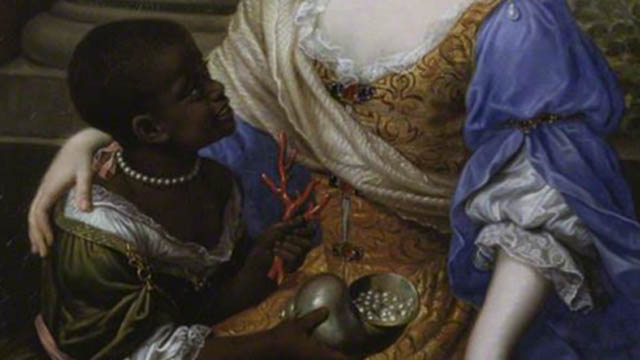
-
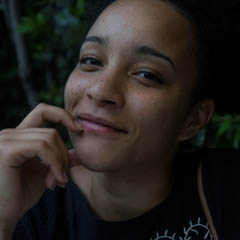 Leonie Chima Emeka
Leonie Chima EmekaIn 1682 a prominent French portraitist named Pierre Mignard (1612-1695) painted a large canvas of Louise de Kéroualle, Duchess of Portsmouth (1649-1734), one of many mistresses to King Charles II of England. The artist depicts her in a richly adorned dress, sitting on an upholstered bench against the background of a stone balcony that opens to a stormy sea. With one hand Louise de Kéroualle gently embraces her page, an African child. The fashion to hold black slaves, especially children, climaxed in the late fifteenth century, but also throughout the seventeenth century slaves were present in wealthy European households as servants.
Mignard’s painting lines up with other paintings of prominent provenance featuring African pages as an attribute of wealth: Titian’s Portrait of Laura Dei Dianti from ca. 1523 and Cristovao de Morais’ Portrait of Juana of Austria from 1535-1537 both depict an Italian respectively Portugal-based noblesse in company of an equally well dressed young African page. Like the duchess Louise de Kéroualle, Duchess of Portsmouth the young female page, whose name is not conveyed, is dressed in beautiful European clothes. More peculiar however is the child's expensive pearl necklace. In the late seventeenth century pearl necklaces were a fashionable accessory for European women of extensive wealth. Imported from the Caribbean, Pacific and Indian Oceans initially by Iberian traders — later also by British and other European traders — the white, oval shaped pearls were an important trading good and symbol of prosperity and wealth. As such the valuable jewellery seems rather out of place on the neck of the page. It seems much more appropriate on the neck of the Duchess.

Fig. 1, detail
Compared to her page, the Duchess’s jewellery appears almost humble, as she wears the same pearls on small earrings. In a much higher amount, the same pearls are mirrored in a shell that the laughing child offers to her serious looking owner. In the other hand the page holds a red coral; a material that has become exceedingly valuable in many regions of West Africa. The most famous example is the kingdom of Benin (today in the region of Nigeria), where the red coral rose to a symbol of royalty and was appointed for the exclusive use of the Oba (Benin sovereign) and his household. The red coral in the hand of the African child connects the picture to the intercontinental trading network between Europe and Africa.
European merchants traded red corals from Mediterranean regions with West African traders or sovereigns in exchange for goods such as gold, ivory or slaves. In all her appearance, from her beautiful dress to her valuable attributes the representation of the African page refers to the trading network, which preceded her presence in the picture next to the Duchess. The servant acts as an attribute of wealth — well-dressed she represents the wealth of the person and house to whom she is made to belong to.
On the other side of the equator, there can be found relief works to a similar effect that allows us to further investigate the historical intercontinental trading network. Many brass reliefs, produced by the royal brass workshop in the kingdom of Benin in the 16th and 17th century, acted as attributes of economic and political power of the royal court. They represented the influence of the sovereign and the wealth of the palace where they were exhibited. A large corpus of brass plagues adorned the palace, which was the economic, religious, political and administrative centre of the kingdom of Benin. One example, currently in the collection of the anthropological Museum in Berlin, depicts two dignitaries flanked by two Omadas (palace servants) before the background of the royal palace. All of them wear pearl ruffs and headgear made of corals. Similar to Mignard’s painting, the corals also function as indicators of the far reaching diplomatic relationship of the Benin palace and symbols of the interregional economic influence of the royal household. The main trading partners to the kingdom of Benin had been Portugal and later Great Britain to whom they sold slaves, gold and ivory in exchange for brass, corals and weapons. However dissimilar the artistic technique of oil painting and brass relief might seem, in the coral they share iconographic meaning. The commodity of red corals make reference to the trading network between Europe and West Africa.
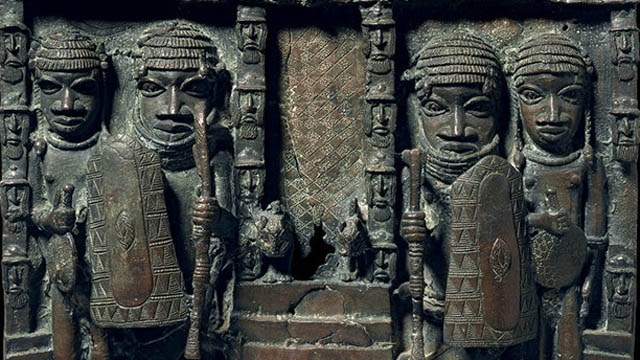
Fig. 2, detail
The trading relationships between Great Britain and Benin which were highly profitable for the rich and powerful in both kingdoms would change successively to an exploitative relationship; the final step to colonial subjugation was the British punishing expedition in 1897, which ended in the destruction of Benin and the robbery of the brass relief plaques to London, from where they were sold to institutions and private collections in Europe, the two Americas and Australia. Until today the royalty of Benin as well as the state Nigeria ask for restitution of the brass relief plaques and other works which were taken by the colonial power of Great Britain.
Peculiar about the Benin brass relief are the Portuguese heads that are engraved on the four palace columns in the background of the effigy. The Portuguese have a distinctive appearance with long straight hair and astonishingly long, pointed noses. In other reliefs the Portuguese are often depicted with Manillas, a ring in the shape of a horseshoe. The foreign metal of brass was imported to Benin by Portuguese traders. The valuable material, an alloy of copper and tin, supplemented cowrie shells as currency in the kingdom. As such the reliefs which adorned the royal palace were made of a material that circulated as money. The Portuguese merchants are depicted on a material which was an important means of their trade. Similar to the child holding the means of her enslavement in her hands, also the Portuguese heads are represented on and with the commodities which preceded their appearance in the imagery. Also British traders were depicted on brass reliefs, mostly with the attributes of armours, weapons and helmets.
At first glance the painting and the brass relief do not have much in common and a comparison seems rather pointless. One is an oil painting by one of the most famous portraitist of his time. The other was made by the prestigious royal brass workshop of the kingdom of Benin. When taking a closer look, however, one finds that both images — however different the outcome — both reveal similar means of constructing an image and its motive behind. The assets and people flanking the depicted patronages in the center of each image — on the one side the pearl necklace, red coral and the enslaved child, on the other the red corals, the manillas the Portuguese heads — build a network within the image that reflects on the economic trading network between both kingdoms. As both images were produced in the context of a royal court, and both intend to depict their far reaching trading relations, they may serve as documents to the complex histories and relations between the two kingdoms and if seen as such, may illuminate an important part of shard history that preceded the colonial era.

-
 Ebenezer Kwabena Acquah
Ebenezer Kwabena AcquahThis essay seeks to draw readers’ attention to the National Theatre of Ghana in order to recognize its relevance within the country’s visual cultural landscape. The National Theatre is a monumental edifice situated in the nation’s capital, Accra. It is supported by the government, and largely devoted to musical performances and stage productions, among others (Wilson, 1988). Theatrical performances in the National Theatre are part of the nation’s cultural heritage and present the people with creative thoughts and reflections on life. The establishment of the National Theatre of Ghana was, to a large extent, largely supported by the National Theatre Movement of the 1950s by cultural experts like Efua Sutherland and Professor J. H. Kwabena Nketia (Agovi, 1990).
The National Theatre was completed on December 16, 1992, commissioned and handed over by the Peoples Republic of China to the Government of Ghana on December 30, 1992 (www.nationaltheatre.gov.gh/history/ retrieved 2020, August 7). The Theatre was designed to be used by people from all walks of life and diverse age groups. Since its inception, the National Theatre has hosted a number of performances and exhibitions from both local and international communities with the intention of promoting visual culture in a heterogeneous global landscape.
Location, Structure, and Artistic Appreciation
The boat-like building is located near the junction of Liberia Road and Independence Avenue, adjacent to Efua Sutherland Children’s Park, in Accra’s central district.
Three distinct structural forms comprise The National Theatre building, with each structure housing its own performance group/company: the National Theatre Players, National Dance Company, and the National Symphony Orchestra. A closer look at the entire structure reveals three distinct parts aside from the structural forms mentioned earlier. The upper part portrays three boats joined together, supported by rectangular piers with curved outward projections, and a rectangular base with entrance and exit openings. In fact, the entrances and windows seem to be carved out of the rectangular base. All of the entrances are elevated from the ground level with a staircase, which leads up to the glass entrances and into the building (https://3rdworldarchitecture.wordpress.com/2018/02/04/national-theatre-of-ghana/ retrieved 2020, August 7). The base is designed to create a projection at the entrance that provides visitors with the necessary protection from inclement weather.

National Theatre. Aerial view over National Theatre. Photo: Cheng Taining, 1997, link: https://archnet.org/sites/1413/media_contents/15315.
Above the base, there are distinct white forms. They taper upwards from the centre and meet towards the outside of the base. The walls curve inwards and are lifted just above the solid base, with glass in between them, making the base and white forms more distinct and thereby reinforcing the differences between them. Small white tiles cover these forms, giving the building its shape and colour. A closer look at the shape of the National Theatre reveals a display of three boats/canoes or fishing vessels that meet at a central point, which takes the form of a captain's bridge. The entire structure is supported by curvy piers and rests on a rectangular base as presented in the image above.
A careful study of the architectural ‘language’ of the National Theatre reveals a combination of interior and exterior Asian architecture, symbolic Ghanaian forms and boat construction. Generally, Chinese architecture is based on the relevance of influential local cultural traditions and adherence to hierarchy (Lianto, 2020). It prioritizes spatial designs with balanced symmetrical central pivots and a reverence for nature and aesthetics. Additionally, the dominant use of red represents happiness, which is also found throughout the interior of the National Theatre.
The curvy structure of the theatre in general nods towards Asian architecture. The seating space is segmented along stepped floors and the undulating structured ceiling is reminiscent of waves with openings defined by lighting systems. In fact, the use of sculptural forms and other Ghanaian art works effectively combine with the architectural structure to convey the visual cultural landscape of the National Theatre.
Sculptures in Public Space
Sculptural forms executed by Ghanaian artists are carefully displayed outside the National Theatre. The following image shows a sculptural work that depicts a Sankofa, a traditional Ghanaian symbol.
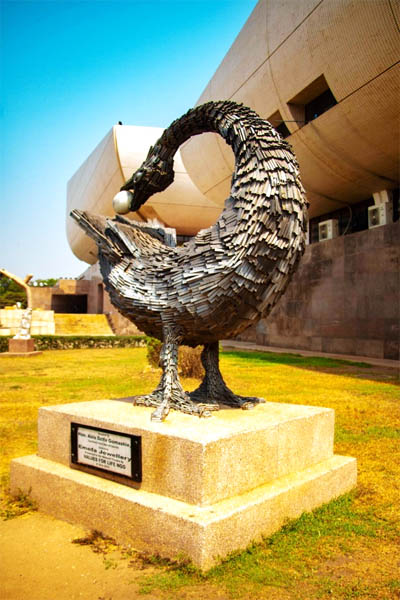
Emefa Jewellery, Sankofa, 2015, H: 11ft., Presented by Values for Life NGO to the National Theatre, Photo: Wisdom Dzigbordi.
The Sankofa represents taking the opportunity to reflect upon the past and applying significant and relevant ideas to current developments. Thus, the past has something relevant that must be considered and utilized as part of contemporary practice.
Education and Cultural Relevance
The National Theatre of Ghana is a significant cultural centre in Accra, Ghana and the entire form of this visual cultural structure provides people from diverse walks of life a place for entertainment and relaxation. The building is a visual architectural icon for the city and is an influential hub for creative art performances. It therefore serves as an important edifice to promote the arts, offering both Ghanaian and foreign artists a place to express their creativity.
In addition to providing entertainment and relaxation, the theatre seeks to educate people and stakeholders (who periodically use the place) on the responsibility of the National Theatre of Ghana as a strong cultural institution that ensures the development of culture, including the performing arts, and the need to respect cultural values. Through this education, the activities of the theatre are brought into focus, preserved, promoted and transmitted to the next generation for posterity and the promotion of visual culture across the world.
References
- Agovi, K. E. (1990). The origin of literary theatre in colonial Ghana, 1920-1957. Research Review, 6(1), 1-22.
- Frimpong, M. (2015). Towards an audience development plan for the National Theatre of Ghana. Unpublished Thesis. University of Ghana, Legon.
- Lianto, F. (2020, August 9). Building structure system of Chinese architecture, past and present. Retrieved from https://www.academia.edu/33602498/BUILDING_STRUCTURE_SYSTEM_OF_CHINESE_ARCHITECTURE_PAST_AND_PRESENT
- National Theatre of Ghana (2020). History of the National Theatre of Ghana. Retrieved on January 10, 2020 from http://www.nationaltheatre.gov.gh/history
- Wilson, E. (1988). The theatre experience (4th ed.). New York: McGraw-Hill Book Company.
- 3rdworldarchitecture.wordpress.com (2018, January 4). National Theatre of Ghana. Retrieved from https://3rdworldarchitecture.wordpress.com/2018/02/04/national-theatre-of-ghana/
published August 2020
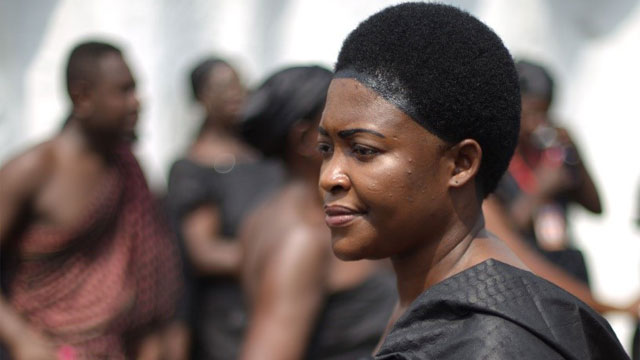
-
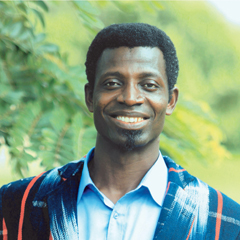 Osuanyi Quaicoo Essel
Osuanyi Quaicoo EsselDifferent cultures may practise different hair beauty culture. Some of the hair beauty cultural practise could be unisex or may distinguish between sexes. In this instance, hair becomes a tool for sexual differentiation and serves as a precursor to one’s gender. It may tell which part of the world a person hails from. That notwithstanding, one may borrow hairstyles from different cultures other than his or her own for fashionable reasons since fashion inspiration is multicultural. Based on the cultural orientation and the role of a particular hairstyle to a group, society or institution, hair aesthetic ideals may be preserved as a tool for identity construction. A typical example of a hairstyle that has remained resilient even in the face of (neo)colonial and imperial hair aesthetic regimentation of the West on Africa is kentenkye hairstyle (Akan Women’s Hairstyle, 2008), popularly renamed as dansikran. Legendary has it that, queen mother Nana Kwaadu Yiadom II, (1917 - 1945), the sister of Nana Prempeh I, of the Asante Kingdom, performed the majestic Adowa dance during the restoration of the Asante Confederacy around 1935 in her kentenkye hairstyle, which inspired the then Governor’s description of her kentenkye hairstyle as a 'dancing crown' (Akrase, 2008) due to its visual effect during the dance. The phrase ‘dancing crown’ was linguistically corrupted as dansinkran which has become the popular name of the hairstyle.
The dansinkran hairstyle is noted for its simple, yet iconic stature in purely indigenous Ghanaian cultural milieu. Its selection was informed by its historical epoch, purely indigenous natural hair beauty care and treatment and socio-political significance in Ghanaian chieftaincy. It has proven to be an unadulterated Ghanaian hair fashion practice necessary in the decolonisation of hair fashion discourse. It is important in the decolonisation of hair discourse in the sense that it is purely Afrocentric which has evolved from its symbolic status to contemporary appropriation. The use of purely natural and sustainable hair treatment cosmetics with little or no harmful effect on the body makes it worthy of handing down to youth. This is because, there has been influx of artificial hair cosmetics with detrimental dermal effects which many youth subscribe to in the name of modernity without recourse to its side effects. The historical significance and interest of this hairstyle for posterity, especially as something of Africa practise, contributes in this regard to the decolonisation process. Dansinkran polity and politics among Akan kings, queens, chiefdom and the society in general reinforced its choice.
This hairstyle is achieved by trimming down the peripheries of the crown of the head almost to the skin while the remaining portions are trimmed to define the oval shape of a wearer’s head. The haircut gives the head a calabash-like shape. A natural black pomade-like colourant mixture composed of powered charcoal, soot and sheabutter, is then applied to the hair to give it intense blackened appearance. Charcoal has been in use for hair treatment in precolonial Ghana for many centuries. Considering the intense heat coupled with dust particle in Ghana and other African countries, the use of charcoal as hair treatment helped to protect their hairs from dust build up, dirt, oil and sebum that settled on scalp and negatively affects hair quality and growth. It implies that charcoal promotes hair growth. The natural hair colourant used in this process armours the hair with lustre and protection against bacteria and fungi. It nourishes the scalp and protects it from dandruff infections and maintains the hair’s natural moisture level. The eye lashes are also darkened to complement the facial look of a wearer.
The haircut helps to focus on the facials of a wearer since the hair receives little or no elaborate ornamentation. Usually, queen mothers who wear this hairstyle are not supposed to wear earrings during possessions or durbars. Judging from the benefits of charcoal in natural hair treatment it is not surprising that it features as essential ingredient in modern cosmetics manufacturing.
The dansinkran hairstyle serves as a socio-cultural barometer, political signifier and as a religious marker. This hairstyle help to identify queen mothers and female kings from other females. It is a symbolic hairstyle that was a preserve of the Akan feminine chiefdom and royals. Some priestesses also wear this hairstyle. Politically, the hairstyle symbolises authority, royalty and power of a female king or queen mother. In this sense, the hairstyle is status-defining in terms of the social rank. It is considered as inevitable lifestyle heritage that needs to be preserved among the chiefdom. When a king or chief passes on, a queen mother who is not wearing that hairstyle is not allowed to pay homage to him/her.
In the case of queen mothers, they complement this hairstyle with a feminine Ghanaian fashion classic named queen mothers’ style. This classic consists of a wraparound fashion of a six-yard fabric that stretches from the chest regions to beyond the knee, which is accentuated by another six-yard fabric draped in toga style. The wearing of this classic in addition to the hairstyle has bestowed onto it, the name dansinkran, hence, both the hairstyle and the classic are named as such. Despite the symbolism of the hairstyle, it now worn by the youth in contemporary times. It has acquired the name sweat. The only difference is that the youth who wear the hairstyle do not apply the charcoal mixture on their hairs. It has become unisex hairstyle among the youth.
The Western hair superiority politics could not erode the many centuries old hair identity visual code and marker that characterised the majority of the chieftaincy institutions in Ghana. As a traditional lifestyle culture that has proved unyielding despite black hair discrimination and politics, it is an important tool in the decolonisation of Afrocentric hair beauty culture practice and education.
References
- Akan Women’s Hairstyle. (2008). Retrieved from https://www.abibitumi.com/community/culture/akan-womens-hairstyles/
- Akrase, N. (2008). Pomp, power and majesty. Retrieved from http://akrase.blogspot.com/2008_01_01_archive.html
published March 2020
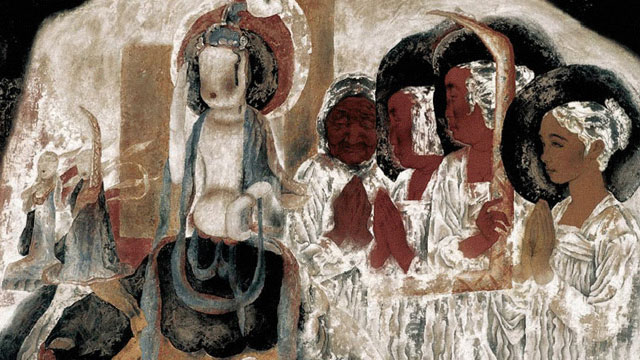
-
 Ming Zhang
Ming ZhangThe importance of the series entitled by "Dream of Dunhuang"
The Dunhuang Dreams series from the 1990s marked the emergence of a new opportunity for meticulous figure painting. After his in-depth study of the Dunhuang murals and his many field trips, Yongli Tang drew inspiration, adhered to the core of traditional painting and incorporated the expressive strengths of Western painting to achieve a bold innovation in artistic expression.
In the creating of meticulous figure paintings, there are three crucial ingredients, including the use of line, modeling and coloring.
Modeling and Line
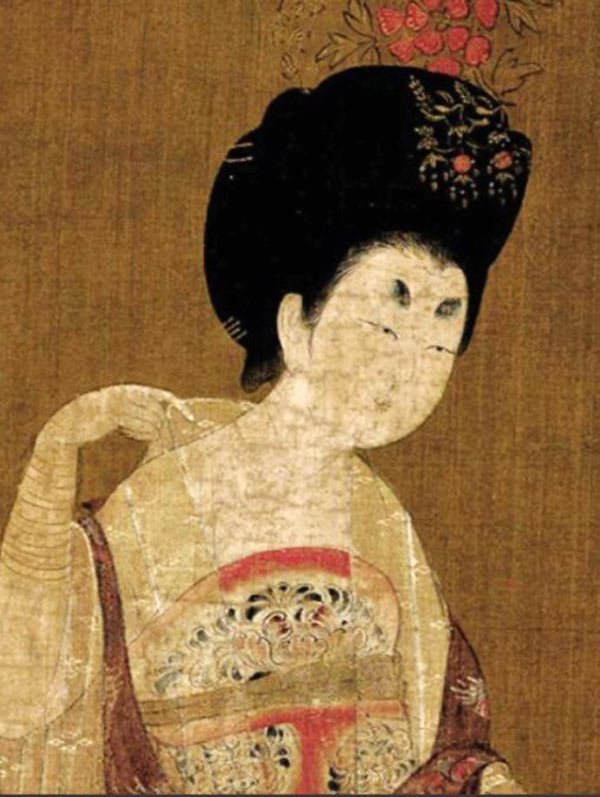
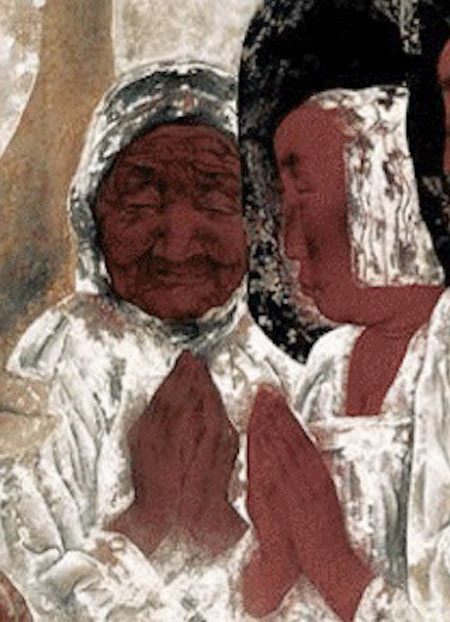
Fig. 2: Part of painting of hairpin ladies in the Tang Dynasty ,Zhou Fang, active late 8th–early 9th century, Ladies Wearing Flowers in Their Hair, handscroll, ink and color on silk, 46 x 180 cm, Liaoning Provincial Museum, Shenyang province, China - copyright: public domain / Wiki Commons.
Fig.3: Part of Memories Of Childhood, Yongli Tang, 1998, Copyright: the artist.Line is the most basic language of Chinese painting, and Chinese painting is concerned with the use of frames and calligraphy and focused on the expression of the structure and rhythm of the object's form, instead of the shading and the in-depth of the object. The series of works is mainly presented by the use of line in the traditional painting while the shading and the linear perspective of the sketch is enlighteningly integrated in the form of relief. The series Dream of Dunhuang innovatively uses linear sketches to portray and shape exaggerated figures, with extreme variations between lines. The spirit of the lines fits the mood created by the picture, while the light and dark faces are integrated to provide a detailed portrayal of the main figure. The juxtaposition of realistic and extracted Dunhuang symbols, modern and ancient figures, temporal and spatial wholeness, and a conceptual form of expression are harmoniously presented in the picture, and the modeling has both traditional cultural roots and modernity.
Coloration
Dunhuang murals have undergone thousands of years of natural and man-made changes in color, with some peeling and mutilating. It looks like a rich, deep, ancient palette that allows the viewer to achieve a secondary aesthetic pleasure. Being in the sacred, quiet rock cave, the soul is purified, and the individual remains in the flow of the years, achieving spiritual transcendence.
In order to pursue the sense of history in Dunhuang murals, Yongli Tang used Black and White as the main colors and interspersed with azurite, stone green, earth red and other traditional colors for embellishment. The color of cooked brown was used to present the figures’ skin. The author could not be confined with the realistic object so that he exaggerated color changes to highlight the subjective emotional orientation of the picture.
In the series of works, virtual dyeing method was innovatively applied to highlight the freehand of the picture. Dyeing high places or low places could be switched freely according to needs, and dyeing is not limited by the line, which presents a vague sense of void. In addition to the traditional color setting techniques, for example, flat painting, rendering and over-dyeing, the author developed the method of shedding. The thick painting and shedding methods set off each other. To be more precise, the author piled up degummed white powder on the base color, then chafed and patted, with some of the white powder falling off naturally. The rest was blended with the base color. The use of large areas of white color does not cause the picture to be chalky. During the painting process the shedding of white color is like the painting of the freehand work. With the controlled brushwork, there are uncontrollable and accidental factors, which gives the mottled and dappled left on the murals by the years. The thickness, light and dark, cold and warm of the white color is presented in an exceptionally subtle way, creating a harmonious and quiet relationship between religious culture and modern beliefs.
Material Texture
Stable social and cultural environment made the painting language of meticulous painting was solely and smoothly developed for quite a long time. In the late 1980s, political, economic and cultural changes leaded to the activation of the painting community and the reflection on tradition. New painting materials were triggered a change in creative thinking.
In his artistic practice, Tang Yongli discovered the texture beauty of the materials and used it in the painting process: mineral colors have a sense of luster, strong covering power, and can be repeatedly modified; the watercolor is rich and delicate; the shedding effect of degummed white powder reproduces the oxidation and wind erosion of mural; the layering of these colors gives the picture a sufficient sense of history and ethereal inspiration. Tang Yongli uses this as an opportunity for a new language, to expand and to strengthen it, as well as to form a new language paradigm. The beauty of the material texture becomes part of the creation and an aspect of the work to be tasted. The author chooses colored silk as the bearer, which is tough and can be used in a variety of techniques such as thick painting, shedding and reverse painting, and pigments such as ink, mineral color, lithopone powder and watercolor are used.
Classical meticulous painting can only do addition, not subtraction. The use of these material techniques breaks the border of the painting on silk. It also allows us to add and subtract freely and to change a single direction to a multi-directional expression (i.e., highly realizing self-consciousness). The expression of the free state of mind, workmanship, painting, color, texture and other factors become a new organism.
Summary
The series of Dunhuang Dream presents the interaction of multiple factors, scholarly artistic interrogation and the creation of diffuse imagery, as well as the attribution and transmission of spirit. It opens artistic horizons for the modern development of meticulous painting. The development of Chinese contemporary art has always been to move forward with the review and inheriting of history. They find visual art resources to reinterpret, redevelop and re-create them with a contemporary view, thinking and aesthetics, which will form a dynamic and growing tradition.
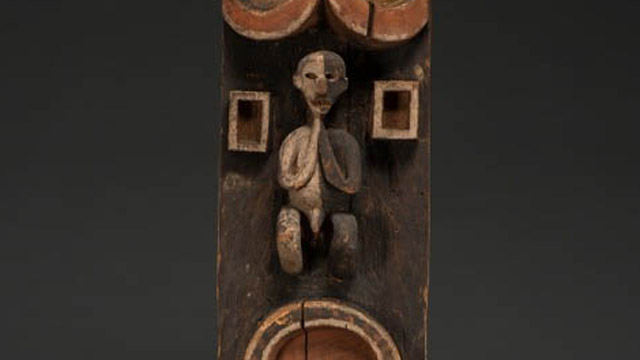
-
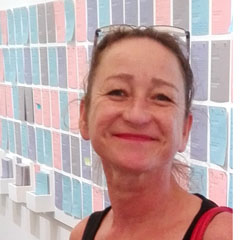 Karin Guggeis
Karin GuggeisObjects from the Global South in early collections of the Global North often lack any information about their specific local context. This is also true for this wooden sculpture made from a single block of hard wood, carved with different figures and forms on two sides and painted with natural colours in red, white and black. It was acquired in 1893 by the “Royal Ethnographic Collection” (Königlich Ethnographische Sammlung) in Munich, today the Museum Fünf Kontinente. No specific information about its geographic origin, its producers, users or use was documented in the inventory book. “Huge four-edged block, 1.80 high made of heavy wood, double-sided carved with human figures and lizards, heavily damaged by termites” is the only information recorded. The wooden block was sent from “Cameroon” (Kamerun) which is therefore documented as its region of origin. It was given to the museum as a present by Max von Stetten, a colonial officer in the German colony.
The post gained a new layer of significance through its inclusion in the almanac “The Blue Rider” (Der Blaue Reiter), one of the most famous and important publications on art in the early 20th century in the Global North. The almanac was edited in 1912 by two artists based in the environs of Munich, Franz Marc and the Russian Wassily Kandinsky. They designed the publication as a starting point for a new epoch of art, rejecting academic art and encouraging new forms of artistic expression. Thus, Kandinsky and Marc included reproductions of different non-canonical art forms, such as artworks from the Middle Ages, folk art, art made by children – and non-Western artworks, in those days called “art of the primitives” (Kunst der Primitiven), among them this sculpted block from Cameroon. In this way, the editors of the almanac aimed to break down the hierarchies between art forms from different times, regions and levels of professional skill, and to expand the canon of art in the Global North.
The editors’ fascination with non-European art had different roots: Wassily Kandinsky was a trained ethnographer and often visited ethnographic museums. Franz Marc, since his visit to the ethnographic museum in Berlin in 1911, especially admired sculptures from Cameroon. Thus Marc included a photograph of this wooden block to illustrate August Macke’s article “The Masks” (Die Masken). Marc captioned the picture simply “Cameroon” (Kamerun), its known geographic origin, and the country whose sculptures he admired.

Fig 1: Almanac "Der Blauer Reiter" (page 58-59)
In his article, the artist Macke stressed that for Africans their “idols” (Idole), as he called their sculptures, were a “visible expression of an invisible idea”, “a personification of an abstract term”. He also stressed the equality of the art forms from different times and regions. For example, Macke valued bronze works from the kingdom of Benin, in what is today Nigeria, and other ethnographic works, because they are just as expressive as a grave marker in the cathedral at Frankfurt. To demonstrate this non-hierarchical attitude to art from different regions and times, Marc and Kandinsky placed two photographs side by side on a double page in the almanac – on one side the Gothic figure of a knight, and on the other a bronze plaque showing a soldier from the kingdom of Benin, which also was in the collection of the Munich ethnological museum by then (Fig 1).
The later fame of the almanac, and of its publishers Kandinsky and Marc as artists, led to the wooden sculpture being named “The Blue Rider Post” in the narrative of the museum.
It is significant for global art history dominated by the Global North that, in contrast to our broad knowledge in respect of the European admirers of this object, very little is known about its original local context in the Global South. The state of our knowledge concerning its producer(s), its patron(s), its use, its specific place of origin, the meaning of special forms, colours, figures or gestures sculptured is poor. There are two reasons for this. First, in the Global North, there has been little interest in investigating its local context. Second, it is actually very difficult to carry out such investigations in respect of such badly documented early works in ethnological museums. To unfold these difficulties: the common method used to trace the local context of poorly recorded works is to look for stylistic similarities and ethnological background information concerning comparable objects in other collections or publications. Spending long periods doing fieldwork in the place of origin is too time- and money-consuming, as there are numerous badly recorded objects, especially in the early ethnological collections. Moreover, in the Forest region of East Cameroon, the assumed place of origin, there are numerous small ethnic communities which have been inadequately studied. Thus the poor results of previous research in the Global North are the following: The sculpted post is valued as unique in ethnological and art publications. Only single figures and their gestures show similarities with a few other objects in collections of the Global North. The current suggested origin of this carved work in view of these stylistic similarities is among the Lundu or Mbo people in the Forest region in East Cameroon. There it was probably used in a cult.
A new approach has been made possible by a provenance research project of the Museum Fünf Kontinente, funded by the German Lost Art Foundation and the Bavarian State Ministry for Science and Art. In collaboration with scholars from Cameroun and the presumed source communities, members of the project are exploring the provenance and the local context of this special Cameroonian wooden block, as well as the whole collection from the German colony of Cameroon donated by Max von Stetten to the museum between 1893 and 1896. Hopefully the blank sheet regarding the original context of this wooden block will be filled.
For comparison, also read Patrique deGraft-Yankson's analysis of this object here.
The post in the context of the the repatriation discourse: Link
References
- Eisenhofer, Stefan (2009): Kulthauspfosten (?). In: Bujok, Elke (ed.): Der Blaue Reiter und das Münchner Völkerkundemuseums. Staatliches Museum für Völkerkunde München, Hirmer, München. S. 16-18
- Erling, Katharina (2000): Der Almanach Der Blaue Reiter. In: Hopfengart, Christine (ed.): Der Blaue Reiter. Bremen, Köln. S. 188-240.
- Kecskési, Maria (1999): Skulptierter Holzblock. In: Kecskési, Maria (Hg.): Kunst aus Afrika. Museum für Völkerkunde München. Prestel, Munich, London, New York. S. 116.
- Kecskési, Maria (1982): Zwei beschnitzte Holzblöcke. In: Kecskési, Maria (ed.): Kunst aus dem Alten Afrika. Pinguin, Innsbruck. S. 238-239, 72.
- Macke, August (1912): Die Masken. In: Kandinsky, Wassily/ Marc, Franz: Der Blaue Reiter. Piper, Munich. S. S. 53-59.
- Marc, Franz and Kandinsky, Wassily (eds) (1912): Der Blaue Reiter. Piper. Munich.
published March 2020
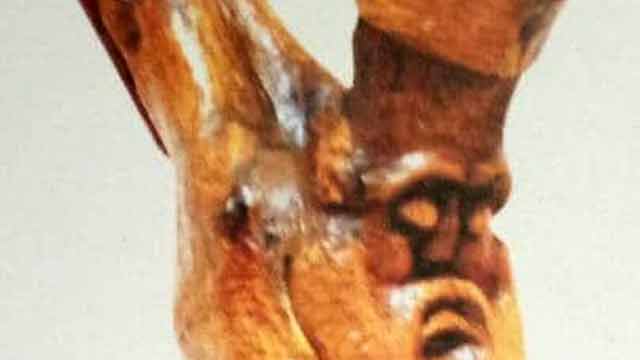
-
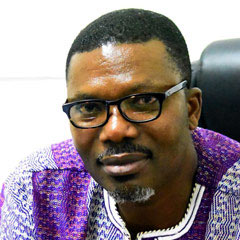 Patrique deGraft-Yankson
Patrique deGraft-YanksonFortunately, contemporary Ghanaian artists like Vincent Akwete Kofi and Kofi Antobam, who by their training, developed both the skills and the mindset to create and fully appreciate African arts have played major interventional roles. They, through rigorous production of masterpieces over the years, led the move to redirect the wavelength of Ghanaian artistic expressiveness along the paths of decolonization. A typical example of these arts is the Crucifix, the selected object for this discussion.
The Artist – Vincent Akwete Kofi
The Crucifix is a sculpture in the round, measuring 45x10x19 inches, and was created by Vincent Akwete Kofi, a Ghanaian artist who lived between 1923 and 1974. Characteristically, Vincent creates outstanding sculptures in humanistic forms. His sculptures speak to traditional African philosophies, ideals and beliefs (Grobel, 1970), and he through his works, seeks to reinforce the beauty, dynamism and complexities of African art. Indeed, Vincent’s artistic posture was largely informed by his training in the then Achimota College in the Gold Coast (now Ghana), an educational institution which sought to bridge the gap between European and African forms of knowledge (Woets, 2014).
Description and interpretation
The Crucifix was carved in tropical hard wood, one of Vincent Kofi’s preferred media, with the style and subject matter reminiscing his belief in the creative and objective fusion of lessons from the history of modernism in the arts by an immersion in his Ghanaian heritage. Like his earlier sculptures therefore, the choice of this Euro-Christian theme throws lights on his Pan-Africanism and decolonization intents.
The sculpture is a depiction of a free-standing human figure with features that conform with his earlier wood carvings, such as depiction of enlarged head and heavy feet which are more representational than naturalistic. Again, the entire form is seen as being directed by the limitations of the tree trunk deliberately chosen for the work. This, of course is one of Kofi’s traditional wood carving styling.
The Crucifix is postured in a clasped forward-bent lower limb. Like the lower limbs, the upper limbs of the figure which are raised over the head and stretched backwards, are also clasped together, depicting the entire image in a rather discomforting posture. Further strengthening the feeling of distress and discomfort in the image is the dropped and lifeless face and facial features of the image. The long thick beard of the image with the tightly fitting cylindrical hat on the head, carved after one of those won by royals among some sections of Ghanaians, give the figure an elderly look.
Other significant features of the image are the exaggerated clasped, forward-bent and wobbly elephantine feet, dropped face with shuttered eyes, flaccid body/skin/muscles (which is visible even in wood), and the heavy beard.
In trying to understand the presentation of the Crucifix, it is important to note that Ghanaians have stories about characters who lived and suffered similar fates as that of the Christ. The Fante people (a section of the Akan ethnic group), for example have records on a man called Ahor, who offered himself as a sacrifice to the gods, when the life of a human being was demanded as an antidote to a calamity which befell the people. Up to today, Ahor is celebrated in a festival called Ahorbaa to commemorate his brave and sacrificial feat. Other ethnic groups in Ghana have similar stories which render the Passion of the Christ not just a familiar phenomenon, but a lived experience recorded in the history of the people.
Also worthy of notice is the familiarity of the various themes which characterize the story of the Christ, such as his kingship, miraculous personality, sacrificial journey and his eventual torture and death. The Crucifix therefore, was Vincent Kofi attempt at depicting the passion of the Christ in a way that would make it familiar and relevant to the people.
The image in Kofi’s Crucifix was therefore needed to be presented as a man with royal personality, as depicted in the cylindrically shaped cap, which is symbolic of some of the Ghanaian royal millinery that depict kingship and authority. This is reinforced by a heavy beard to portray wisdom. Wisdom which is reserved for kings and aged people.
Analysing from the experiences of a people whose history was not devoid of unpleasant experiences, such as enslavement, brutal torture and execution, the image presented in the Euro-Christian Crucifix could not have been a complete representation of the Man of Sorrow described in the Christian holy book (Isaiah 53:3). Kofi therefore saw the need to present a figure which paints a real picture of a man who had gone through an extreme physical pain. Those strong and heavy, yet wobbly feet were a symbol of a man overburdened with sorrows and sins of the world.
Indeed, the man on the Crucifix was dead, with no chance of maintaining a smooth and shiny skin as seen in the Euro-Christian crucifix. In Vincent Kofi’s Crucifix, therefore, he, even in wood, managed to present a flaccid body/skin and muscles which, with the closed eyelids, dropped and lifeless face gave an impression of an extremely tired dead body. Probably an artistic rendition that comes close is Mel Gibson’s crucified Christ in his movie, the Passion of the Christ.
Conclusion
Early missionaries introduced the Christian religion with its attendant icons, images, stories and language in 1400s. Semblance in religious icons, images, stories and their associated functions made the acceptance of Christianity easier among indigenous Africans/Ghanaians. Vincent Kofi’s Crucifix could therefore be considered as a great effort towards connecting foreign Christian belief systems to known religious experiences, thereby making Christianity much more relevant to the African than it has been.
References
- African Artists in America (1978). African Affairs, 11 (3), 84-85.
- Frank, B. (1999). The Visual Arts of Africa: Gender, Power, and Life Cycle Rituals by Judith Perani and Fred T. Smith (A review). African Affairs, 11 (3), 14-16.
- Kwami, A. (2016). Kofi, Vincent Akwete (1923–1974). In the Routledge Encyclopedia of Modernism.: Taylor and Francis. Retrieved 31 Dec. 2021, from https://www.rem.routledge.com/articles/kofi-vincent-akwete-1923-1974. doi:10.4324/9781135000356-REM845-1
- Moore, G. (1967). The Arts in the New Africa African Affairs, 66 (263), 140-148.

-
 Kerstin Pinther
Kerstin PintherAs a miniature, the sculpture Indépendence Tchao (2014) by the Franco-Algerian artist Kader Attia refers to the Hôtel de l'Indépendence in Dakar, Senegal. At the beginning of the1970s – a little over ten years after the independence of the west African country under Lépold Sédar Senghor and a few years after the first Festial Mondial des arts nègres (1966), the hotel was built by Henri Chomette and Roland Depret. Since the end of the 1940s and into the 1980s, the office of the French architects had built governemental and private buildings and others in numerous African countries. Indépendence Tchao was initially created as a site-specific installation on the occasion of the 11th Dakar Bienniale in Senegal. It refers back to the hotel high-rise with the sculpture; the ‘borrowing’ can immediately be recognized, above all by its characteristic brise-soleil façade. Kader Attia used discarded and somewhat rusty inex index boxes, stacked on top of each other. The inventory of the archive itself came from a dissolved administration in Algeria. Only a few kilometres away from the central exhibition venue of Dak'Art, the hotel still forms a striking, decidedly 'modern' architectural antithesis to the flat neo-classical colonial administrative buildings - an aesthetic incunabulum that symbolized the future in its outstanding verticality and modern furnishings. However, the former architectural icon is now empty and in a state of decay. Indépendence Tchao (the title is a reference to the famous song Independence Cha-cha from 1960/Kalle) thus refers both to a utopia that has grown fragile, the bursting of a dream; as well as to the persistence of colonial archiving and (also structural) standardization practices, to old and new (architect) networks in the postcolony.
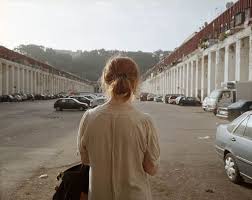
Attia, Kadar. Pascale, Fernand Pouillon, Alger. 2012
https://inferno-magazine.com/2012/06/23/kader-attia-le-corps-utopique/ [Stand: 28.10.24]
Two further - this time photographic - works by the same artist also address the ambivalences and potentials of modern architectural promises: In the case of the photograph of a woman, seen from behind, surrounded by the mighty arcades of the 200-column courtyard, the connection between the body as the 'first architecture' and the 'built' architecture is central. Not least through the title Pascale, Fernand Pouillon, Alger (2012), it becomes apparent that the person is a transsexual. According to Attia in an interview, the strangeness in one's own body corresponds to the 'architectural' alienation that the inhabitants of the 'Climat de France' who had resettled from the Kasbah in Algier must have felt in the 1950s; the necessity of appropriation, re-territorialisation or even 'becoming at home' applies to both bodies (the human and the architectural).
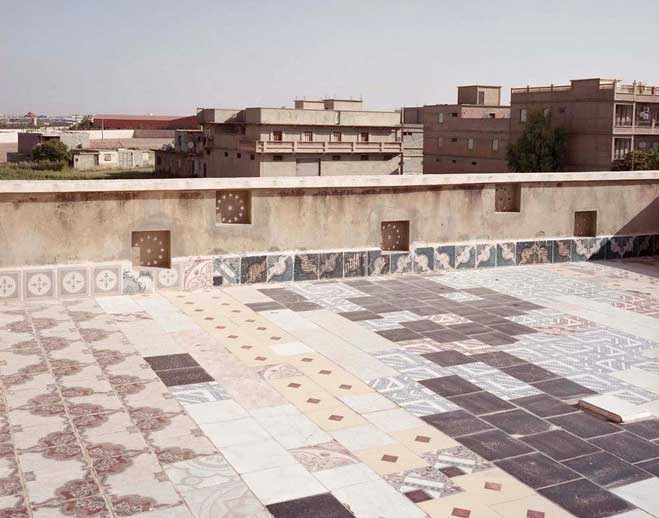
Attia, Kadar. Déconstruir - Reinventer. 2012
https://slash-paris.com/en/evenements/construire-deconstruire-reconstruire-le-corps-utopique/sous/3669 [Stand: 28.10.24]
A reflection on transgression and imagination also lies at the centre of another photo: Déconstruir - Reinventer (2012) actually shows only the results of a minimal intervention in the standardized construction method, and yet these traces of spatial action are marked here as meaningful in the sense of aesthetic place-making.
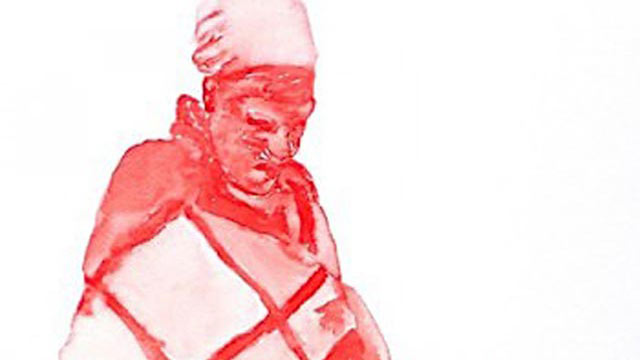
-
 Elfriede Dreyer
Elfriede DreyerOver the last three-and-a-half centuries, South Africa has experienced volatile and turbulent histories of a colonial, postcolonial and global kind. These brought on substantial nomadic movement of people, leading to political and social displacement, and hybrid identities. Since 1652, as a multifariously colonised country South Africa has shown cultural patterns of movement in and out of the country, and from place to place. The country is extraordinarily rich in mineral resources and gold, which has brought about massive wealth, but also instability. Johannesburg was established in 1886, due to the so-called gold rush, with fortune seekers and diggers flooding from all over the world to the country. Since then, the gold mines have attracted an influx of locals as workers, which contributed to much nomadism, but ironically – especially since 1948 during apartheid – such mine workers were allowed to work underground but once above ground they had to return to townships outside the large cities. During apartheid, non-whites or ‘people of colour’ were removed from the city and forcibly established in townships outside the city; they were only allowed as workers into the city; and had to carry passbooks (identity documents) on them all the time.
Such nomadic identity as a result of marginalisation and displacement is still presiding, but for different reasons since 994 and the end of apartheid. From this time onwards there has been a immense influx of people from all over the African continent to South Africa in search of greener pastures. Whereas during apartheid many intellectuals and people ‘of colour’ emigrated from the country, over the past two decades there has been an outflux of people due to a strong degree of political uncertainty and actions of political redress in the post-apartheid constitution, or to convicted beliefs of ‘not belonging’ to the new political dispensation.
Senzeni Marasela’s series of works entitled Waiting for Gebane (2015-2016) entails a continuation of her previous work, such as the embroidery series Theodorah in Johannesburg (2006) and Sarah, Senzeni and Theodorah come to Joburg (2011). In the latter works she explored her relationship with Johannesburg as city and experiences her mother had when she first arrived there. She used embroidery as technique and thread due to its associations of fragility, and conceptually she considered the issue of black women in migration to the cities. Theodorah was depicted as travelling to the city with the aim to finding out exactly what it is that has made many people disappear into Johannesburg. She is uncertain of what she is actually looking for. In the 2014 exhibition catalogue for Nomad bodies at the Wintertuin gallery of the Royal Academy of Fine Arts in Antwerp (curator: Elfriede Dreyer), Marasela stated that “I continuously return to the city, looking and relooking as it undergoes massive transformation. Having grown up in a catholic environment, penance informs a great deal of methods which are labour intensive. The city of gold is important as a transitory space: people go through the city, they come to the city and many dream of this city. There is something impermanent about this city, and it is precisely at this point that I began to write my own histories. The social climate of the city has never been favourable to the women that enter it. It is deliberate that I leave the city arid, without indications of lived experiences, as I seek to build the Johannesburg I can safely occupy.”
However, in Sarah, Senzeni and Theodorah come to Joburg the artist includes herself and Sarah Baartman also as nomads or pilgrims in the city. The three women’s plights are fundamentally different – Theodorah is on ajourney looking for her lost son Gebane; Senzeni is on her journey finding her foothold as individual, and colonial Sarah was displaced to Europe from the Eastern Cape– but they are one in their search for a place, recognition and restitution. They are each other’s doppelganger in their journey through the city of Johannesburg which forms the backdrop to the works. The metaphor of the rhizome is of particular interest to an engagement with nomadic identity in the context of a continent such as Africa. Already in 1987 Deleuze and Guattari (1987:7). coined the idea of rhizomatic being, stating that the “rhizome itself assumes many diverse forms, from ramified surface extension in all directions to concretion in bulbs and tubers”. Living on a vast continent, Africans are accustomed to long journeys; however, poverty, violence, civil wars, imperial infiltrations and oppression have resulted in a generalised nomadic condition where people are constantly moving and travelling in the search for a better life and even survival. However, in a wider sense, globally, Rosi Braidotti (2011:3) states that the nomadic predicament and its multiple contradictions have come to age in the third millennium after years of debate on the “’nonunitary’ – split, in process, knotted, rhizomatic, transitional, nomadic – so that fragmentation, complexity and multiplicity have become everyday terms in critical theory.” Braidotti has been engaged since the 1990s with the question as to what the political and ethical conditions of nomadic subjectivity are, grounded in a “politically invested cartography of the present condition of mobility in a globalized world” (Braidotti 2011:4).
Zygmunt Bauman (in Hall & Du Gay 1996:19) views the ontologies of nomadic identity as becoming critical when there is uncertainty as to where one belongs, a view that is crucially relevant to emerging urbanising African identity. `the figure of Theodorah can be aligned with the idea of the flâneur, which Bauman appropriates in his presentation of the stereotype of the pilgrim who as a stroller is on a teleological journey – ordered, determined and predictable (Bauman in Hall & Du Gay 1996:21). Comparing the contemporary world to a desert through its fragmentation, Bauman views it as being inhospitable to the notion of the pilgrim, being unable to leave a footprint in the sand. The forward march of the pilgrim (Theodorah) is equally compromised and in the context of the wind effacing footprints (of Gebane) and the rhythmical similarity of the desert environment, the pilgrim goes in circles (Bauman in Hall & Du Gay 1996:23). “The overall result is the fragmentation of time in episodes, each one cut from its past and from its future, each one self-enclosed and self-contained. Time is no longer a river, but a collection of ponds and pools” (Bauman in Hall & Du Gay 1996:25).
As in these afore-mentioned works, in the series Waiting for Gebane the artist’s mother is depicted as going from her rural environment to the ‘big city’, Johannesburg, in a search for her son Gebane who left for the city and never returned. She becomes a nomad in her searching ritual, but it is a dystopian journey, providing no teleological “good ending” and leading nowhere, since she cannot find him. The works depict a potent image of Africans searching for a better life elsewhere, but simultaneously failing in finding answers to their economic and other dilemmas. Waiting for Gebane explores cultural and artistic mappings of the social and political power geographies and complexities that dominate cities. Of pertinent interest here is how people’s decolonial transition from rural to urban contexts have been voiced, claimed, renegotiated and contested, especially in the context of capital cities as locations where there is a conflation of global and local influences. Mendieta (2001:15, 23) argues that cities have become the “vortex of the convergence of the processes of globalization and localization … [and] epitomes of glocalization, to use Robertson’s language (1994)”; and that the “city is the site at which the forces of the local and the global meet: the site where the forces of transnational, finance capital, and the local labour markets and national infra-structures enter into conflict and contestation over the city.”
In Marasela’s work, contemporary African identity is characterised by particular cultural histories, as well as by identifiable patterns of transitivity and how people construct their identities psycho-geographically. Dispossession of the embodied and embedded self is articulated so that the city and placelessness become sides of the same coin (Braidotti 2011:6). Braidotti (2011:7) argues that “The contrast between an ideology of free mobility and the reality of disposable others brings out the schizophrenic character of advanced capitalism”, which is nowhere more visible than in the political and social extremities in South Africa. Marasela’s work expresses the idea that meaning is created through the crossing of space and distance between bodies, or as Soja (1989:133) argues, “To be human is not only to create distances but to attempt to cross them, to transform primal distance through intentionality, emotion, involvement, attachment.”
New decolonised Identities emerge through movement through in the world and interfaces with alterity. Often, it is a sense of alterity or the attraction to the exotic other that produces nomadism. Waiting for Gebane thus presents the ambivalent Baumanian idea of the pilgrim-tourist who keeps going in circles, driven by a non-teleological sense of survival and looking for a better life, which might not lead to a ‘good ending’. Nomadic identity is essentially rhizomatic here, and in South Africa – also in an amplified sense on the African continent – the drive to belong and the utopian quest for a better life have resulted in identity being redefined, renegotiated, rerooted and sprouting in many directions.
Senzeni Marasela is a female South African artist of Zulu origin, born in Thokoza, KwaZulu Natal in 1977. She is currently completing a MA degree in Art History from Wits University (SA); she has exhibited widely in the national and international contexts; and she has been awarded several grants and residencies, for example from Devon Arts Residency (Scotland) The Ampersand Foundation and Axis Gallery in New York; The Thami Mnyele Foundation in Amsterdam; and the Kokkola Art Academy in Vasa. Her artist website is found at http://www.senzenimarasela.com.
References- Bauman, Z. ‘From pilgrim to tourist – or a short history of identity’. In Hall, S and Du Gay, P (eds). 1996. Questions of cultural identity. London/New Delhi/Thousand Oaks: SAGE.
- Braidotti, R. 2011. Nomadic subjects: embodiment and sexual difference in contemporary feminist theory. Second edition. Gender and culture: A series of Columbia University Press. New York: University of Columbia Press.
- Deleuze, G & Guattari, F. 1987 [1980, French original]. A thousand plateaus. New York: University of Minnesota.
- Hall, S and Du Gay, P (eds). 1996. Questions of cultural identity. London/New Delhi/Thousand Oaks: SAGE.
- Mendieta, E. 2001. Invisible cities: a phenomenology of globalization from below. City: analysis of urban trends, culture, theory, policy, action 5(1):7–26.
- Soja, E. 1989. Postmodern geographies: the reassertion of space in critical social theory. New York/London: Verso.
published February 2020
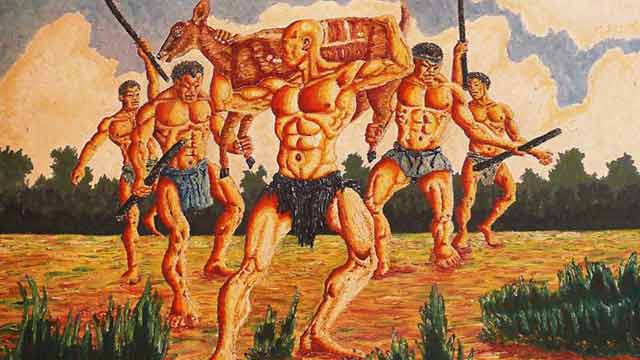
-
 Emmanuel Aklasu
Emmanuel AklasuOwusu-Ankomah’s painting at first glance reveals a foreshortening company of energetic warriors, muscular framed with broad shoulders, muscled chest, and a narrow waist in a chiselled physique. The hunters were portrayed with huge hands, clenched fist, knuckles, strong legs visibly revealing biceps brachiis and dabs of varicose veins on the arms, thighs and legs evident of powerful and efficacious men. Before modern society, the average male spent most of their time hunting, protecting, and engaging in physical activities that increased their muscle mass and maximize their muscular proportions. Owusu-Ankomah’s production exhibits masculine competitiveness and a sense of adventure – the brave team were a-fire with passion, armed with sticks in a leopard-like graceful movement as the captain leads carrying a captured antelope shoulder high.
The warriors are noticeably naked with only a string of grass costume wrapped around the private parts which is the formal and ceremonial attire for the ancient culture. Owusu-Ankomah’s choice of colour in rendering the human figures lends credence to the fact that colours have a strong position in identifying humans while hunting. Wearing hunter orange is the best way to ensure other hunters see you and don’t accidentally mistake you for game in complex backgrounds that are often green or brown. The artwork reveals harmonizing brown colours which tend to create a central focal point in the entire picture frame to evoke earthiness, emotions, security and safety related to the natural world. The tints and shades of hues enhanced the main features in the painting to vividly communicate the intended message as well as create an illusion of depth.
A thick flora forms the background of the painting evident that the hunting expedition was carried out in a thick forest. As the fearless, able-bodied men advance through shrubs in high spirit of mission accomplished, an earthly scent swirled around them coupled with a sense of eagerness to meet a welcoming, expectant and jubilant community. Hunting is an extremely important mode of human-nature interaction closely linked to culture patterns and value systems. This engagement with wild animals is thought of as part of a deeper unity with nature, which means being part of nature in physical sense (Lowassa et al., 2012). Sustainable hunting prescribes taking as much as needed and as much as the habitat and the population can regenerate. Suffice to say, when hunting for a game form the basis of a year-long survival of a people, it calls for a deeper reflection. Owusu-Ankomah’s painting comes on the back of an ancient heritage of a distinct tribe in Sub-Saharan Africa.
‘Aboakyir’ translated ‘deer hunt’ is a festival uniquely celebrated by the Effutu (Simpa) people of Winneba in the Central Region, southern coast of Ghana, West Africa. The festival which is celebrated annually on the first Saturday in May has the historical antecedent of the replacement of a human sacrifice to a tribal god with a leopard – an alternative which resulted in the loss of many more lives than the sacrifice of a single slave. Consultations with the deity for a more humane alternative resulted in the “Wansan” (the deer) as a practicable and most acceptable substitute. The capture of a live deer, like the leopard, required many more hands than the members of the royal family could find. The additional hands required were solicited from the local militia as a service to ‘the stool – a symbol of chieftaincy, royalty, custom and tradition’. It was this change in form; that is, the involvement of the local militia, that the annual consecration and appeasement of the deity became a public, state-wide affair. This marked the birth and hence the origin of the “Aboakyer” festival.
The design of the Effutu State emblem tells this story; the ‘stool’ on which the King is installed sits on the “Wansan” (the deer).

Emblem of the Effutu state (Source: Palace of Oma Odefe)
The festival is therefore important for the ‘stool’, its occupant and the entire royal stool family. It is a religious duty and an obligation for the general citizenry to ensure its celebration annually is sustained to honour the ancestors and protect their historic culture for posterity on the back of removing evil and predicting a good harvest for a prosperous life in the coming year. The week-long activity begins with two traditional warrior groups known as the ‘Asafo’ companies consult their shrines for clearance, protection and early catch. The warrior groups clad in distinct costumes with distinct musical instruments — the ‘Tuafo' and ‘Dentsefo’, move to their respective hunting grounds at dawn on Saturday, wielding sticks and clubs amid chanting of war songs. No weapons, other than clubs and sticks are used to catch the deer, as it must be brought back alive.
By far, the relevance of Owusu-Ankomah’s painting is not in doubt as it fosters a deeper understanding of the historical and societal roles of hunting within Ghanaian communities. The painting holds both cultural and educational significance which sparks discussions on conservation, sustainable practices, and the preservation of cultural heritage. Consequently, bridging the gap between present generations and the rich tapestry of cultural and environmental history. The sight of the painting in Ghana’s National Museum serves as a poignant reflection of the nation’s cultural heritage and connection to nature. In this visual narrative, the core of historical period of a distinct society is unearthed.
References
- Lowassa, A., Tadie, D. & Fischer, A. (2012). On the role of women in bushmeat hunting – Insights from Tanzania and Ethiopia. Journal of Rural Studies 28(4):622–630.
Further Reading
- Anane-Frimpong, D. (2022). Aboakyir: Deer hunt festival. Link Retrieved on April 10, 2023
- Rubiano, W. (2017). Planting trees for the aboakyer festival 2017. Link
Published March 2024
 Barbara Lutz-Sterzenbach
Barbara Lutz-SterzenbachAn energetic scene. Five men in a flat landscape approach the viewer. Their bodies are naked - except for their loincloths - their faces grim. Muscles in the bright light stand out under the skin, their chests bulge voluminously - they are timeless heroes. The men do not look at the viewer of the picture. With their long, dark sticks firmly in their strong hands, they gather symmetrically around the bald man in the foreground. He presents himself with an antelope in his raised arms. His bald skull points to the left, as does the antelope's head.
On closer inspection, some things are irritating. Are the men dancing or walking? Where is the animal spatially located? Somehow it is on the shoulder of the man, but the legs are captured by the men behind, who would be much too far away for that. Is an event, an episode (as in a photograph) depicted? Or does the symmetry of the composition speak more of a constructed symbol, a sign, as in an emblem? The latter would support the strict division into horizontal planes: with the islands of grass in the foreground, the flat, ochre-coloured plane in the middle ground and the forest with sky in the background. But then again many design principles undermine this order: the tense, energetic movements of the figures, the strong brushstrokes, the irregular shapes of the white clouds and the tufts of grass, the dynamic accents of the sticks.
We know from our Ghanaian colleagues that what is depicted here, the catching of the animal, is part of a ritual celebration and a festival (the Aboakyer Festival). Here the moment is shown when the men have stepped out of the dark, hermetically sealed forest in the background with their prey and now present themselves in the bright light with their success. A comparison with the results of an image search on the internet for “Aboakyer festival” (Fig. 2) shows that this is the iconic moment. Here the idea of the festival seems to be condensed. And this also explains the emphasis on muscles: the hunters must be well trained to match the animal's speed and strength.
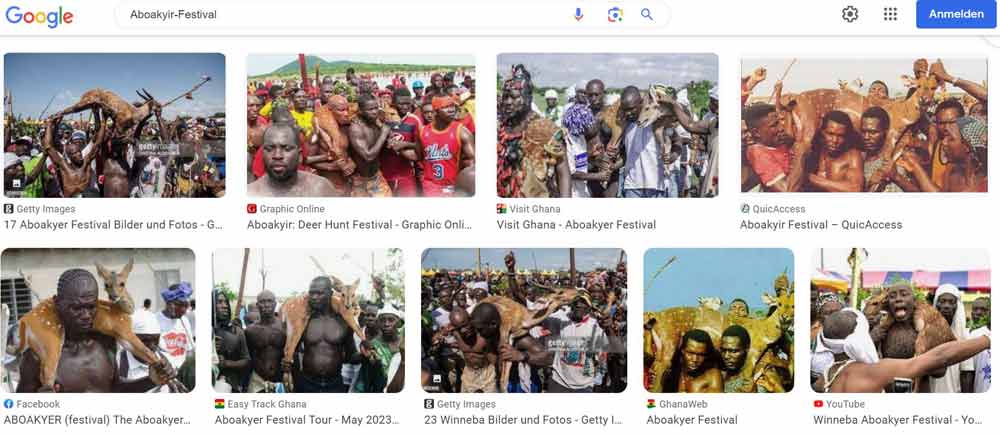
Fig. 2 (Google search for "Aboakyer Festival" on 9.9.2023 - the first page of results) Screenshot: Ernst Wagner
Owuso-Ankomah's painting focuses on the men with the animal. At first glance, the painting shows above all the strength of the men. The space thus becomes the backdrop for their performance. Their bodies are not only idealised but theatrically exaggerated, their muscles as if illuminated by a spotlight. The geometric centre of the picture, through which the horizon also passes, brings the loincloth of the leader into focus (see fig. 3) - perhaps an allusion to male potency?
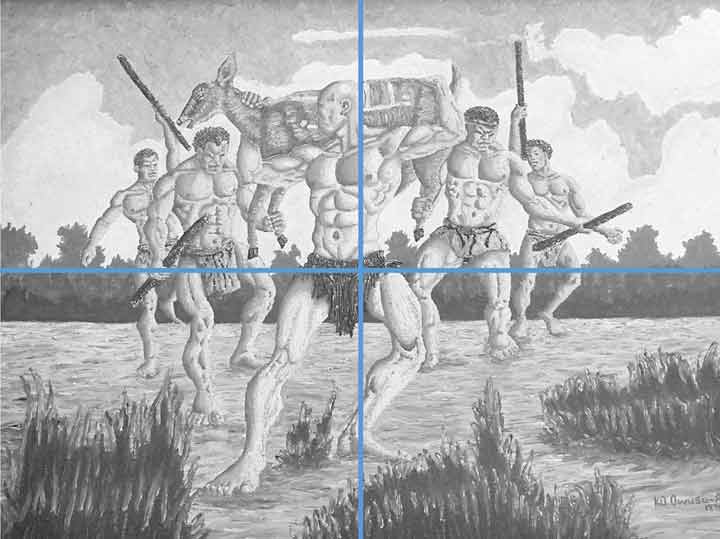
Fig. 3: Composition sketch (horizon and geometric centre) Photo: Ernst Wagner
A comparison with photos on the same theme from the Heritage Centre in Winneba (see Fig. 4-6) shows clear differences to the depiction in Owusu-Ankomah's painting. In the artwork, both animal and hunter have their mouths open, exhaustion is evident in both. In this way, too, man, animal and landscape are connected - despite hunting and death. The artist uses the warm ochre tones in such a way that the earth, the human body and the animal hardly differ in colour. Since the animal is still alive, its head does not have to be held. Thus, visually, it seems to elude a depiction of "being trapped", also due to the ambiguous spatiality described above. It could almost just as easily be understood as a triumphant appearance of the animal, to which the men are subordinate as bearers and assistant figures - comparable, for example, to Jan van Eyck's depiction of the lamb (see fig. 7), which also marks a mediating position between victim and victor, between human beings and God.

Fig. 4-6: Photos from the Heritage Centre Winneba Photos: Ernst Wagner
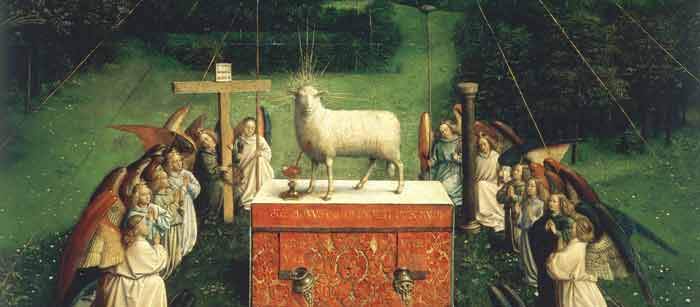
Fig. 7: Van Eyck, Lamb of God, Image Detail: Ghent Altar. Oil on wood, 350 x 461 cm
Cathedral of St Bavo, Ghenthttps://commons.wikimedia.org/w/index.php?curid=109213 [28.10.2024]
This image sets against each other contradictory concepts: static-symmetrical-ordered vs. dynamic; accidental situation vs. deliberate staging; documentation vs. sign; hyperrealism in body and space vs. symbolic charge. It sets these contradictions against each other in the unity of the painting.
Reference
Published March 2024
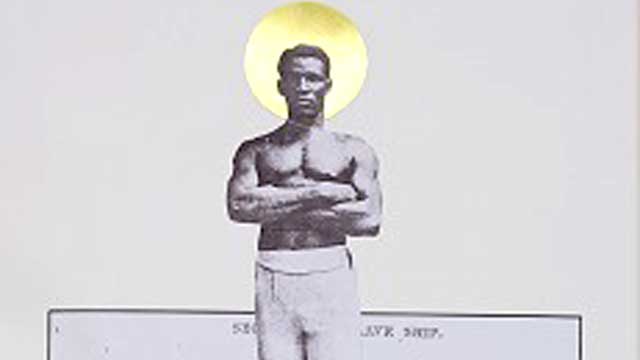
-
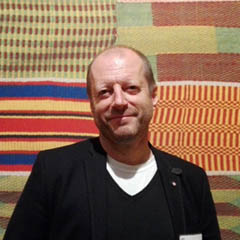 Stefan Eisenhofer
Stefan EisenhoferGodfried Donkor is now considered one of the most renowned British artists with numerous acclaimed solo and group exhibitions in Africa, Europe, North and Latin America, including "Around the world in 80 Days" at the ICA (London), "Pin Up" at the Tate Modern (London) and "Authentic/ Excentric" at the Venice Biennale 2001. His multimedia visual art practice incorporates collage, printmaking, photography, film and performance. He is joint founder of "AISS-Art in Social Structures" and has participated in a number of residency programs in Africa, Europe, the US, and the Caribbean. In his works, Donkor creates visual references to the buried and repressed relationships between "black and white", between the upper and lower classes.
Based on profound research, he tells multifaceted counter-histories that reveal the hidden principles of production and exchange in historical and modern societies. At the core of his work are questions about the stereotyping of black people and their reduction to their physicality - firstly in slavery, then in sport, in the fashion- as as well as in the sex industry. In his work "From Slave Ship to Champ" (1992), for example, the slave ship, contrasted with images of black boxers in classic prizefighter poses, becomes a kind of "womb" and „uterus“ of particular types of racism. In Donkor's work, the historical slave trade also becomes a metaphor for current degrading mechanisms of the globalised world and leads to the question: How far is it from slave ship to champion - is it very far, or not far enough?
He questions the supposed "neutrality" of stock market prices and statistics in his series "Financial Times", in which he uses the serious-looking stock market pages of this newspaper as a background and alienates them collage-like with black and white images or full-colour glossy magazine figures of boxers and African women.
"The black body“ as a commodity in Western culture is also the focus of his "Southern Vogue" series. He traces the ways in which women's bodies, in particular, were and are degraded into marketable commodities and how people were and are degraded into financial objects. Donkor's work has much to do with the fragile and ever-threatened dignity of human beings. He asks questions about victimisation and innocence, about the balances and imbalances of the world, but does not allow for one-dimensional quick answers. Rather, he creates not only alternative histories, but also alternative icons. In his "Browning Madonna", "Black Madonna" (2002/6) and "Birth of Venus" series, for example, he takes up Western pictorial motifs, "africanises" them and thus creates a field of tension between the elevation and exploitation of - not only black - women and men.
Donkor's conceptually multilayered works are often inspired by places that played an important role in the historical slave trade. The artist uses the architecture of these places and the goods that were and are produced there to refer to the social conditions and interactions that lie behind them. This is exemplified by "Once upon a time in the West there was lace" (2007), with which Donkor reflects parallels between modern day and historical slavery through cotton and lace in Nottingham (UK). The luxury good lace, that is still synomymous with this English city, stands for the lavish lifestyle of the elites of the 18th and 19th centuries and at the same time for the exploited manufacturers who were often forced to live in great poverty. Donkor links this status symbol with his horrific history, and at the same time refers to the exploitative mechanisms of the current economic world.
The location also plays a leading role in the performance/fashion/video installation "Jamestown Masquerade" (2004). The Ghanaian coastal town of Jamestown is one of the first communities to make contact with Europeans in the 18th century. In Donkor's work, this place now becomes an archetypal city for commerce exchange and a symbol of the cultural interplay between Europe and West Africa from the 18th century to the present. In this performance, Present day Jamestown becomes the setting for a masquerade of fashion and memory in which African performers wear English costumes from the 18th century and are accompanied by music by Handel and Mozart. In this way, Donkor also points out that the meeting of two cultures does not necessarily have to be destructive, but can also offer a great deal of creative scope for both sides.
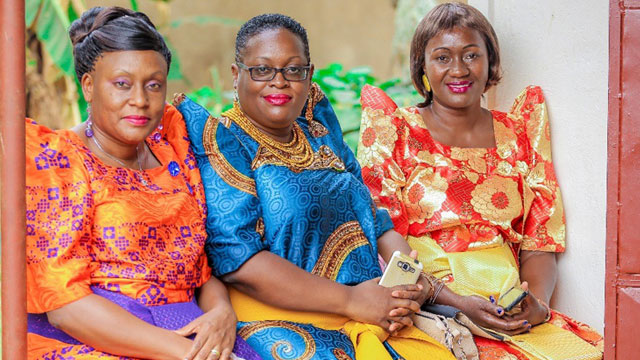
-
 Esther Kibuka-Sebitosi
Esther Kibuka-Sebitosi“Decolonizing self” is a photo demonstrating the complexity of cultures and how inter twinned African and western cultures have become. The photo was taken at a traditional wedding in Kanyanya village, where African cultural practices like sitting down on the mat are proudly demonstrated. Paradoxically, decolonizing the self-starting with the dress, is not an easy process as pieces of the western culture are clearly visible, for example the sunglasses, the necklace and ear rings all show the interlinkages between cultures. The example is excellent in showing culture, history and evolution of the traditional dress and political economy for educators. The mood of the gaze is best described by former President Thabo Mbeki in his poem,” I am an African” as he proudly says, “ “Today I feel good to be an African”.
In unravelling decolonizing self, I want to start with explaining colonialism; Torres (2007) refers to colonialism as, “ a political and economic relation in which the sovereignty of a nation or people rests on the power of another nation”. He refers to coloniality as a long-standing patterns of power that emerged as a result of colonialism but that define “culture, labour, intersubjective relations and knowledge production well beyond the duration of colonial administration”. Hence, coloniality, he argues, survives colonialism and is maintained through books, music, academic performance, cultural patterns, in self-image and aspirations of self and is lived every day. It follows therefore that decolonizing self would have aspects of culture, language and daily practices that one has to get rid of. Taking an example of cultural dress, I dress in my traditional dress called the busuti or Gomesi. The image shows the dress and the Shaath (cream colour that is used to tie it). The necklace is modern shining with stones. The accessories are also western. I am sitting down on a mat made out of sisal and “nsansa- palm tree leaves. Sitting down is a cultural tradition and practice that dates back for generations. This is also a gender demonstration of roles of women who would sit on the mat to greet visitors who had come to be introduced. The practice of paying lobola (bride price) is common in Southern Africa and traverses the African continent. In the photograph, everybody dresses in the traditional dresses. It is a way of saying “I am an African” and I dress like this, “Look how smart my dress is lovely”.
Ironically, long ago, the traditional dress was made of out of the Mutuba tree- Fig tree Ficus species. They got it from the bark of the tree, which they smashed until it became flat. It was dried and then rolled out. The cloth (Kikunta or Lubugo) comprised only of a sheet, which was wrapped around, the shoulders. Over the years, the Kikoyi replaced the kikunta as it was made out of cloth- cotton. Linked to the traditional dress, is the decorative materials from India. Inside the dress is another wraparound Kikoyi that together with decorations were also from India. The image shows the material of the dress- silk with beads. This material is from India or Dubai. The modern materials are no longer traditional (Kikunta and kikoyi). The local industry has adapted to make traditional dresses out of new materials linen, nylon, chiffon or a mixture instead of cotton or Lubugo from the Mutuba tree back.
The image also demonstrates the mostly western sunglasses or gaggles. The sunglasses show the western culture I have adopted over the years. The Europeans normally put on sunglasses to protect their eyes from the sun. The occasion was held during the day as the sun was shining. It is not traditional practice to wear sunglasses. However, they help protect the shy people, as they do not have to look at all the guests. The gaze in the image is that of a woman comfortable in her body, sitting down with pride and taking pride in her tradition. This particular image was selected because it reveals the culture in transition. It is contemporary culture- a traditional wedding- a place where African Culture is luxuriously displayed. Paradoxically, the dress is traditional but the accessories are western showing the entangled nature of coloniality- the tradition African culture and the western culture, practices, all intertwined in intercultural interactions. The sunglasses may also demonstrate the cover up- hiding of self in the modern practices. Based on the above, it is not surprising that Decolonization is a layered process, which takes time and patience.
Thabo Mbeki wrote a poem, “I am an African” expresses the objective of the constitution, “It is a firm assertion made by ourselves that South Africa belongs to all who live in it, Black and White”.
As I sit on the mat and watch the bride and groom give gifts to each other, I remember the words of the former President of South Africa, “Today I feel good to be an African”.
In decolonizing self, “decolonization” that has become the rallying cry for those trying to undo the racist legacies of the past, according to Achille Mbembe. Starting with cultural dressing is the first form of decolonizing self. Other forms include decolonizing power and decolonizing knowledge.
published January 2020
 Katharina Knaus
Katharina KnausBeyoncé’s and Jay-Z´s Video „Apeshit“ discusses post-colonial exhibition art
My first contact with art history was by reading E.H.Gombrich „The Story of art.“ (1909-2001). When starting my studies of art history in Munich, this was the book they recommended as standard literature. The cover text describes it as „the most famous and popular book on art ever published“. Although it claimes to be an introduction in art „for reader of all ages and backgrounds“ Gombrich tells a very one-sided story. Beyoncé’s and Jay-Z´s Video „Apeshit“ discusses post-colonial art historiography by exposing the Louvre as a white – dominated space.
„Two black women are sitting on the floor wearing light brown tights and body-hugging beige vests. They are in profile, facing away from each other, and positioned at either side of David’s painting of the famous 19th Century French socialite. Linking the two women together is a flowing piece of white material, each end of which they wear on their heads like a turban.
Above them, Madame Récamier reclines on her antique sofa, dressed in a simple sleeveless white dress, her head turned towards the viewer. The design of the sofa is similar to that of a sleigh-bed, with rising wooden ends. It is these bed ends that the women on the floor echo, the variance in the darkness of their skin matching the different tones of the wood in the painting.
The cloth that links them represents the dress worn by the painting’s subject. The message is clear: It was on the backs of subjugated black people from the French colonies that Madame Récamier was able to enjoy her life of leisure and pleasure.“ (Will Gompertz)
The Carters’ Louvre takeover isn’t just about protest; it is about power too. But the overall point is powerfully put. The game is up for those institutions – be it Hollywood, Broadway or the Louvre – which have ignored black artists, refused them a voice, or a seat at the top table.
published January 2020
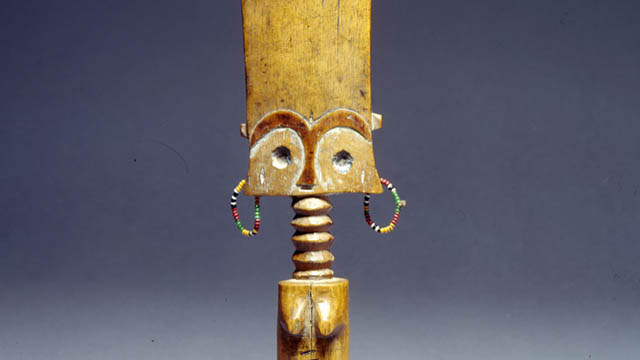
-
 Gertrude Nkrumah
Gertrude NkrumahInversion of Hegemony with Ideas of Femininity
Scholarly works abound on factors and causes of gender inequality in the Ghanaian society and many of these writings address gender inequality solely in terms of women as the victims and thus reinforcing the gender stereotype of female passivity. Although this is true in most cases, such studies do not necessarily address the question of how women have responded to and addressed issues of gender expectations and gender-related roles in African societies. By using the ‘Akuaba’ doll (fertility figurine), this research seeks to explore how the concept of womanhood has been portrayed and represented through time in the Ghanaian society among the Akan ethnic group. It seeks to extend an argument for the interpretation of these images beyond the depiction of women as sexual objects to that of creating an inversion of female hegemony in the society. I argue that instead of considering gender stereotypes as an all-pervasive oppressive tool, we must begin to think of the finer nuances and conceptualize how women have shaped, redefined, and negotiated socio-cultural construction of gender.
The object is widely referred to as the fertility figure, also known as the Akuaba doll among the Akans of Ghana. My reasons for selecting this object are two-fold. Firstly, it speaks to my childhood experiences as a girl growing up in an Akan society and secondly, as someone who is very passionate about gender-related issues either from an intellectual and personal perspectives, I was motivated to choose for this project an object that I can easily relate to, both from a personal and intellectual perspectives.
The object in question is the depiction of a female body, an exhibition of the Akan concept of an ideal woman. The features include a flat forehead with an elongated “ring-like neck shape”1 which reflects Akan standard of beauty. The understanding is that a woman with this type of neck is well-fed, healthy, and strong, a paragon of beauty and affluence. The flat broad forehead also is an embodiment of wisdom, while the accentuated breasts and hips with beads worn arounds the waist is the Akan ideal of womanhood, a depiction of woman as the giver of life. The beads worn around the waist has both aesthetic and symbolical meanings. In terms of beauty, beads were worn as an ornament for beautification, just as portrayed by the wearing of the jewels around her ears. It was also believed that wearing of beads around the waist is sexually appealing, while beads were also worn to broaden the hips and shape the waist for reproductive purposes. It is important to note that in the Akan society, and indeed in most Ghanaian culture, an ideal woman is one that carries and bears children. Clearly, ideas of beauty, sexuality and reproduction were the very essence of womanhood or femininity in the Akan society.
According to a very popular Akan oral tradition, the Akuaba doll is deeply rooted in one’s woman’s quest to overcome her inability in meeting societal ideas and expectation of womanhood.2 Akua, a childless woman, consulted a ritual specialist for a child. She was instructed to go to a woodcarver and make a doll of her choice for a child. Some rituals were then performed on the doll and given back to her to take home and treat and care for as her child. Later she became pregnant and gave birth to a daughter, just as she desired. The Akuaba doll then became symbolic for female reproduction. Amenumey explains that the Akuaba dolls were “…supposed to induce fertility and pregnancy….”.3 Among the Akan, like most precolonial Ghanaian societies, the concept of womanhood was largely defined and shaped by a woman’s ability to give birth to as many children as possible. Childbearing was a blessing from the gods and was usually celebrated with pomp and merrymaking. For instance, the custom was to reward a man whose wife has given birth to ten children with a sheep. The Akan refer to this as “badudwan”4 literally, a sheep for the tenth child. This was usually provided by the wife’s family to the husband to show their appreciation for the replenishing and sustainability of their family.5 In the quest to attain such feat, women worked hard to give birth to at least this number of children as prove of her worth to her husband and the society. This undoubtedly made women who were childless in the society feel undervalued and highly marginalized.
Such ideas and concepts of womanhood and inadvertent marginalisation of women still resonate in contemporary Ghanaian society and indeed in most contemporary societies. A woman’s value and worth continue to be tied with her sexual and reproductive abilities. Although women at present now have access to spaces and engage in works that go beyond the traditionally assigned roles of wife and motherhood (sexual and reproductive values), a woman is still expected to neatly fit in with socio-cultural construct of gender. This underscores the value place on women’s sexuality and reproduction to the detriment of other roles beyond these norms, thus leading to the marginalization of women. It is for these reasons that scholars such as Lerner and Allman have often called for the need to question entrenched patriarchal norms that undermine women’s oppression while it reinforces male- superiority.6
The understanding that women have continually been passive and largely detached from the making of their own history and are mere tools in the hands of a patriarchal society is neatly contested by the history behind the Akuaba doll. While it is true that it was Akua’s desperation to fit into societal expectation of ideals of motherhood that forced her to consult a diviner to help her conceive a child, the knowledge that Akua chose to actively engaged with the process of making the doll; how the doll is carved out, the shape, the physical features, and the aesthetic nature is significant. Additionally, the fact that she chose to carve out a girl child clearly indicates the active role she played in redefining and negotiating power with the matrilineal, yet patriarchal society, thus creating and inverting power in an all-pervasive patriarchal institution. It is also an indication that she did not consider the female as of little value in her society.
Paradoxically then, the history and philosophical ideologies that underpin the concept of the Akuaba doll is a clear exhibition of the nuances and complexities of societal construction of gender roles and status. In a society with a deeply entrenched gender expectations and assigned gender roles, it is remarkable that Akua sought to circumvent, manipulate, and yet conversely acquiesce with existing status quo to her advantage, an inversion of hegemony amidst patriarchal privilege. Therein lies the ambiguities and contradictions of performing gender.
References
- Addo-Fening, R (1973). Asante refugees in Akyem Abuakwa 1875-1912. Transactions of the Historical Society of Ghana. 14, 1. 39-64.
- Akyeampong, E & Obeng, P. (1995). Spirituality, Gender, and Power in Asante History. The International Journal of African Historical Studies. 28, 3. 481-508.
- Allman, Jean. (1996). “Rounding up Spinsters: Gender Chaos and Unmarried Women in Colonial Asante.” Journal of African History, 37, 2, 195-214.
- Amenumey, D. E. K. (2008). Ghana: A concise history from pre-colonial times to the 20th Century. Accra: Woeli Publishing.
- Appiah Anthony K. (1991) “Is the Post- in Postmodernism the Post- in Postcolonial? Critical Inquiry. Vol. 17, No. 2. 336-357.
- Lerner, G. (1994). The creation of feminist consciousness: From the Middle Ages to 1870. Oxford: Oxford University Press.
- Lerner, G. (1986). The creation of patriarchy. New York: Oxford University Press.
Footnotes
1) It is quite common today to hear songs in the Ghanaian society eulogising a woman’s beauty by referring to her ring-shaped neck, together with other physical features. This is an indication that the Akan standard of beauty in the past as enshrined in the Akuaba doll continue to resonate with contemporary Ghanaian societies.
2) This is a popular story among the Akans and was often recounted to young girls especially by an older woman in the family or society. I grew up listening to these stories from my mother and grandmother, among others.
3) D. E K. Amenumey. (2008). Ghana: A concise history from pre-colonial times to the 20th Century. Accra: Woeli Publishing. P. 90. From a spiritual and philosophical perspectives, the use of the Akuaba went beyond just fulfilling the desires of childless women. In most of these Akan societies, when a woman gives birth to twins but in an unlikely situation where one of them dies, she is expected to make a replica of an Akuaba doll in replacing the dead child. Some would also bury the dead child with the Akuaba doll as a way of warding off evil spirit from killing the living child.
4) “Badu” is an Akan name for the tenth born child. ‘Ba’ or ‘ɛba’ is the Twi word for child, while ‘ɛdu’ or ‘du ‘means the number ten in the Akan language. Therefore, the name Badu in Akan usually refers to a tenth born child.
5) It is significant to point out that Akan society, unlike most ethnic groups such as the Mole-Dagbani, Ewe, Ga-Adangbe and Guan, is mostly a matrilineal society. Lineage, inheritance, and chieftaincy succession have always been through the female line. Although precolonial Akan society was not completely immune from patriarchal ideals, women played important roles and and had significant status in society especially in areas of religion, politics and economy. For further details on this, see for example the articles Addo-Fening, R (1973). Asante refugees in Akyem Abuakwa 1875-1912. Transactions of the Historical Society of Ghana. 14, 1. 39-64 & Akyeampong, E & Obeng, P. (1995). Spirituality, Gender, and Power in Asante History. The International Journal of African Historical Studies. 28, 3. 481-508.
6) See for example, Allman, J. (1996). “Rounding up Spinsters: Gender Chaos and Unmarried Women in Colonial Asante.” Journal of African History, 37, 2, 195-214, Lerner, G. (1994). The creation of feminist consciousness: From the Middle Ages to 1870. Oxford: Oxford University Press., & Lerner, G. (1986). The creation of patriarchy. New York: Oxford University Press.
This article is part of a gallery: Perspectives from Ghana on Museum Objects in Germany
published January 2021
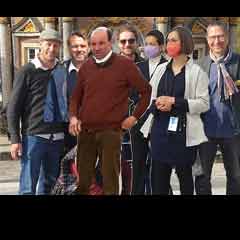 ISB_Team
ISB_TeamA German Perspective on the Akuaba Doll in the Museum Fünf Kontinente Munich
Akuaba Dolls are wooden figures that were and apparently still are in use mainly in rural areas in southern Ghana. Young women hoping for pregnancy or - if they are already pregnant - for the health and beauty of their child, wear these figures on their bodies like real babies and take care of them. That is why they are called 'dolls'.
Akuaba or better Akua-Bà literally means 'child of Akua'. The story tells of "a woman named >Akua< who could not get pregnant and went to a local diviner or priest and commissioned the carving of a small wooden doll. She carried and cared for the doll as if it were her own child, feeding it, bathing it and so on. Soon the people in the village started calling it >Akua< >ba< - meaning >Akuaba's child<, since >ba< means child. She soon became pregnant and her daughter grew up with the doll." (Annor et al., p. 308)
This story also forms the basis for the function of the widespread dolls as aids in a desire for pregnancy. An Akuaba Doll expresses this desire for a child, so the figure is 'cared for' by a girl from puberty onwards. This happens within the family. Outside the family, Akuaba Dolls can be found in shrines under the care of a ritual specialist, where they can be borrowed for their purpose.
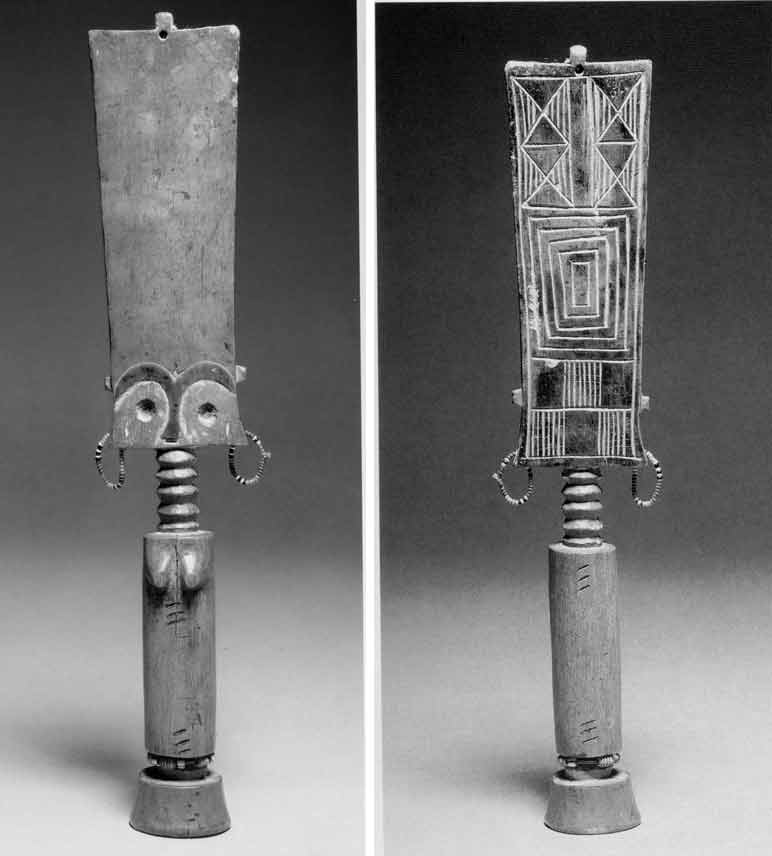
Fig. 1 & Fig. 2 Views of the Akuaba Doll in the Munich Museum Fünf Kontinente
Anonymous artist. Fante Fertility Figure. Early 20th century, Wood. 27,5 cm. Museum Fünf Kontinente. Presentation at Museum Fünf Kontinente.
© Museum Fünf Kontinente
Description
The doll in Munich's Museum Fünf Kontinente (Fig.1) comes from the Fante area. It shows a female figure. The very strongly abstracted forms and proportions symbolise various aspects:
The rectangular shape of the very flat head becomes - seen from the front - somewhat broader in an elegant curve towards the top. A strikingly high forehead, with eyes, eyebrows and nose only indicated, while mouth and ears are missing. The accentuated arch segments of the eyebrows flow together and then form the nose. On the back, the head has geometric patterns (Fig. 2). Added earrings of glass beads give the figure a colourful accent. For Kecskési (p. 38), their daintiness is a sign that the doll has been lovingly treated. At the very top there is another small moulding with a hole where hair was originally attached (compare Fig. 3a).
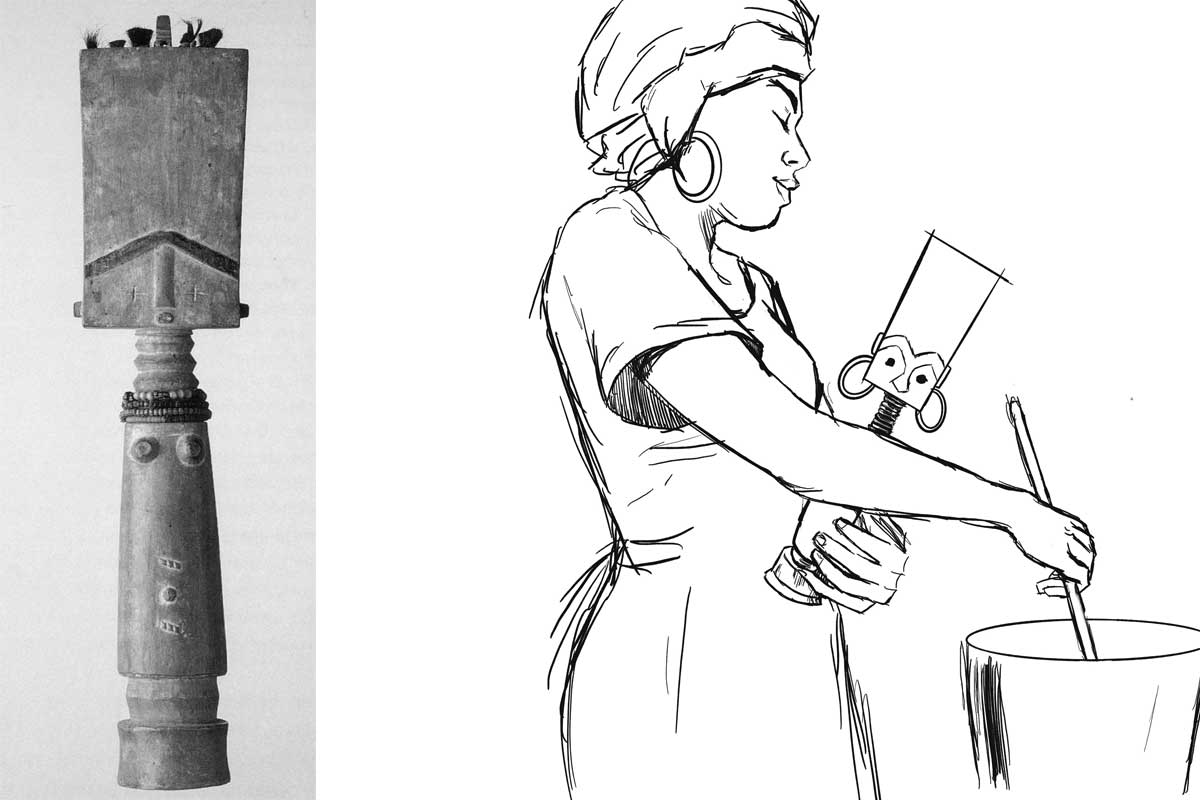
Fig. 3a: Akuaba Doll from the Linden Museum Stuttgart (Forkl p. 94). Fig. 3b: Use of the doll (drawing by Vanessa Rast - courtesy the artist)
The neck has five rings. It sits on a very slender, round trunk, which in turn stands on a delicate base. Striking are two groups of three diagonal embrasures each, which are repeated on the back. The figure has no arms, the legs are short stumps. The protruding forms in the chest area mark the figure as female. Its strict symmetry is softened by small deviations. One can well imagine taking the cylindrical figure in one's hand.
Material and technique
A ritual specialist to whom a woman who wishes to have a child goes makes the decision about the choice of doll at the respective shrine. If no suitable figures are available there, he instructs the woman to order a new Akuaba Doll from the woodcarver. The craftsmen then visit the tree to obtain the wood and ask the tree's spirits for permission to do so (oral information from the Ghanaian colleagues 2022 in Bayreuth [Link]). The Akuaba Doll in the Munich Museum was carved from softwood. (There are also darker examples made of hardwood, for example among the Ashanti, also an Akan group, as the presentation in the Ghana National Museum in Accra shows - see Fig. 4.) In the example in Munich, eyebrows and nose are darker.
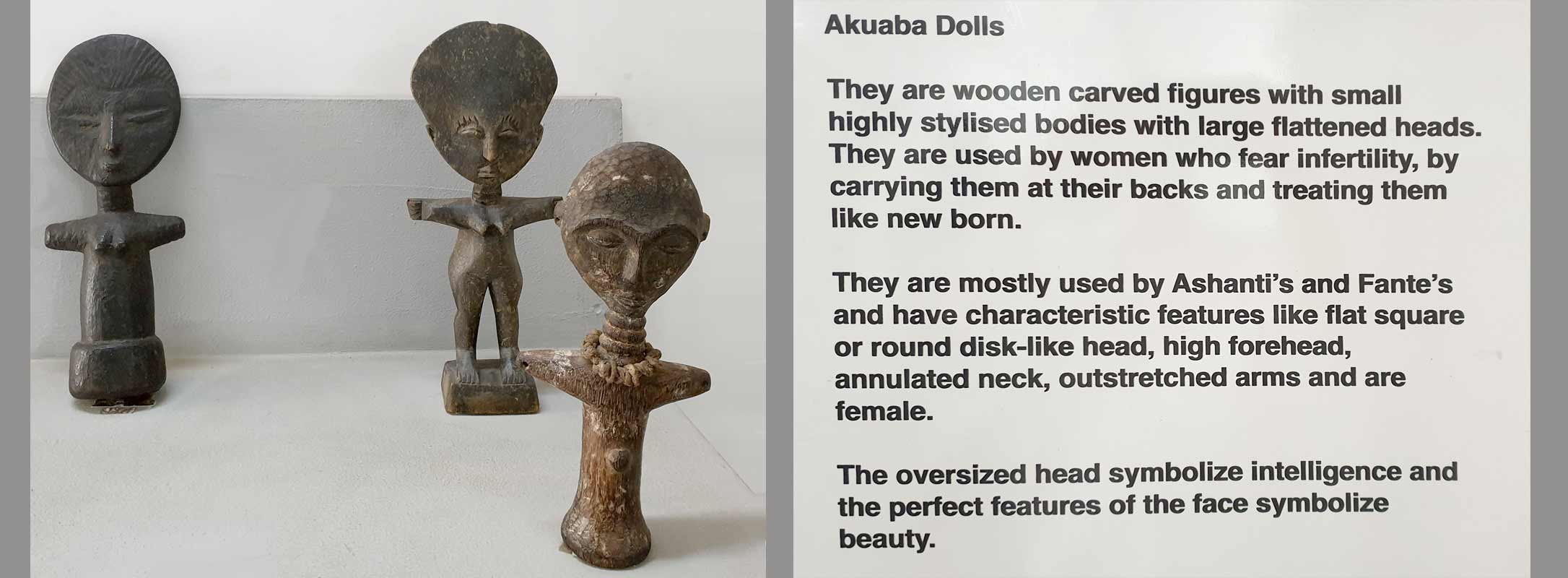
Fig. 4: Presentation of Akuaba Dolls at the Ghana National Museum in Accra (March 2023. Photo: the author)
Interpretation of the Munich figure within the original Ghanaian context
(1) Utility function: The figure is made for the family context. It is meant to lead to fertility, sometimes also to the beauty of a child. The size (height 28 cm), the pleasant material and the weight allow the figure to be carried and cared for like a baby. When an Akuaba Doll has fulfilled its task, it is often returned to the ritual specialist who accompanies the process.
The breasts indicate a female figure, which does not necessarily have to do with a corresponding desire for the sex of the child desired. Forkl (p. 94) assumes, however, that "women desire daughters, on the one hand as progenitors in a matrilineality oriented society, and on the other hand as support in household work." (There are also Akuaba figures with the characteristics of both sexes and probably male specimens; furthermore, breastfeeding examples and those who in turn carry other Akuaba Dolls.)
(2) Body shape: T The conspicuous and disproportionately large rectangular head symbolises the head as the seat of intellect and wisdom in local imagery. Akuaba figures among the Ashanti show round heads (see fig. 4), but they are also proportionally very large. High foreheads and flat faces correspond to the ideal of beauty. Luxuriant bulges on the necks tell that the figure is well-fed and thus refer to happiness and prosperity. There are Akuaba Dolls that show more feminine body shapes, wider hips, possibly emphasised by strings of pearls.
(3) The spiritual context: As Nkrumah writes in her contribution, an Akuaba figure serves as a dwelling place for a soul being, a being that is in a transitional area between the earthly and the spiritual world. Carrying and caring for it is a prerequisite for the entrance of such a soul being, which then sets out to appear on earth as a living being, i.e. to enter the family of the young woman through birth. A ritual specialist is involved in the selection, consecration and regulations for use. After a birth, the figure is returned to the ritual specialist.[1]
(4) The social and cultural context: The figure can also be seen as a sign of the traditional expectation for a woman to bring children into the world. In recent times, where traditional societal expectations of women collide with other worldviews, the ritual use of Akuaba Dolls obviously decreases .

Fig. 5: Souvenir shop at Accra Airport (March 2023. Photo: the author)
In the last decades, an interesting production for tourism has been established - apparently the dolls are seen as 'typical for Ghana'. However, these are not Akuaba Dolls in the traditional sense, but rather 'quotes'.
How can one relate Akuaba Dolls to European visual traditions and experiences?
As familiar as the image of an Akuaba figure may seem in Europe - as a 'typical' example of traditional African art - its traditional meaning is unknown in Europe. Nevertheless, it obviously seems to be attractive to tourists, e.g. as 'airport art' (see Fig. 5), perhaps because its shape somehow corresponds to the cliché idea of 'typically African', the size fits well into the suitcase, or the large head (by means of the Bambi effect) makes it appear 'cute'.
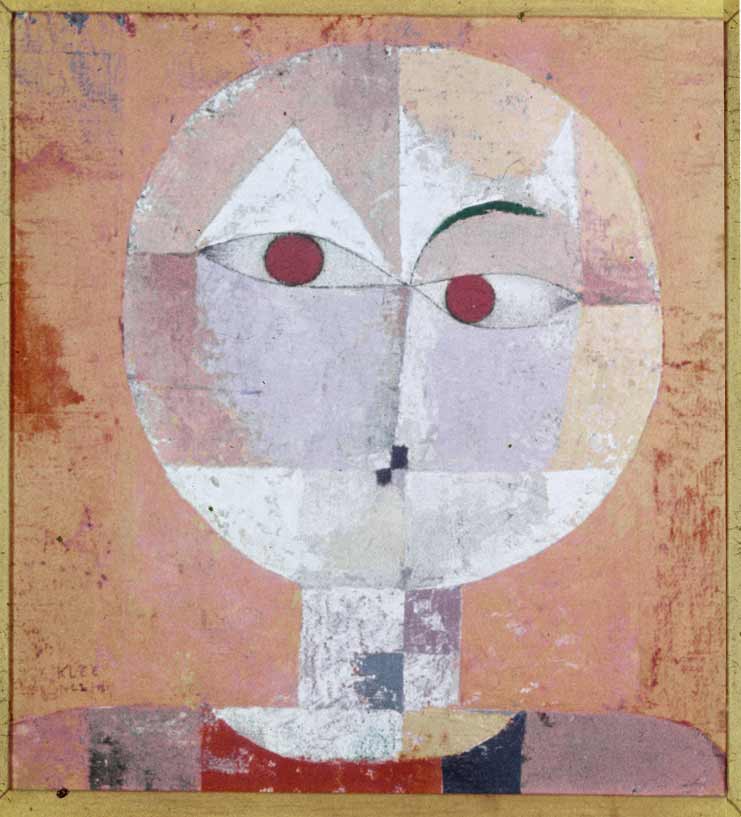
Fig. 6: Paul Klee. Senecio. 1922. Oil on chalk base on gauze on cardboard. 40.3 × 37.4 cm. Kunstmuseum Basel (Wiki Commons)
In the context of art history, the influence of Akuaba Dolls (and many other carved representations from West Africa) on European art of the early 20th century (see Fig. 6) is of interest. [2] The formal similarity to Klee's painting (fig. 6) is striking at first glance, but whether this is a direct reference must first be verified. In the context of art history, it would then be of interest in a next step which aesthetics were of interest to the artists at the time and which they blanked out, i.e. which "image of Africa" they wanted to have and also communicate.
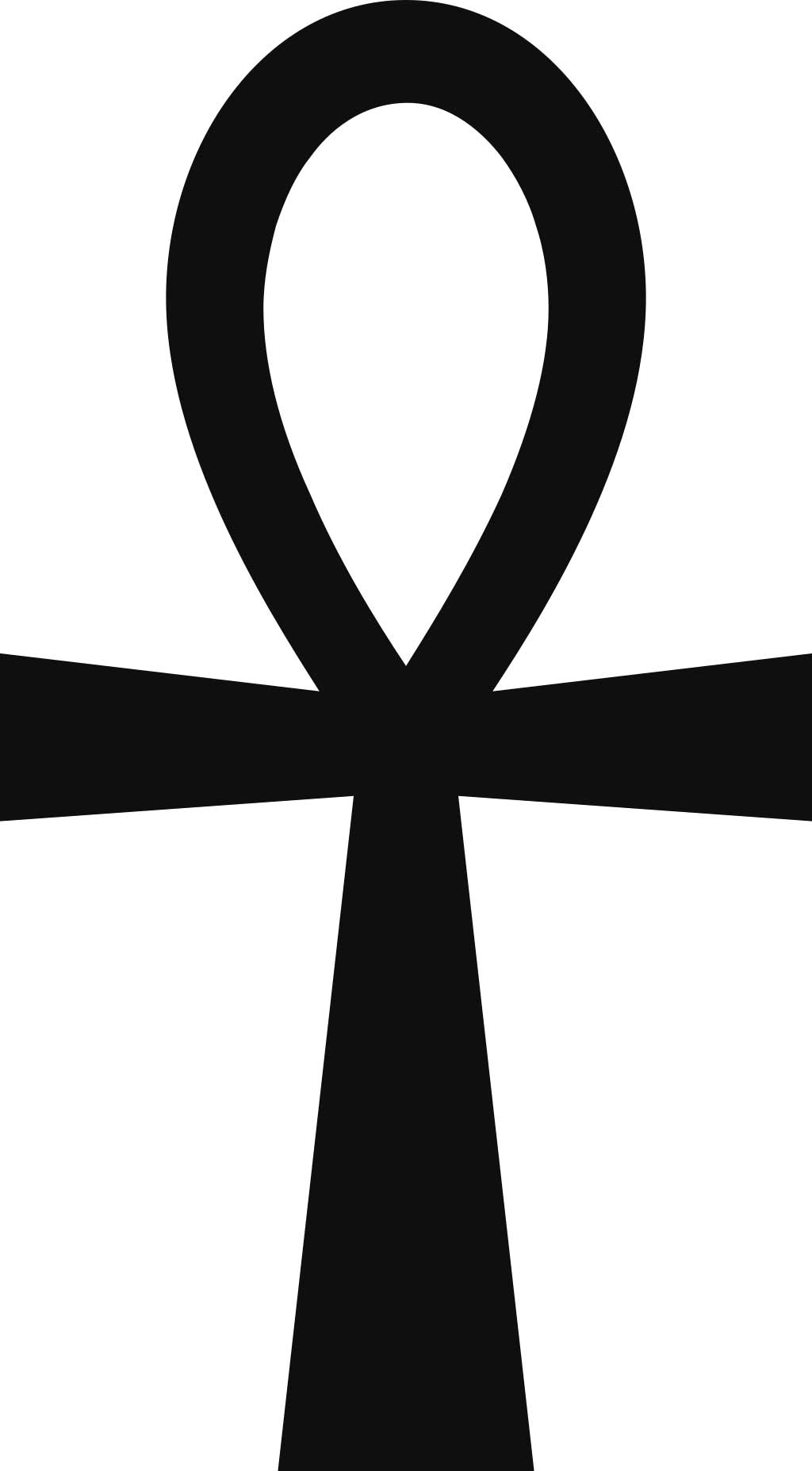
Fig. 7: Hieroglyph Anch
(Photo: https://anthrowiki.at/Anch)
The authors also considered whether the formal similarity of the Akuaba Dolls with the ancient Egyptian hieroglyph ‘Anch’ (the "loop of life" or the "key of life" - see Fig. 7) could have come about through a historical relationship between Egypt and Ghana. This would also correspond to the accentuation of content in Nkrumah's text with regard to the "representation of the woman as the giver of life" (see her chapter). Nevertheless, this association would also have to be examined more closely. To assume a universal archetype in the sense of C. G. Jung appears to be pedagogically misleading in its levelling effect.
In the German educational context, on the other hand, it seems important to link the figure - beyond clarifying its function - to Akua's story and thus include the role of narratives. This prevents another comparison that is also too quick and reductive when it comes to social practices (and not the isolated object), as dolls are also cared for and nurtured in traditional European contexts, but mostly by young children before puberty. So, in Europe, it does not belong to a fertility ritual, even if the child puts itself in the role of a ‘little mother’ or ‘little father’. (Another interesting question, whether Ghanaian women also go to a doctor when they are not pregnant, and whether there are comparable ritualised practices in Central Europe - for example among alternative practitioners or in esoteric circles - would have to be addressed in interdisciplinary approaches.)
Such comparisons appear to be useful, as they can show both similarities and differences, with the aim of better recognising one's own perceptual conventions or stereotypes and thus putting them into perspective. All this still leaves the question of the status of this doll in Munich when it is displayed in a showcase in a European museum (see Lab entry: What is an object? Link). Such a presentation contradicts its ritual and spiritual use. An Akuaba is then no longer an Akuaba. But what is it then?
Sources
This text is based on:
- Contribution by Gertrude Nkrumah: https://explore-vc.org/en/objects/the-akuaba-doll.html
- Talks with the Ghanaian EVC partners in Bayreuth in 2022: https://explore-vc.org/en/activities/archive/april-22-25-2022-joint-workshop-uew-team-and-isb-team.html
- The presentation at the National Museum in Accra, seen in March 2023: Fig. 4.
- Reading: see list of references
References
- Akyeampong, E & Obeng, P. (1995). Spirituality, Gender, and Power in Asante History. The International Journal of African Historical Studies. 28, 3. pp 481-508
- Anderson, Elizabeth L. (1989): The Levels of Meaning of an Ashanti Akua'ba. In: Michigan Academican. 21 205-219
- Annor, I., Dickson, A & Dzidzornu, A. G. (2011): General Knowledge in Art. Accra (Aki-Ola Publications)
- Forkl H. (1997): Healing and body art in Africa. Stuttgart (Lindenmuseum)
- Kecskési, M. (1999): Kunst aus Afrika - Museum für Völkerkunde München. Munich (Prestel)
Footnotes
[1] The number of five neck bulges here (there are also specimens with 3, 8 or 9 bulges) may also be a reference to the sacred number of "Odumankoma", the Akan creator deity, in this context.
[2] On the relationship of the European avant-garde to the aesthetics of West African carvings, see also the discussion of the Blue Rider post on this website (link 1 and 2).
 Christin Winter
Christin WinterMy Encounter with Black Feminism and Womanhood Inspired by the Akuaba Doll
I first came in contact with the Akuaba Doll while reading Bernardine Evaristo’s award winning book Girl, Woman, Other. In the book, the character Nazinga was described as “at least six foot tall with ornamented dreadlocks, large wooden Akuaba fertility doll earrings, red trousers, a cream embroidered caftan and strappy Roman sandals“ (Evarsito 2020, p. 81). I searched for Akuaba fertility doll earrings on the internet, but did not delve further into the topic at this time. A few weeks later, attending a seminar with Dr. Wagner at Friedrich-Alexander University in Erlangen, I stumbled upon the Akuaba Doll again. I knew, I had to take this opportunity to get to know her better. The comment from Gertrude Nkrumah is to be considered my first source of information about the history of origin and the tradition into which the Akuaba Doll is woven.
Through Nkrumah's feminist perspective on the Akuaba Doll, I wanted to dive deeper into the topic of Black Feminism to extend my knowledge in feminist theory. With the Akuaba Doll as my point of departure, I decided to focus on the ability to bear children and the social significance of abortions for Black women.[1]
At this point I move past the Akuaba Doll and her cultural context. Other works of art could have led me to a similar path. I have chosen to look at the Akuaba Doll with categories, which are not directly related to the Akuaba Doll and her cultural context as I questioned whether I have the right to write about the Akuaba Doll considering the colonial past of my own country, Germany. I am a white, European woman, a feminist, who is aware of intersectionality and racist structures within the society I have been socialised in and its way of thinking, but with no cultural connection to the Akuaba Doll other than the colonial impact on African art and culture (cf. Kushinator, Rahman and Dompreh, 2020[2]). Therefore, I chose a topic to which I have access via my role as a student of pedagogy and focus on Black Feminism and Womanhood of Black women living in white-dominated countries.
In white-dominated societies, Black women were excluded from a feminist movement for decades (cf. hooks, p. 216f.). White women systematically utilised the racist hierarchy within women to gain power and thereby forced a specific Black feminist movement to form and uncover the oppression Black women had and still have to face. The prefix “Black” emphases the specific oppression Black women face in white-dominated countries, although, of course, there has been feminist movements in Black-dominated countries before (cf. Roig quoted from Berlin Biennale 2022, 48:00 – 49:50).
In American history, Black women have always had to fight to be seen as women. As bell hooks gets to the heart of it: “the black female was a creature unworthy of the title woman; she was mere chattel, a thing, an animal” (hooks 2015, p. 214). Sojourner Truth[3] had to bare her breasts to prove that she was a woman indeed. Being yelled at “I don’t believe you really are a woman” by a white man represents the contempt and disrespect for Black womanhood (cf. hooks 2015, p. 214). In her famous speech “Ain’ I a Woman” (1851), she argues, that she – as her white women audience too – is indeed a woman. Here she argues with characteristics, that can also be found in the Akuaba Doll. The most important argument is the carrying and bearing of children and the “mother’s grief” (Truth 1851 quoted from hooks 2015, p. 215) she cried out, when her children were sold into slavery.
The ability to bear children has always played an important role in the history of womanhood and was – and still is – utilised to oppress and exploit Black women. In times of slavery, Black women were forced to procreate and bear children, who were worth a lot of money in a perfidious system of human trafficking (cf. Federici 2020, p. 23f.). In the late 20th century, Black men in the U.S. reasserted what they called their “rightful positions as patriarchs” (Taylor 2022) and denounced birth control and abortions as genocide that compromised the future and freedom of Black families by limiting the Black population (cf. Federici, p. 25f.). With the overturn of Roe v. Wade[4] – Black women are specifically affected, as Kwajelyn Jackson, Executive Director of the Feminist Women’s Health Center in Atlanta, Georgia puts it into a nutshell: "Abortion bans are inherently racist because they do not consider the lived experiences of Black people and other communities of colour. Many state policymakers would rather criminalize and endanger Black birthing people than supply them with all of the resources they actually need" (Jackson quoted from Long 2022). Even before the abortion laws were restricted, Black (and other BIPoc) women in the U.S were two to three times more likely to die from pregnancy-related causes than white women (cf. CDC 2019). Being allowed to decide whether you want children or not and furthermore, having access to certain facilities to end a pregnancy or not is still a bound to privileges. It is not only tied to the health care system, but also to cultural beliefs and practices, to the financial and educational background, as well as to class, race and many other factors.
In a world imprinted by patriarchy and privilege, it is important to unravel power structures that dominate our world, uncover where they come from and how different groups are affected differently. As patriarchal patterns of thought are inscribed in nearly all societies of our world, it is a tough task to uncover them in every aspect of our lives and hence require lifelong learning and feminist thought. Nevertheless, it is indispensable in order to build an anti-racist gender-equal society in which every woman can decide herself, if she wants to get children without fearing financial or social consequences.
In this context the Akuaba Doll can be interpreted as an early moment of feminism, where women disrupt the patriarchal system that marginalizes them. As Nkrumah states, by deciding about the gender of her child in a binary system, she chose to bear a girl rather than a boy, which – in the matrilineal line – effects the lineage, inheritance, and chieftaincy succession (cf. Nkrumah 2020). In my eyes, Akua used the power she had to influence her life to her advantage. Yet the worth of women was still tied to her sexual and reproductive abilities, but nevertheless she made a first step by empowering women to stand up for themselves and for their own lives.
References
Berlin Biennale (2022). Panel: Afrofeminism. Bridging the Gap. <https://12.berlinbiennale.de/media/panel-afrofeminisms-bridging-the-gap/> (09/30/2022).
Center for Reproductive Rights (2022). The World’s Abortion Laws. <https://reproductiverights.org/maps/worlds-abortion-laws/> (09/30/2022)
Evaristo, B. (2020). Girl, Woman, Other. UK: Penguin Books.
Federici, S. (2020). Jenseits unserer Haut. Körper als umkämpfter Ort im Kapitalismus. Münster: Unrast.
hooks, b. (2015). Ain’t I a Woman. Black Women and Feminism. New York: Routledge.
Kushiator, G., Rahman, A. and Dompreh, H.-O. (2020). The Influence of Western Culture on Traditional Art Forms and Cultural Practices: ‘Akuaba’ doll among Akan Women in Africa. ADRRI Journal of Arts and Social Sciences, Ghana: Vol. 17, No.6 (5), S.59 – 71.<https://www.researchgate.net/publication/344438737_The_Influence_of_Western_Culture_on_Traditional_Art_Forms_and_Cultural_Practices_%27Akuaba%27_Doll_Among_Akan_Women_in_Africa> (09/30/2022).
Long, S. (2022). Abortion Bans pose a Danger to all Mothers. For Black Women, they’re especially damaging. <https://www.refinery29.com/en-us/2020/10/10015405/abortion-ban-racism-black-women-effects> (09/30/2022).
Nkrumah, G. (2021). Inversion of Hegemony with Ideas of Feminity. <https://www.explore-vc.org/en/objects/the-akuaba-doll.html> (09/30/2022).
Taylor, K.-Y. (2022). How Black Feminists defined Abortion Rights. <https://www.newyorker.com/news/essay/how-black-feminists-defined-abortion-rights> (09/30/2022).
Footnotes
[1] In this context, I will delve into the topic of reproductive abilities and use the term "woman" throughout my text. However, I want to clarify that the ability to bear children is not a defining characteristic of womanhood. Not all women have a uterus, and not all women are able to bear children. Furthermore, one's physical appearance is not a determining factor of one's gender identity. Despite this, the reproductive ability is instrumentalised in our society and can lead to harmful stereotypes, which many women are confronted with at some point in their lives.
[2] In addition to exploring the different forms and cultural backgrounds of Akuaba Dolls, this article delves into the ways in which culture, religion, and artistic expression are intertwined in African cultures. The article points out how the colonization by white, western, and Christian men and women caused a change in function and values of the Akuaba Doll.
[3] Sojourner Truth lived from 1797 to 1883. She was an American abolitionist of New York Dutch heritage and a women’s rights activist. She was born into slavery, but escaped to freedom in 1826. In 1851 she joined George Thompson, an abolitionist and speaker, on a lecture tour through central and western New York State. At the Ohio Women’s Rights Convention in Akron, Ohio, she gave her speech with later became famous as “Ain’t I a Woman?”
[4] Roe v. Wade is a legal case in which the U.S Supreme Court ruled that unduly restrictive state regulation of abortion is unconstitutional and that the Constitution of the United States generally protects a pregnant woman's liberty to choose to have an abortion. This decision from 1973 was overturned by the U.S. Supreme Court in 2022.
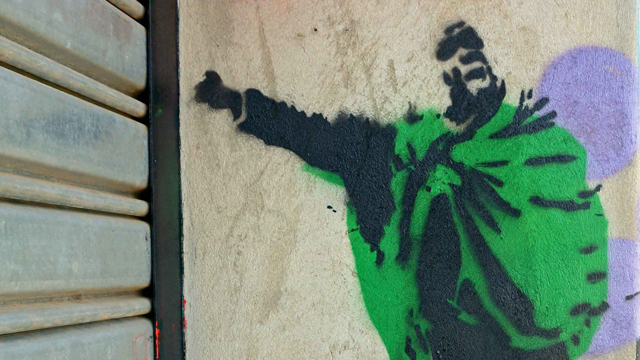
-
 Runette Kruger
Runette KrugerCape Town based Tokolos Stencil Collective uses stencil and graffiti to address socio-political issues such as lingering racial inequality, labour exploitation, segregation, and poverty. The name of the collective refers to a dwarflike mythical being, the tokoloshe, that materialises at night to frighten unsuspecting victims, now mobilised by the Collective to “terrorise the powers that be”, or, the status quo of inequality (Tokolos-Stencils, 2015). The declared aim of the Collective is to highlight continuing spatial and social segregation in a post-apartheid South Africa (Botha, 2014).
The social discrepancies whereby the majority of South Africans continue to experience social and economic isolation are addressed by Adato, Carter and May (2006), who cite the Poverty and Inequality report of 2000. In the report, South Africa is described in terms of two parallel worlds, “one, populated by black South Africans where the Human Development Index (HDI) was the equivalent to [that of] Zimbabwe or Swaziland. The other … [populated by] white South Africa in which the HDI [was] between that of Israel and Italy” (Adato, Carter and May, 2006, p. 226). This inequality had, disturbingly, only deepened between 2000 and 2006, and in a March 2018 report by the World Bank, South Africa is cited as the most unequal country globally in 2015, based on the Gini coefficient of 0.63 of that year (World Bank, 2018, p42). The Gini coefficient measures the gap in income between the wealthiest and poorest members of a population. A score of 0 would indicate absolute income equality, and a score of 1 would indicate that one person owned all the wealth. This disparity, as well as the resultant exploitability of the poor, informs the Tokolos Stencil Collective’s main subject matter.
The most widely recognizable image associated with the Collective is the Remember Marikana stencil, which combines these words with an image of Mgcineni Noki, known as Mambush to his friends and family, or, within the context of the Marikana massacre, The man in the green blanket. The Marikana event played a formative role in the establishment of the Collective – it was founded in 2013 on the day of the first anniversary of the event (Anaya, 2014). The massacre is widely regarded as a watershed crisis, comparable with the Sharpeville tragedy of 21 March 1960, now commemorated as Human Rights Day.
Noki was a community leader who became a prominent news figure in the days before the Marikana massacre, identifiable by the bright green blanket tied around his shoulders. The Marikana massacre took place on 16 August 2012 when striking miners working at the London-based Lonmin Platinum Mine in the North-West Province were gunned down by police wielding automatic rifles, violently ending a six day build-up of tension. Noki grew up in Thwalikhulu, a small village in the Eastern Cape, and was aged 30 at the time of his death. He had a wife and two year old daughter who lived in Carletonville, about 100km away. He is reported to have attempted to de-escalate the growing violent skirmishes, and to focus the gathered strikers on their aim – to increase their wages. The evening before the massacre, the miners were led to believe that if they returned to work, wage negotiations would begin. In the hours before the final events, while the miners’ repeated requests for negotiations were ignored, they were finally beseeched by their union to withdraw. Weighing up the growing indications of a final crack down, Noki began to lead a group of miners away from the outcrop of rock that had been the main scene of conflict over the course of the week. As they reached the nearby settlement their path was blocked by police and barbed wire. Noki led the men another route, only to be blocked again. The ensuing gunfire on the group led to the death of 17 men, Noki among them, identifiable by his green blanket as he lay on the ground. A second group of men were also attempting to leave the site, and were fired at with 295 bullets, resulting in 17 more casualties. The strike continued for another five weeks before the mining company agreed to negotiate. Pay was increased by 7% (Davies, 2015).
I specifically chose this image of Noki, his arm raised while exhorting and encouraging his fellow workers, instead of the dehumanising imagery of up-close, lifeless mineworkers that was freely shared by the press. In contrast, this image in the Remember Marikana stencil shows him as a leader with courage and purpose, and has become an iconic symbol of the struggle for dignity and an adequate wage among the most exploited workers in South Africa, on whose labour an economy that they are unable to access, has been built. Commenting on the lot of the under-classes in 1940, during the impending humanitarian crisis of the Second World War, Walter Benjamin (1969, p. 255 original emphasis) reminds us that “every image of the past that is not recognized by the present as one of its own concerns threatens to disappear irretrievably ... To articulate the past historically ... means to seize hold of a memory as it flashes up at a moment of danger [failing which] even the dead will not be safe”. The Remember Marikana image reminds us that it is crucial to prevent the sacrifices of the most vulnerable members of society from slipping into the amnesia of oblivion.
References
- Adato, M., Carter, M.R., & May, J. (2006). Exploring poverty traps and social exclusion in South Africa using qualitative and quantitative data. The Journal of Development Studies, 42(2), 226-247.
- Anaya, V. (2014, September 10). Tokolos Collective: “Cape Town is a very oppressive place for the poor”. Wiriko Artes Y Culturas Africanas. Retrieved from https://www.wiriko.org/tag/marikana/
- Benjamin, W. (1969). Illuminations. Edited by Hannah Arendt. New York: Schocken.
- Botha, N. (2014, November 21). Tokolos Stencil Collective: 'Crap' art designed to unsettle. The Mail & Guardian. Retrieved from https://mg.co.za/article/2014-11-21-tokolos-stencil-collective-crap-art-designed-to-unsettle.
- Davies, N. (2015, May 22). The savage truth behind the Marikana massacre. The Mail & Guardian. Retrieved from https://mg.co.za/article/2015-05-21-the-savage-truth-behind-the-marikana-massacre.
- Tokolos-Stencils. (2015). Retrieved from http://tokolosstencils.tumblr.com/.
- World Bank. (2018). Overcoming poverty and inequality in South Africa: An assessment of drivers, constraints and opportunities. Washington DC, USA.
published March 2020
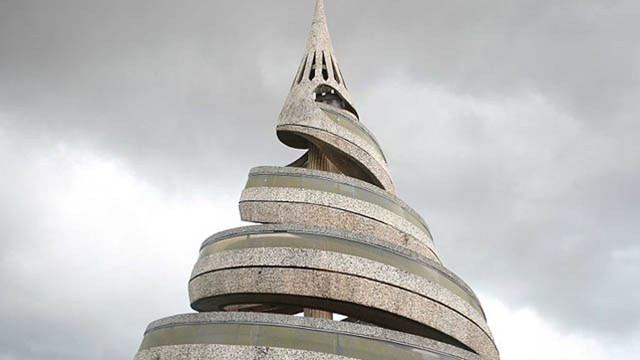
-
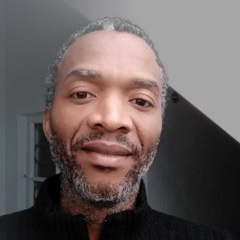 Paul-Henri Souvenir ASSAKO ASSAKO
Paul-Henri Souvenir ASSAKO ASSAKOThe "reunification" is the result of a synergy of different societies willing to modify their way of life and the principles of their socio-cultural organization in order to cope with the vicissitudes of the colonial yoke. These societies are based in the Great West, the Coastline, the Southern Forest, the East and Lake Tchad, the regions that mark Cameroon’s geography. Each of these regions is home to a large number of ethnic groups such as the Bamileké, the Bamun, the Akunakuna, the Babungu, the Duala,the Beti, the Fang, the Peul, the Kirdi, the Fula, the Dourou, the Fali, etc. The date of May 20th, 1972 marks Cameroon’s passage from Federal Republic to United Republic by referendum. This date can be said to be the culmination of the political commitment initiated on the 1st of October 1961 with the reunification. Based on this commitment of 1961, Cameroon continued the construction of a unitary state and the consolidation of national unity encompassing the country's entire population. It can be argued that this unitary state was the only way to protect Cameroon’s sovereignty after Independence and to implement projects of prosperity. In President Ahidjo’s words of 1961: "It is together that we will make our Cameroon finally returned to the borders of our ancestors1, a modern country where it will be good to live in a climate of freedom, fraternity and prosperity." (Mveng 1985, 262).
The Reunification Monument is situated on "Plateau Atemengue", Yaoundé’s political and administrative centre. In this area, the colonial administration had placed institutions for education and administration that were crucial constituents of the new country: the National Assembly, the school of administration and the judiciary, the military headquarters, the Leclerc High School and the University of Yaoundé, to only name a few examples. The large boulevard initially used for the parades commemorating the celebration of the feast of national unity is located on this plateau as well. Placed on top of the city, amongst the republic’s essential institutions the Reunification Monument was obviously meant to become a reminder of the sense of unity amongst the initiatives engaging the Cameroonian republic.
The ensemble of the Reunification Monument consists of an architectural structure and a sculpture. According to Noé Tonye2, its shape emerged from sketches selected by the public authorities following a national and international competition on the theme of reunification launched by the Cameroonian Head of State. However, the identity of the authors of this monument suggests that they might also have been directly commissioned because they appeared qualified for the job due to their previous projects. These artists are Gédéon Mpando and Engelbert Mveng with his “Art Nègre Workshop”, who both used to receive public commissioned in Yaoundé at that time. Annette Schemmel (2015, 66) points out with regard to Engelbert Mveng: “As the author of Cameroon’s first national history, a contributor to ABBIA {Revue}, and a politician in Ahidjo’s service, Mveng enjoyed an excellent reputation among Cameroon’s élites. His social standing also led to secular commissions ». A third partner was the French architect Armand Salomon. His involvement in the realisation of this monument is due to his proximity to the French government, who probably recommended him to the Cameroonian government, according to Noé Tonye.
Although the conditions of the commission are somewhat obscure, Engelbert Mveng is known to be the designer of the spiral tower as well as of the representation of the cultural areas of the new state, while Gédéon Mpando created the monumental statue and Armand Salomon was in charge of the realization of the spiral-shaped building. Arguably, the teaming up of three professionals had a symbolic dimension because building a "merged" nation called for the commitment of society as a whole. Such a vast project required an explosion of research and creative initiatives towards a culture of common values driven by teaching and education. The involvement of several Cameroonian artists and a French architect in the design and the construction of this monument reflects the political will to involve different parts of society and to create mechanisms that are operational and serving the interests of national unity.
The architectural component of the monument to the reunification of Yaoundé has the appearance of a giant cone built of concrete. This cone consists of two spirals which describe a sinusoidal movement, and which unite on the top. The basis of this architecture is a circular structure and each spiral is a form of concrete slide made up of stairs to the top. A high column in the centre and four parallel pillars support the structure as a whole. For these four main pillars, the Art Nègre Workshop has designed reliefs showcasing characteristics of lifestyles, landscapes, cultural and artistic elements from the North, South, East and West of Cameroon. In a similar style, the team has pictured school scenes, construction scenes of modern architecture, scenes of farming, etc. for the decoration of the underground part of the building, thus celebrating the process of transformation and development of both society and land.
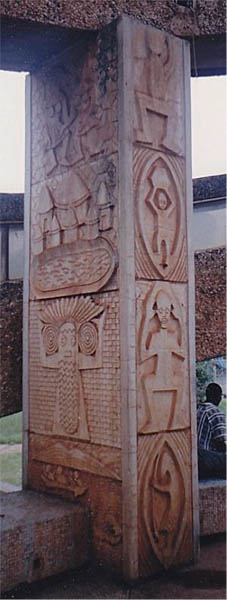
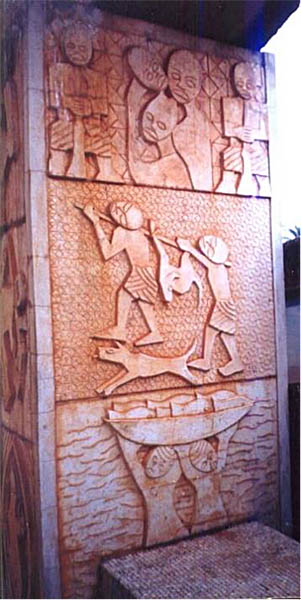
Images: ASSAKO ASSAKO Paul-Henri. 2014. L’art au Cameroun du XXe au début du XXIe siècle : étude des expressions sculpturales en milieu urbain, thèse présentée et soutenue en vue de l’obtention d’un doctorat/Ph.D en Histoire de l’Art, UY1-Cameroun, p. 571.
Details of a pillar cladding representing the diversity in the Cameroonian regions: the cone-shaped architecture and an initiation mask of the Kounga from Cameroon’s West; the abbia motifs and the hunting scene characteristic of the forests on the South Cameroonian plateau and finally the fishing scene which recall the Littoral region.3
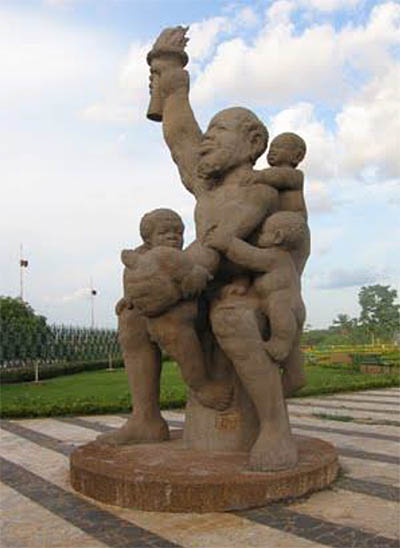
Engelbert Mveng and Atelier Arts Nègre (design, decoration in relief on the architectural structure), Armand Salomon (architecture), Mpando Gédéon (sculpture), 1973 -1976, concrete, H: 7m, Atemengue Plateau Yaoundé, Cameroon. Photo: Paul-Henri Souvenir ASSAKO ASSAKO
The sculpture by Gédéon Mpando that is situated in front of the spiral architecture reinforces the idea of a united nation as a foundation for development, fulfilment and prosperity in its own way. The artist has personified the nation in a figurative sculpture. The composition represents a stocky colossus (53 tons, height of 7m) in a seated posture of great stability. He holds a torch in his right arm while his left hand serves to support the four children who are clutched to him. The children’s visible efforts to climb up the colossus make for a strong vertical tension, echoing the cone-shaped architecture in the background. Mpando’s sculpture reveals a kind of serenity. Its strong expressiveness is due to a harmonious play of masses and volumes in the treatment of forms. Both artists’ contributions translate a vision of the nation that is both poetic and critical and as such essential to the development of a national society. Both components of the monument incorporate the idea of belonging to a nation that is united and hence display the most universal property that an image can acquire in such a context: its true ontological significance (H. Belting, 2004).
Let us come back to the relevance of this monument’s imagery. The inhabitants of the territory of Cameroon have inherited a common history of colonization. This history has forged socio-cultural, symbolic, emotional and political ties between ethnic groups. E. Renam speaks of these ties as the “fusion of populations” (1882). These links constitute the raw material of the national collective memory. It can be argued that it is worthwhile to overcome the obstacles to the consolidation of this nation due to the socio-cultural sedimentation of these ties. Disappointment with the promises of prosperity have resulted in calls to return to regional autonomy, be it in the form of a federal state or in the form of secession. Precaution needs to be preserved, however, because deconstructing the Cameroonian Republic constituted in the 1960s and 70s would imply calling into question the historical heritage, that Cameroon was born from the colonial system developed at the African conference in Berlin in 1884. The consequence would be the restoration of a precolonial environment. Instead, it seems more productive to critically analyse the historical stakes in favour of the development of today’s society.
Overview report on the current political situation in Cameroon (April 2021) - in German: Link https://www.bpb.de/internationales/weltweit/innerstaatliche-konflikte/327306/kamerun?pk_campaign=nl2021-04-07&pk_kwd=327306
References
- RENAN Ernest. “Qu’est-ce qu’une nation?” Bulletin de l’Association Scientifique de France. 26 March 1882.
- BELTING Hans. 2004. Pour une anthropologie des images, Ed. Gallimard
- BAHOKEN J.C. et ATANGANA Engelbert. 1975. La politique culturelle en République unie du Cameroun. Éditions Les Presses de l’Unesco.
- MVENG Engelbert. 1985., Histoire du Cameroun. tom 2. Yaoundé. Ed. CEPER.
- CHEICKH ANTA DIOP. 1079. nations nègres et culture, Ed. Présence Africaine
- SCHEMMEL ANNETTE. 2015. Visual arts in Cameroon - A Genealogy of Non-formal Training 1976-2014, Langaa Research & Publishing CIG, Mankon.
- ASSAKO ASSAKO Paul-Henri.2014. L’art au Cameroun du XXe au début du XXIe siècle: étude des expressions sculpturales en milieu urbain, thèse présentée et soutenue en vue de l’obtention d’un doctorat/Ph.D en Histoire de l’Art. UY1-Cameroun. p. 571.
- https://www.osidimbea.cm/collectivites/centre/monument-reunification/
- www.mbogliaa.com
Footnotes
1) The expression ‘boundaries of ancestors’ refers primarily to the idea of traditional cultural heritage and its appropriation for planning the prosperity of the nation.
2) https://www.osidimbea.cm/collectivites/centre/monument-reunification/
3) Source of images: ASSAKO ASSAKO Paul-Henri. 2014. L’art au Cameroun du XXe au début du XXIe siècle : étude des expressions sculpturales en milieu urbain, thèse présentée et soutenue en vue de l’obtention d’un doctorat/Ph.D en Histoire de l’Art, UY1-Cameroun, p. 571
published February 2021
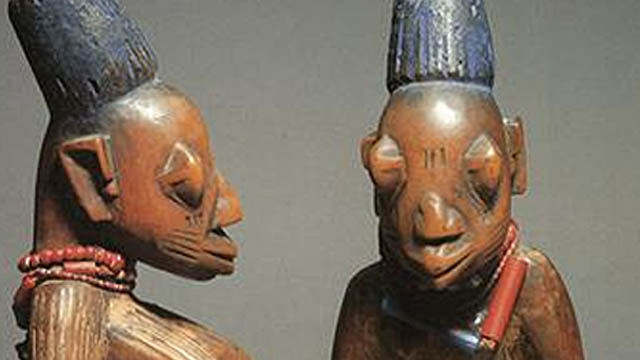
-
 Ebenezer Kwabena Acquah
Ebenezer Kwabena AcquahHistorical link between the Ga and the Yoruba
It is believed that the Ga-Adangbe came from Ile Ife at Yorubaland in Nigeria through Seme, a settlement on the border between Nigeria and Republic of Benin of today. According to popular oral traditions, the groups migrated together crossing the Mono River but scattered after crossing the Volta River (Nortey, 2012). They settled on the Accra plains within the south eastern corner of Ghana (Kilson, 1974). Their initial administrative capital was Ayawaso but was later moved to Accra, as Ghana gained its independence in 1957 and Accra became the capital city of Ghana.
Indigenous belief system among the Ga and Yoruba
The Ga, like other ethnic groups in Ghana and Nigeria, believe in life after death. They demonstrate this belief through comprehensive funeral rites. The type of occupation the deceased engaged in on earth while alive is believed to continue in the next world and as such a coffin is carved to depict the work of the deceased for their burial. The Ga, just like the Yoruba people, belong to Islam, to Christian faith or to traditional religious beliefs (Leroy, Olaleye-Oruene, Koeppen-Schomerus, & Byrant, 2002). They believe in the immortality of the soul and on its re-birth, which are both essential to the Ibeji twin belief.
The Ibeji sculptural figures in perspective and their aesthetic considerations
The Ibeji figures among the Yoruba provide an insight into the recognition of twins within the Yoruba society. The visual sculptural form presents the viewer with a glimpse of what the Yoruba society cherishes through the lens of visual culture. The two figures are presented in semi-abstract forms showing a male and a female (based on genital characteristics). It also shows the relevance of beads in body adornment as found in their usage in the form of necklace, wrist-bands, and waist-bands. On the heads of the figures are scarifications (marks on the body) and both figures are holding a string of cowries.
Cowries were extensively used during pre-colonial times in Africa as symbol of wealth and used as currency and medium of exchange, for symbolic messages, as objects of divination, as jewelry and as a religious accessory, as well as a powerful force that represents the eye of the gods and the womb of the goddess (Yiridoe, 1995; Wayne, 2010; Odunbaku, 2012). Also, the projection of the breasts of one figure is an indication of a female with youthful exuberance.
The pronounced shapes in the figures are curves with minor angular forms in feet and ears. Both figures also show projecting and rounded forehead which are basic characteristics of many African figures. The head-gear is cylindrical and this is similar to that of the Dipo initiates among the Krobo of Ghana who are related to the Dangme.
Though the basics of African aesthetic differ across cultures, the common ones would include symbolism, togetherness, luminosity, craftsmanship, self-composure, and youthfulness (Molokwane, 2010; Vogel 1986). In the Ibeji figures, it is envisaged that a culture of teamwork was involved in the production process, from the felling of the tree through carving to the finishing of the statuettes, building a sense of communal unity. The craftsmen usually work with a master-craftsman. In terms of craftsmanship, the figures are sculpted intricately, with exquisite details, body adornment, and to excellent finish that has made them stand the test of time.
Symbolism is embedded into traditionally African made objects and the Ibeji figures are no exception. They have elegant glossy finishes that portray purity and well-being/good health. The author considers the statuettes (reference to the Ibeji figures) as being young: vibrant, healthy, and a source of strength.
Recognition of twins in Yoruba and Ga societies
In many traditional African societies, twins are considered of supernatural origin and raised emotional reactions ranging from fear and dislike to hope and joy (Leroy, 1995). It is believed that twins are able to grant happiness, health and prosperity upon their family. As such, their nurture is far more venerated than that of other children (Stoll & Stoll, 1980).
Another similarity in terms of belief and practice between the Ga and the Yoruba is that twins share the same combined soul, and it is envisaged that when a new-born twin dies, the life of the other is exposed because the balance of his soul has become disturbed. To forestall any danger, a special ritual is carried out. Though the Yoruba carve a small wooden figure as a symbolic substitute for the soul of the deceased twin, the Ga only perform the ritual. If both twins have died, two of these figures are made among the Yoruba. These statuettes are called Ere ibeji (from ‘ibi’, meaning born and ‘eji’, two; ere means sacred image).
The Ga believe that the twins are special messengers from the Supreme god and therefore highly revered. They also believe that they could bring either a good or bad omen to the society based on the way they are treated. The Yam Festival which falls on the Friday of the Ga Homowo festival celebrated in August, presents a special occasion for twins in the Ga community who are presented with special feast in a form of sumptuous meal and mashed yam with eggs. It is honouring the twins in the traditional families (Nortey, 2012).
During the Homowo festival celebration on Friday, twins carry herbal mixture (leafy concoction) called “baa woo” that is prepared in metal containers and they move through the township in a frenzied manner amid singing and chants. The special concussion is believed to induce fertility and as such people bath themselves with it with the hope of bearing twins.
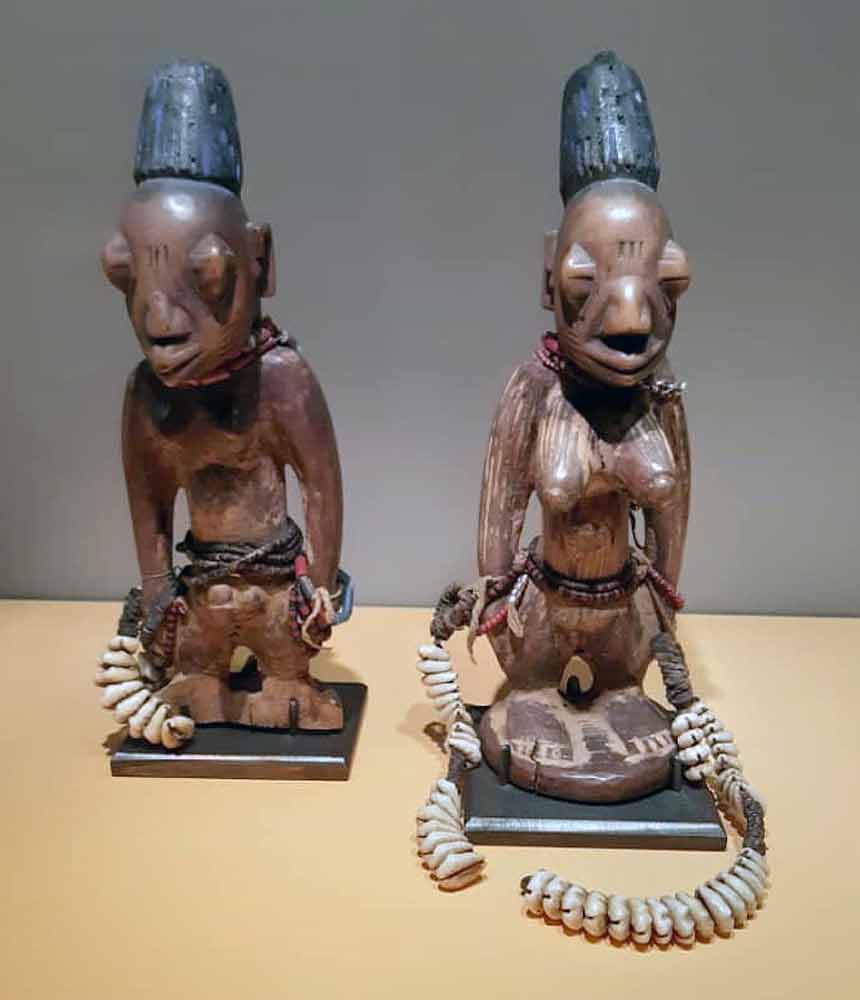
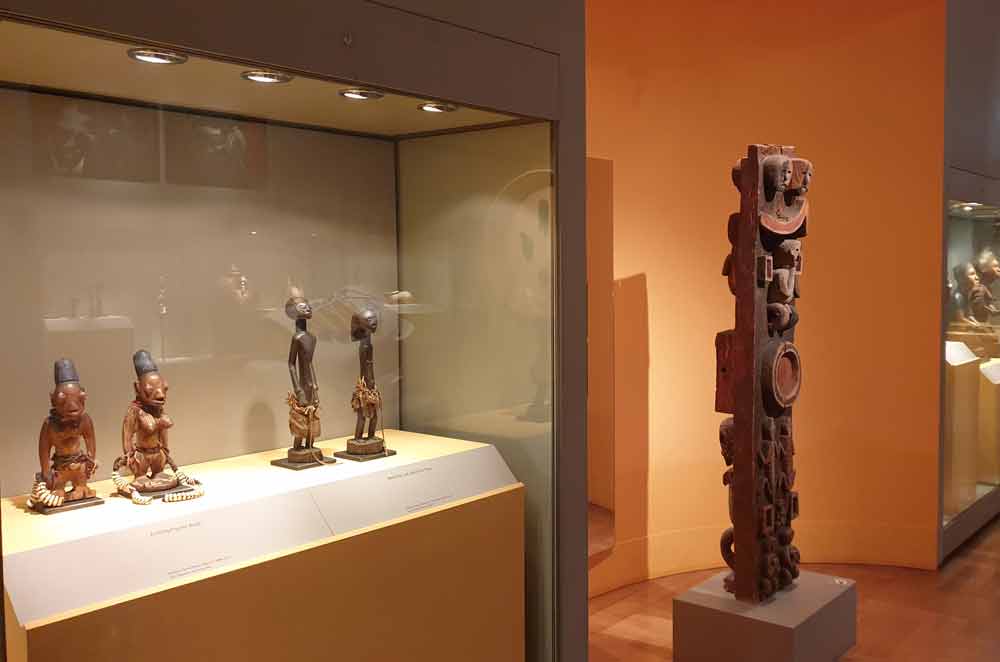
Unknown artist. Ibeji Twin Figures of the Yoruba. Presentation in the museum. First half of the 20th century. Wood, red chalk, cowries, glass. Height 27,5 cm. Museum Fünf Kontinente, Munich. © Museum Fünf Kontinente
Conclusion
The belief in reincarnation and life after death are linked to the Ga and Yoruba ancestor belief. As part of the veneration of twin in families, the Yoruba carve Ibeji figures that has symbolic and spiritual relevance among the people. Among the Ga and the Yoruba, twins are revered and honoured. Furthermore, the two societies believe that every human soul has a chance to return to earth as a new-born, mostly within the same family. The wellbeing of any family is dependent on that of its ancestors and twins. Therefore, periodic prayers/rites are said and sacrificial gifts are presented to ancestral deities, including the Ibeji figures.
References
- Kilson, M. (1974). African Urban Kinsmen, The Ga of Central Accra. London: C. Hurst and Co. Ltd.
- Leroy, F. (1995). Les jumeaux dans tous leurs états. Louvain –la - Neuve [Twins in every state], Belgium: DeboeckUniversité.
- Leroy, F., Olaleye-Oruene, T., Koeppen-Schomerus, G., & Bryan, E. (2002). Yoruba Customs and Beliefs Pertaining to Twins. Twin Research, 5(2),132-136
- Molokwane, S., & Shorn, B. (2002). The African aesthetic as it informs the product form. In:Computer-Based Design. Proceedings of the Engineering Design Conference, King’s College, London, 9 -11 July 2002.
- Nortey, S. (2012). Artistic Evolutions of the Ga Mashie Twins Yam Festival and Its Cultural Implications. Arts and Design Studies, Vol. 2, 2012.
- Odunbaku, B. J. (2012). Importance of Cowrie Shells in Pre-Colonial Yoruba land SouthWestern Nigeria : Orile- Keesi as a Case Study. International Journal of Humanities and Social Science, 2(18), 234-241.
- Vogel, S. M. (1986). African Aesthetics. New York: Center for African Art.
- Yiridoe, E. (1995). Economic and Sociocultural Aspects of Cowrie Currency of the Dagaaba of Northwestern Ghana Aspects. Nordic Journal of African Studies, 4(2), 17-32.
This article is part of a gallery: Perspectives from Ghana on Museum Objects in Germany
Published January 2021
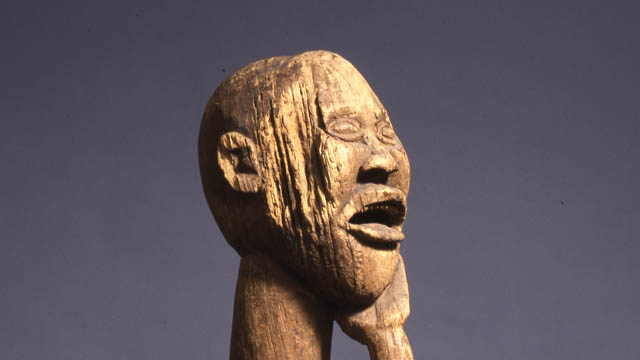
-
 Joseph Essuman
Joseph EssumanChoosing this object stemmed from my experience I had when my mother passed away in my arms. It was a painful reminder of mum's death when I saw the facial expression of the object. The question was; ‘So after all the painful moments she went through, she could not stay a little longer for me to pamper her before she died’? I therefore want this to be part of the project so that the world would appreciate responsible mothers and motherhood no matter the circumstance.
To be a mother marks female social completion in Africa especially among Ghanaians where motherhood is a pride. Without it, one is not quite an adult, or certainly not an adult who receives full respect. Images of this nature, especially in most communities of Ghana are very significant because of the belief systems of the indigenous people before conversion to Christianity or Islam. Though not so common today as a result of modernization and or Christian and Muslim religion as compared to a decade or two ago, it is still believed that, regardless of the changes in time and technology, these beliefs are still as revered as it used to be.
This work is a wood carving in the round portraying a standing, heavily-pregnant woman with her left hand on the chin; but laid on the left breast with the right-hand providing support beneath her belly. The legs are bent at the knees and she has a painful facial expression.
It is a semi-abstract form of work that is 161cm high which stands firmly on a pedestal. The pose of the figure gives an idea of life and death. The opened wide mouth indicates the pain she must be going through and the hand beneath the belly indicates a support for the weighing pregnancy and support for the unborn child.
The concept behind this piece of work depicts strain and stress most women go through before giving birth and it symbolizes fertility and good health. The elongated breasts suggest the vulnerable state of the woman though it has lots of breast milk to feed the unborn child.
This carved image is a representation of a pregnant woman which signifies life. This figure could be interpreted to represent several ideas in different cultures. However, Costa (2019) opined that, a wooden figure of a nude pregnant woman, which has been present at events, is not the Virgin Mary, but a female figure representing life.
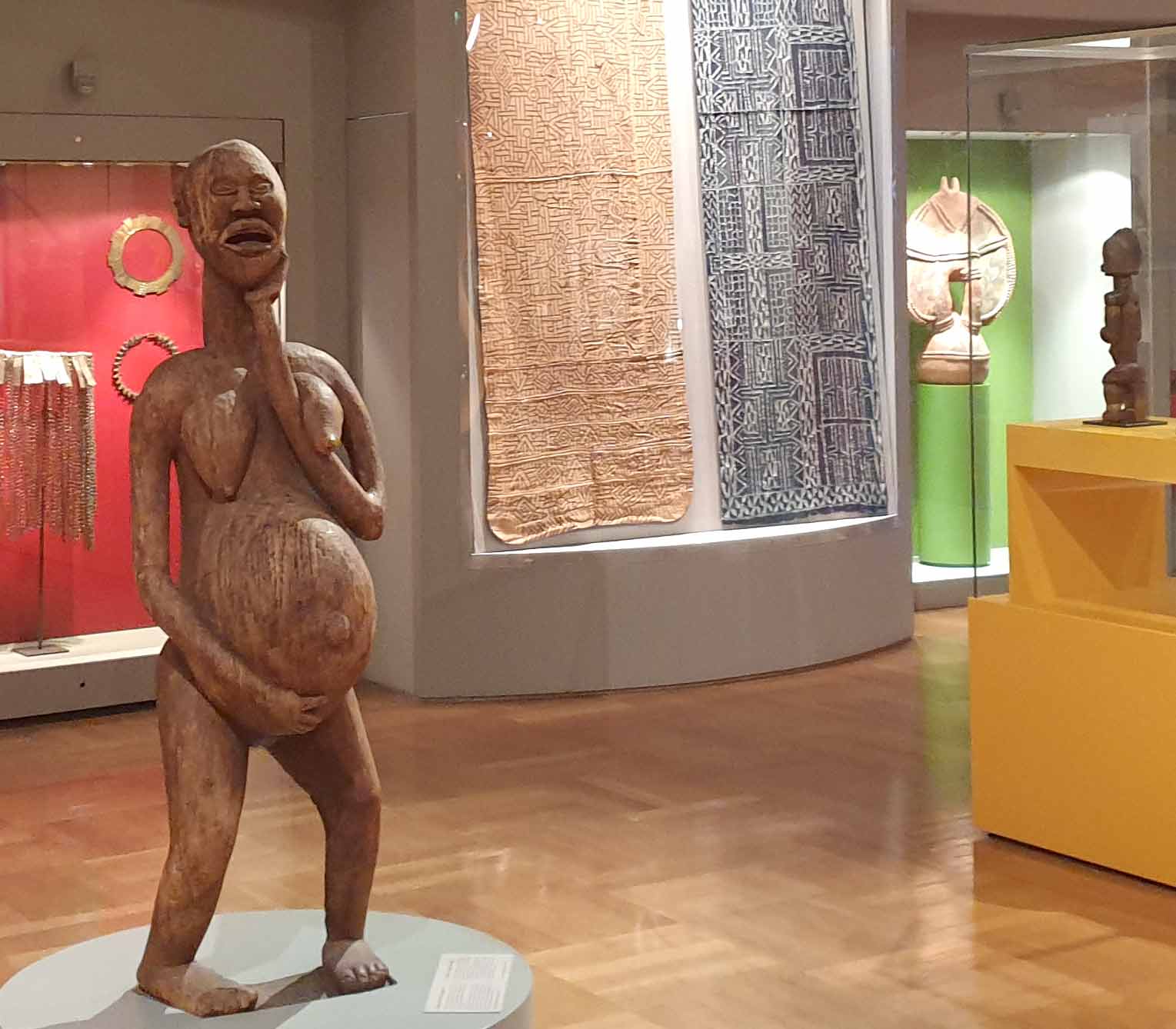
Anonymous artist, first half of the 20th century, wood, 161 cm, Bamileke, Cameroon (Photo Ernst Wagner)
In a similar narration, Costa (2019) said that, a wooden figure of a pregnant woman has been described as both a Marian image and as a traditional indigenous religious symbol of the goddess Pachamama, or Mother Earth. Costa maintained that it is an indigenous woman who represents life; it is a feminine figure and is neither pagan nor sacred but represents life through a woman.
Fundamentally, many indigenous Ghanaians believe that women are like trees that produce and reproduce to sustain life continuity. The woman is also believed to be a fertility goddess. It is with high esteem therefore that Ghanaian women who are capable of giving birth are exalted. As a result, these images or similar ones have been used to ‘serve’, particularly in the Akan and Ewe dominated communities in Ghana. They are seen as religious figures, an expression of health, fertility and grandmother goddesses, and they have over the years served as ritual or symbolic function.
Without children one cannot have a traditional funeral nor become an ancestor. While these issues relate to men as well as women, infertile men can acquire children through cooperative wives who ensure they become pregnant. Unfortunately, per the traditions of Ghana, women do not have that option. In practical terms, wives who are childless may be divorced or have to accept a co-wife. They have no support in their old age, if their husbands die, because that is the duty of children. In extreme cases, they are sometimes ejected from the husband’s house no matter their economic or social status and endure the pity or mockery of family members, friends, and acquaintances.
In most communities in Ghana, it is believed that babies born after a longed-for conception often bear names that reflect their mothers’ anxiety. For example, ‘Brenya’, which literally means “suffer and get” is such a name from the Akan people of Ghana. Also, ‘Nukomeko’, which literally means “I just laugh” is one of the names from the Anlo-Ewe of southern Ghana. These names are among many examples that reflect joy, triumph and satisfaction in a successful delivery after the pain of barrenness. Other names pointedly refer to previous distress and are meant as retorts to those who might have tried to block their pregnancy or had made fun of them. Examples are; ‘Dzitorwoko’, literally means “Only those who have the heart”, Azunukpenawo “It will be shame unto them”, or Nyavedzi “Matter that grieve the heart”. There are other unpleasant names that parents give their children as a mockery in return for what they suffered from either family, and/ or for child mortality. This has been buttressed by Agyekum, when he says that,
“the Akans, like other cultures in West Africa, believe that if a mother suffers constant child mortality, then the reason is that it is the child’s mother in the underworld that does not want the child to stay in the living world. To combat such an unfortunate situation, the parents give the child a weird name (2020: 221).”
For instance, a name such as ‘Asaaseasa’ which literally means ‘the land is finished’ is one of the many names that is used to combat such a situation. This suggests how important pregnancy and childbirth are revered in most communities in Ghana.
So, in the olden days in Ghana, just like in many parts of Africa, girls have received doll-like figures to care for – not as playthings when they are children, but as teenagers preparing for marriage. This sometimes occurs during initiation practices, when their attentiveness may be assessed. In the meantime, the girl would be detached from her family and allowed to stay alone in a small structure. The doll serves as her sole companion, and she “feeds” it, washes and oils it, decorates it with seed beads at neck or hips, and otherwise tends it like the infant she hopes to bear. Most of these dolls are made of females, as their breasts and genitals indicate. The reason being that, female children are especially desirable in order to increase the size of the matrilineage despite the desire that fathers always want their names to remain as a memorial for generations yet to come.
In direct reference to the subject under review, it is suggested that the woman is undergoing some form of pain. But as to whether it is a labour pain, abdominal pain, or crumps, could be a subject of debate depending on individual’s discretion.
It is good that technology has improved greatly over the years and there is a complete education on pregnancy as I try to analyze this piece of artwork. It is therefore necessary to note that these forms of education are very essential and there is no doubt that it will remain useful and also see tremendous improvement with time. Most of these challenges are normal occurrences during adulthood as stated earlier. It is in sharp contrast to what is used to be the case among other people across the globe where such issues are most often associated to evil spirit attacks hence creating fear in prospective mothers and a potential threat to motherhood.
It is relevant to note that womanhood is an undisputable way to ensure life’s continuous existence. In that regard, one can conclude that this artwork is tangible, contextually realistic (though physically semi-abstract) and precise to address the question of whether it communicates, represents or symbolizes the argument in the text. The world today and future will find its educational and cultural relevance as outlined in the context above. It is also appropriate to conclude that the interpretation of the meaning of the object was based not only in the belief systems of Ghanaian communities but transcultural significance and sensitivity to cultural aspects with regards to tolerance and respect as subjects of consideration.
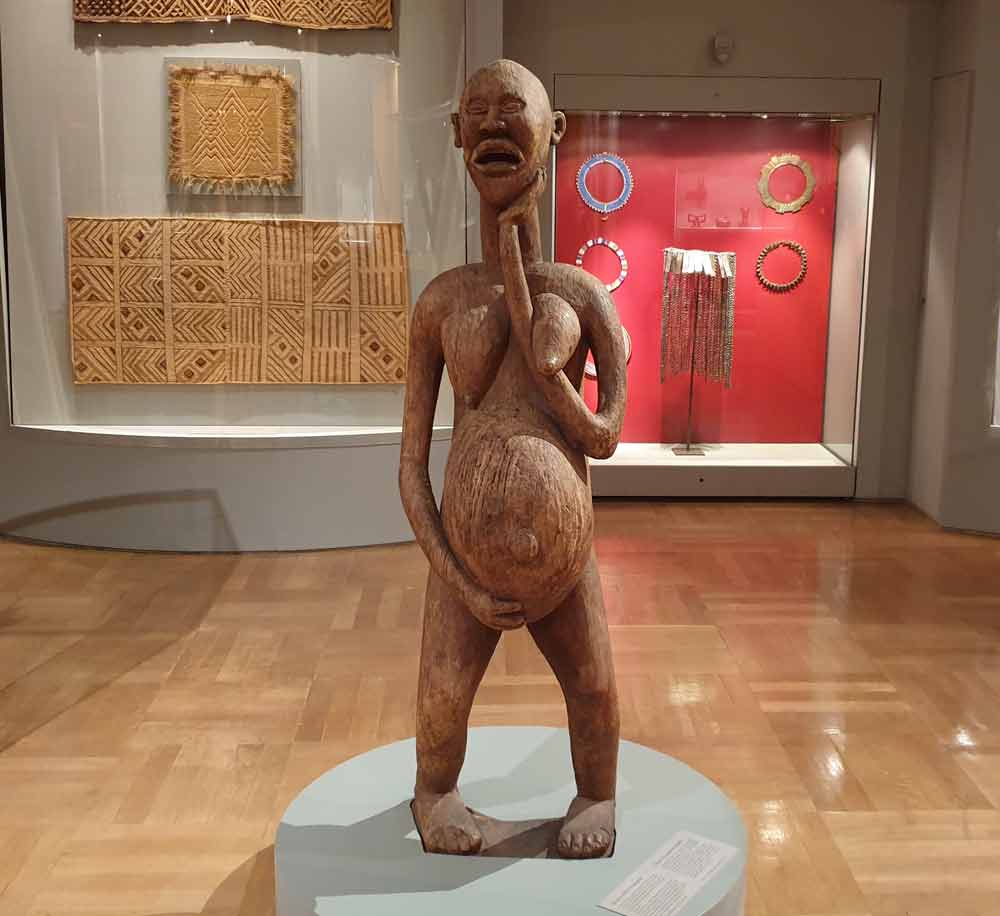
Anonymous artist, first half of the 20th century, wood, 161 cm, Bamileke, Cameroon (Photo Ernst Wagner)
References
- Costa, G. (2019). A communications official for the Amazon synod: https://www.catholicnewsagency.com/news/amazon-synod-final-report-an-instrument-communications-official-says-36081. Retrieved On the 19th March, 2020.
- Agyekum, K. (2006) The Sociolinguistic of Akan Personal Name: http://www.njas.helsinki.fi/pdf-files/vol15num2/agyekum.pdf. Retrieved On the 19th March, 2020.
This article is part of a gallery: Perspectives from Ghana on Museum Objects in Germany, published January 2021
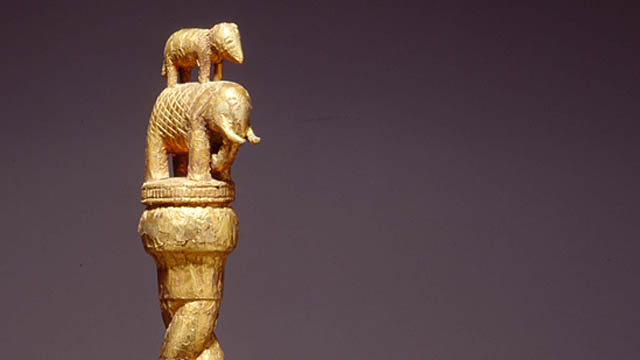
-
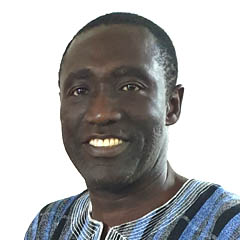 Yaw Sekyi-Baidoo
Yaw Sekyi-BaidooThe Akan linguist1 staff icon represents various aspects of the philosophy, values and symbolism of clan, town or ethnicity. The elephant icon, like other symbols of the Asante empire, is used in fabric and stool designs as well as the finial of the staff (Sarpong (1971:24), which is an important group formal identity symbol. Users of the staff include storytellers, clan linguists, and, most characteristically state linguists. Yankah has this to say about the state linguist staff:
“Every Akan chief or king has two or more staffs. The higher a chief’s status the wider the range of staffs, since and important chief deals with a greater variety of social and political situations and has to match various situations with relevant messages (1995: 33).”
The meaning and artistic significance of the finial of the linguist staff may be seen by considering the choice and artistic design of the finial, the identity of the user, and finally, the context in which the staff is used. The identity of the user, in this context, is the linguist of the King of Ashanti, a very powerful Akan monarch, whose influence and control is acknowledged over centuries and across different parts of Ghana.
The paper examines the motivations for the choice and representation of the Elephant-Calf symbol, and the overall cultural and social significance of the use of this symbol.
The Symbol in Context
Two aspects of the image might are important for our current discussion: the finial itself, and the upper shaft on which sits the base carrying the finial. The upper shaft consists of two veiny lines which with a wisdom knot in their middle. The next is the finial – Mother Elephant with its Calf Standing on it.
The choice of the elephant is based on the preeminence of the elephant as an animal. The elephant is universally used as a royal symbol of power and strength, and among the Akan of Ghana, Kwarteng (2006) reports that the paramount chiefs of Denkyira, Eguafo, Abura, Ajumako, Abeaze, Offinso, Wassa Amenfi have elephants as their royal symbol. The elephant is called ‘sono’ in Akan, and the morphological connection between the name and the Akan expression for immensity ‘so’ seems to emphasize the natural immensity of the elephant, which is also be expressed in the following:
‘Ɔson akyi nni aboa.’
(There is no animal beyond the elephant).
The leadership and protection associated with the elephant is represented in the saying:
'Wodi esono akyi a hasuo nya wo. '
(When you follow the elephant you are safe from the early morning dew of the bush)
The Akan see the immensity of the elephant from the social, political and spiritual perspective also. Socially, the flesh of the elephant is socially significant as it, unlike all other animals, provides meat for the whole community for an extended period. Politically, its parts, skin, ears and tusks are crucial aspects of the insignia of royalty. Again, spiritually, among animals, the elephant is seen to have the greatest ‘sasa’, a kind of spiritual force normally associated with humans. The ‘sasa’ is a spirit which protects its possessor through life and which assails its killers after its death. Sekyi-Baidoo (1994) reports of extensive activities for preventing the ‘sasa’ of the elephant from escaping from the carcass to assail its killer. Overall, the elephant stands for physical, spiritual and social preeminence among the Akan.
The Representation
The Upper Shaft
According some traditional consultants, the veiny lines, as seen above, represent the demands of the governance of the empire, which are controlled by the knot, symbolising the cohesion, control and direction of the Asantehene.
The Parent Elephant
The finial representation captures the side view of the elephant, showing major aspects of its immensity and power - the body, which showcases its immense size, the heavy legs, showing its matchless stability, strength and force; the trunk, with which it breathes, smells, grasps and lifts objects and produces sound; and the tusk, with which it digs, lifts, gathers, attacks and defends itself. The limbs and the trunk are presented in neutral posture: both feet firm on the ground and the trunk lowered – not picking anything nor blurting - suggesting placidity. On the other hand, the tusks, bigger than natural, are lifted, pointing to an ever-readiness - not to attack, but to defend. It is on this placid but defence-ready image of the elephant that the dependant calf is placed - for optimal comfort and security. It is explained that this image symbolizes the prosperous relationship between the Asantehene and the people over whom he rules - not intimidating them with his supreme power and authority, but ensuring their peace and security.
The Calf
Interestingly, unlike the elephant, the calf is presented panoramically - without the details of ears, tusk and trunk - its source of perception, control, nourishment and defence, for which it would depend on the mother. This is understood to symbolise the governance relationship in the Ashanti Kingdom where the subjects look to the Asantehene for intelligence, protection and support.
According to traditional informants, the elephant-calf image is sometimes interpreted as symbolizing the permanence of the supremacy of the Ashanti Empire - from 1701 to present – perhaps, unlike others powers which rise and fall.
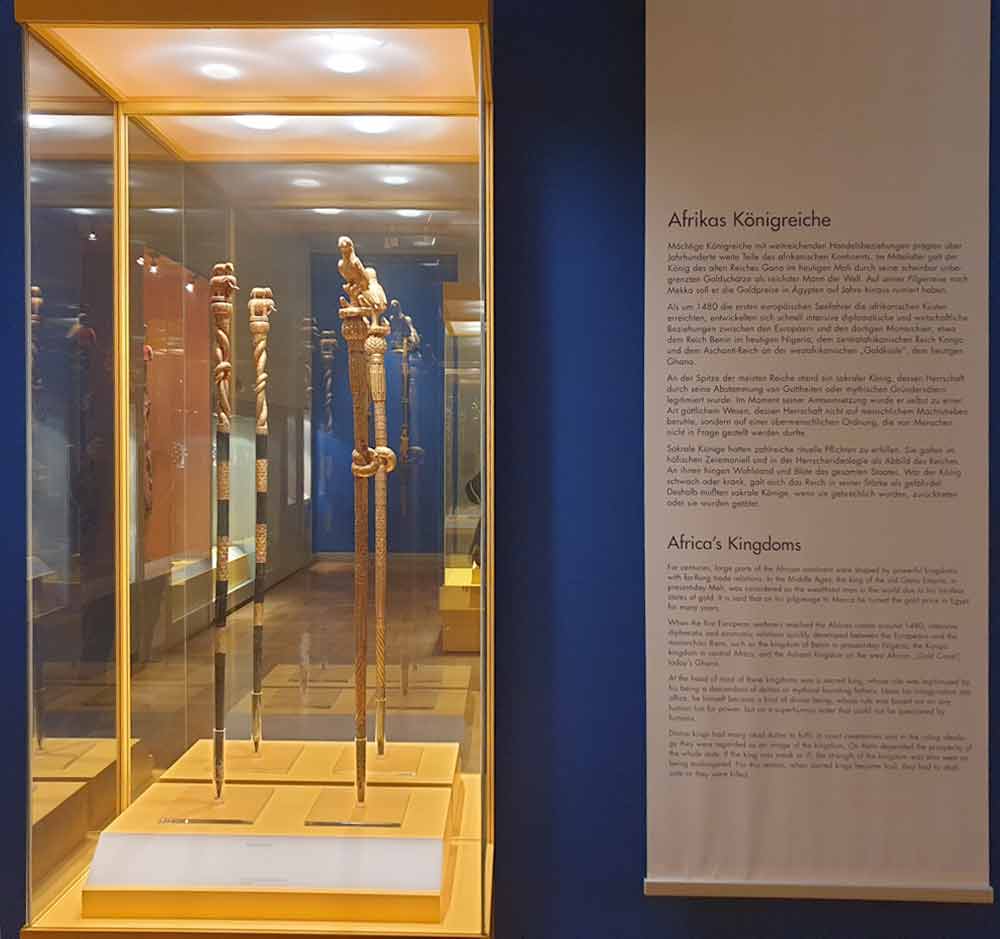
Significance
As intimated above, beyond its art and royal attraction, the elephant-calf image of the Ashanti royalty reflects ethnic and universal ideals of effective leadership, which is for cohesion and protection and, rather than for oppression. This is evident in the symbol of the wisdom knot and the image of the elephant carrying the calf. This education on the effective use of power is relevant to majority/minority and local as well as international rich/poor contexts. On the reverse, it also points to the Akan and universal idea of responsible followership - submission and trust, and is easily utilised for the education of children. The image, thus, represents an effective blend of governance, culture and education.
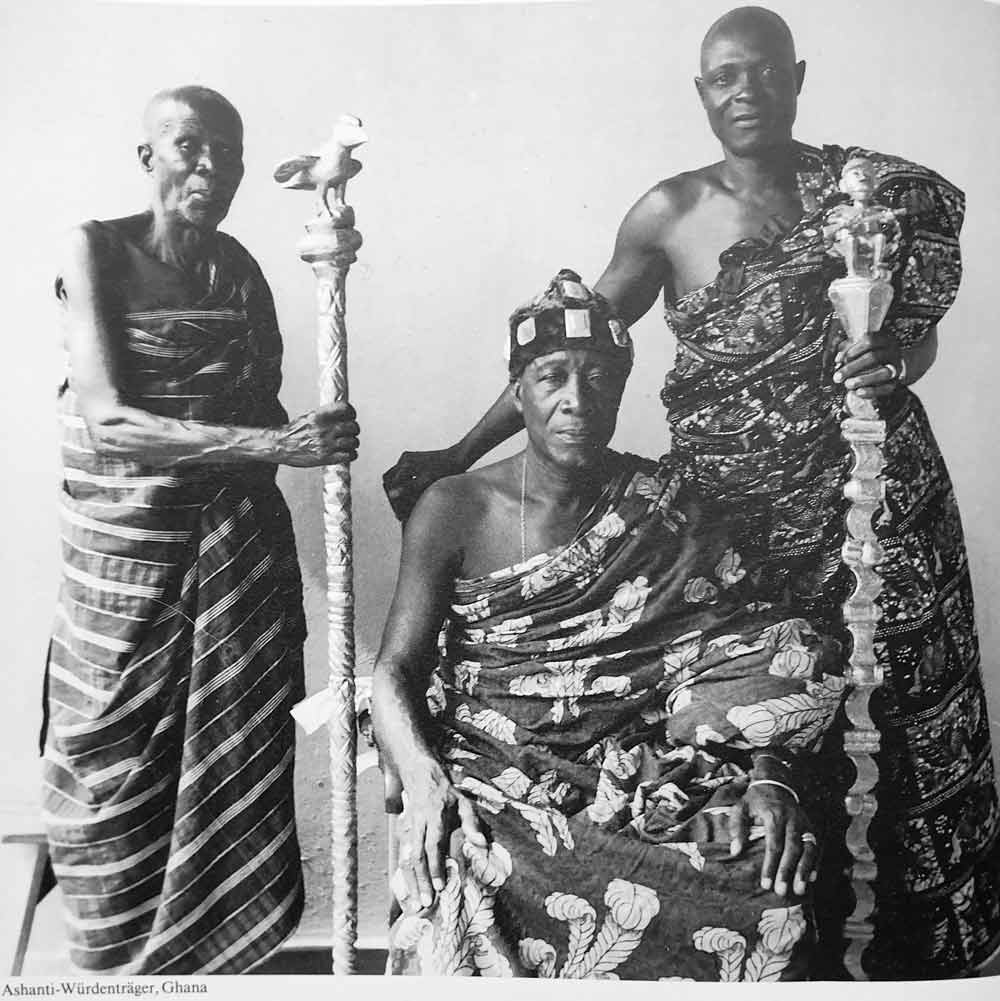
References
- Kwarteng, K. O. (2006). The elephant in pre-colonial Ghana: Cultural and economic use values. Journal of Philosophy and Culture, Vol. 3 (2) June 2006: 1 -32.
- Sarpong, P. (1971). The sacred stools of the Akan. Accra: Ghana Publishing.
- Sekyi-Baidoo, J. Y. (1994) The Aesthetic and cosmological features of the Akan hunters’ song. MPhil Dissertation, Institute of African Studies, University of Ghana, Legon
- Yankah, K. (1995). Speaking for the chief: Ȯkyeame and the politics of Akan royal oratory. Bloomington & Indianapolis: Indiana University Press.
Footnote:
1) The term „linguist“ has been adopted in Ghana for the Akan designation „Okyeame“ in an attempt to find an English equivalent for the role of the chief´s or king´s diplomacy attendant. This may have arisen out of the acknowledgement of the linguistic capabilities displayed by the attendants, whose main resource was language.
published January 2021
This article is part of a gallery: Perspectives from Ghana on Museum Objects in Germany
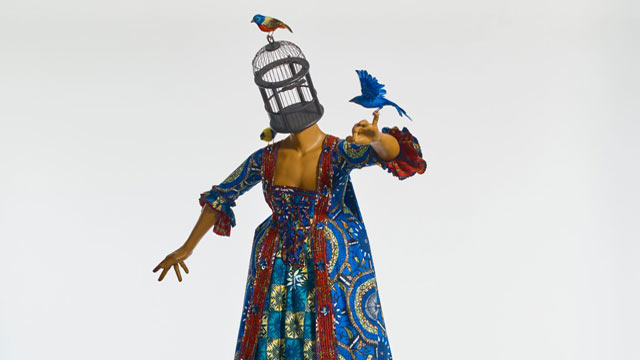
-
 Bernadette Van Haute
Bernadette Van HauteMrs Pinckney and the Emancipated Birds of South Carolina (2017) is a sculpture in the round composed of a headless, female, ‘white’ mannequin swathed in historical dress and balancing on a globe. In place of her head is an empty birdcage from which three birds have escaped. The work was created by the internationally renowned artist Yinka Shonibare (born 1962) who is a black man of Nigerian descent living in the United Kingdom. He can thus be identified as a member of the African diaspora. In his artworks he usually engages with concepts that are related to the politics of colonialism and the slave trade and explores cultural identity in the context of globalisation. [1] While his creations are deeply critical of western imperialism, he always makes sure to render them visually alluring and engaging to elicit a visceral response. [2]
This particular artwork was co-commissioned by the Yale Center for British Art and Historic Royal Palaces, Kensington Palace, and created especially for the exhibition "Enlightened Princesses: Caroline, Augusta, Charlotte, and the Shaping of the Modern World".[3] This adds an aura of seriousness of intellectual and aesthetic intent to the sculpture. In the title of the work, the artist has identified the woman as Mrs Pinckney, or Elizabeth (Eliza) Lucas Pinckney, who at the age of 16 was put in charge of her father’s plantations in South Carolina. [4] She had a major influence on the colonial economy by developing indigo as an important cash crop to be processed as dye. [5] The sculpture is said to be the artist’s response to Eliza’s encounter with the German Princess Augusta in 1753 which further identifies her as a member of the social elite. [6] All of the above components help to retrieve the identity of the subject, the ideology being addressed as well as the message in the image.
The artist has encoded his artwork with visual tropes that clarify and enforce his message. While the style of Eliza’s dress is based on 18th-century fashion, the fabric used is Dutch wax cloth which Amah Edo describes as a “marker of Africanness”. [7] Manufactured in Europe but using the Javanese batik printing technique, the cloth “came to be produced specifically for West African markets in the 1890s … [and] its aesthetic was adapted by manufacturers to suit these new consumers’ tastes”. [8] Now widely perceived as symbolic of tradition, the Dutch wax cloth is regarded “as a high-end commodity desirable to elite customers”.[9] The material of the woman’s dress thus not only identifies her as a member of the elite but also refers to Africa as the source of her wealth: it is through the labour of the African slaves that Eliza was able to run her family’s plantations in America. Likewise, the blue of the material – and the bird on her finger – is a direct reference to her successful cultivation and processing of indigo. It can thus be seen that the artist explores concepts of race and class through a careful choice of materials and colours in his imagery. By dressing the white woman in African cloth, he complicates history and racial identity in an effort to startle the viewer’s conscience.
As the plantation’s manager, Eliza occupied a position of power which is visually manifested by her being placed literally on top of the world. The latter is represented by an eighteenth-century globe that shows the colonial territories of the British empire. [10] Eliza is thus turned into a symbol of white superiority and privilege granted by the politics of imperialism. Her balancing act, however, proves to be precarious and elicits tension as the ball can roll at any moment and topple her from her position of power. It is also interesting to note that the globe is an attribute of Fortune, the fickle goddess of antiquity. Fortune is blind and even eyeless, and the globe “on which she stands or sits, originally indicated instability, but to the Renaissance it was rather the world over which her sway extended”. [11] The headless Mrs Pinckney thus shows a cunning resemblance with the antique goddess Fortune “who bestows her favours at random”. [12]
The favours bestowed by Eliza relate to her release of the birds from the birdcage. However, instead of flying away to freedom, they come back to her. She playfully lifts her left arm for an indigo-blue bird to perch on her little finger, while another bright-coloured bird sits on her left shoulder and a third one on top of the cage. According to Shonibare, the birds are a metaphor for slaves and her gesture of setting them free symbolises her wish to emancipate the slaves – hence the title Mrs Pinckney and the Emancipated Birds of South Carolina. [13] The narrative thus presents a paradox between the white woman’s privileged yet unstable position as powerful, wealthy mistress and her fickle wish to liberate the black slaves whose destiny is entirely in her hands.
In this work, Shonibare has given his own interpretation of the story of Mrs Pinckney, choosing to focus on the effects of the slave trade and colonisation in the eighteenth century in the United States, then still British territory. While the playfulness of his rendition and its aesthetic appeal conceal the harsh realities of enslavement, the dehumanisation of black people as a result of colonial politics still filters through in the form of brightly coloured birds which, although set free, are so tamed – read oppressed and subjugated - that they are not able to fly.
[1] https://en.wikipedia.org/wiki/Yinka_Shonibare (26 July 2021).
[2] Yale News, 2017. Yinka Shonibare MBE (RA): ‘Mrs. Pinckney and the Emancipated Birds of South Carolina’. Video. Yale News, Yale British Art, 25 July 2017. https://news.yale.edu/videos/yinka-shonibare-mbe-ra-mrs-pinckney-and-emancipated-birds-south-carolina (26 July 2021)
[3] Yale News 2017.
[4] Yale News 2017.
[5] https://en.wikipedia.org/wiki/Eliza_Lucas (26 July 2021).
[6] Yale News 2017.
[7] Edo, Amah M. (2019). From African print to global luxury: Dutch wax cloth rebranding and the politics of high-value. In Mehita Iqani and Simidele Dosekun (Hrsg.). African luxury: Aesthetics and politics (pp. 77-92). Bristol, UK / Chicago, USA: Intellect, p. 82.
[8] Edo 2019, p. 80.
[9] Edo 2019, p. 85.
[10] Yale News 2017.
[11] Hall, James. 1974. Dictionary of subjects and symbols in art. London: John Murray, p. 127.
[12] Hall, James. 1974. Dictionary of subjects and symbols in art. London: John Murray, p. 127.
[13] Yale News 2017.
 Nobumasa Kiyonaga
Nobumasa KiyonagaThe oeuvre of Yinka Shonibare CBE is often characterised by a colourful and at the same time amusing appearance. This facilitates the viewer's immediate access. This is also the case with his 2017 work Mrs Pinckney and the Emancipated Birds of South Carolina. What one perceives here at first glance is the figure of a lady wearing historical European clothing, a "Robe à la Française" from the 18th century. However, the clothing is unusually colourful. Moreover, the woman is standing on a sphere, albeit shakily and leaning forward somewhat. This image quickly connects with the traditional European iconography of "Fortuna", i.e. the admonishing, allegorical symbol of "fate". It turns out that the sphere is the globe.
The graceful lady also has a strange head in the form of a birdcage. But its door is open and the three birds have long since escaped. This could be an allusion to Maurice Maeterlinck's The Blue Bird, the central message of which is the obvious true happiness. In any case, the caged head shows us that it is actually our thoughts that tie us down and hinder our actions, as is often the case. Seen in this light, at least this lady has succeeded in unmasking the internalised gender ideology and liberating herself mentally. But is it really a lasting liberation?
Who actually is this lady, this "Mrs Pinckney"? What fate is at stake? She is not known here in Japan, for example. A look at Wikipedia, for example, will help: she is considered one of the first emancipated women in the USA, who achieved prosperity with her pioneering attempt to grow indigo on slave plantations in South Carolina. This dye was in particular demand for military uniforms in Great Britain at the time.[1] That is why the lady is wearing this indigo dress. But where does the artist's reference to Mrs. Pinckney come from? A direct connection is hard to find at first. However, knowing that Shonibare describes himself as a "post-colonial hybrid"[2] - he was born in London as the child of Nigerian parents, grew up in Nigeria and studied in London - and that he very often uses "African wax prints" for his works,[3] one gains more clues about the work.
At present, those wax prints seem to represent "authentic" African life, but they have an Indonesian origin and were made by Europeans, especially Dutch, and sold and distributed in West Africa.[4] In this sense, they are in fact a transcultural product. Through their use, the artist points to the "cultural imagination as a power structure and means of domination"[5] in the spirit of the critique of representation. In this specific work, too, the wax prints, which have something in common with the fate of indigo, find their use in clothing.
Thus, it turns out that the lady functions as the encouraging and, at the same time, admonishing symbol of the emancipation of women, which never proceeds in a linear fashion and is still threatened and endangered everywhere today. Moreover, this emancipation movement must always be seen in an even more complex context, which was and still is connected with the fate of countless people - in Mrs. Pinckney's case, for example, that of the slaves, according to the message of the work.
[1] https://de.wikipedia.org/wiki/Eliza_Lucas_Pinckney (27 July 2021)
[2] Shoji, Sachiko. 2019. “History is Happening Now: What Connects Us All to the Art of Yinka Shonibare CBE.” In Exhibition catalogue Yinka Shonibare CBE: Flower Power. Fukuoka: Fukuoka Art Museum, p. 105. Incidentally, this is the artist's first solo exhibition in Japan.
[3] Shonibare CBE, Yinka. 2019. “Artist Statement. Woman Shooting Cherry Blossoms.” In Exhibition catalogue Yinka Shonibare CBE: Flower Power, Fukuoka: Fukuoka Art Museum, p. 13.
[4] Ibid. According to Shoji, Japan also became involved in the production of those wax prints and their export to Africa from the late 1920s to the mid-1990s. See Shoji 2019, 106-107.
[5] Shonibare 2019.
 Ernst Wagner
Ernst WagnerA life-size, headless, female mannequin balances on a globe showing the African continent from the front. Her Biedermeier-style clothing in bright colours shows a deep décolleté. The fabric pattern is Dutch Wax, which can be inferred from the given information on the work. In combination with the birdcage and the three colourful birds outside the cage, the sculpture is reminiscent of surrealist montages like in René Magritte's artworks.
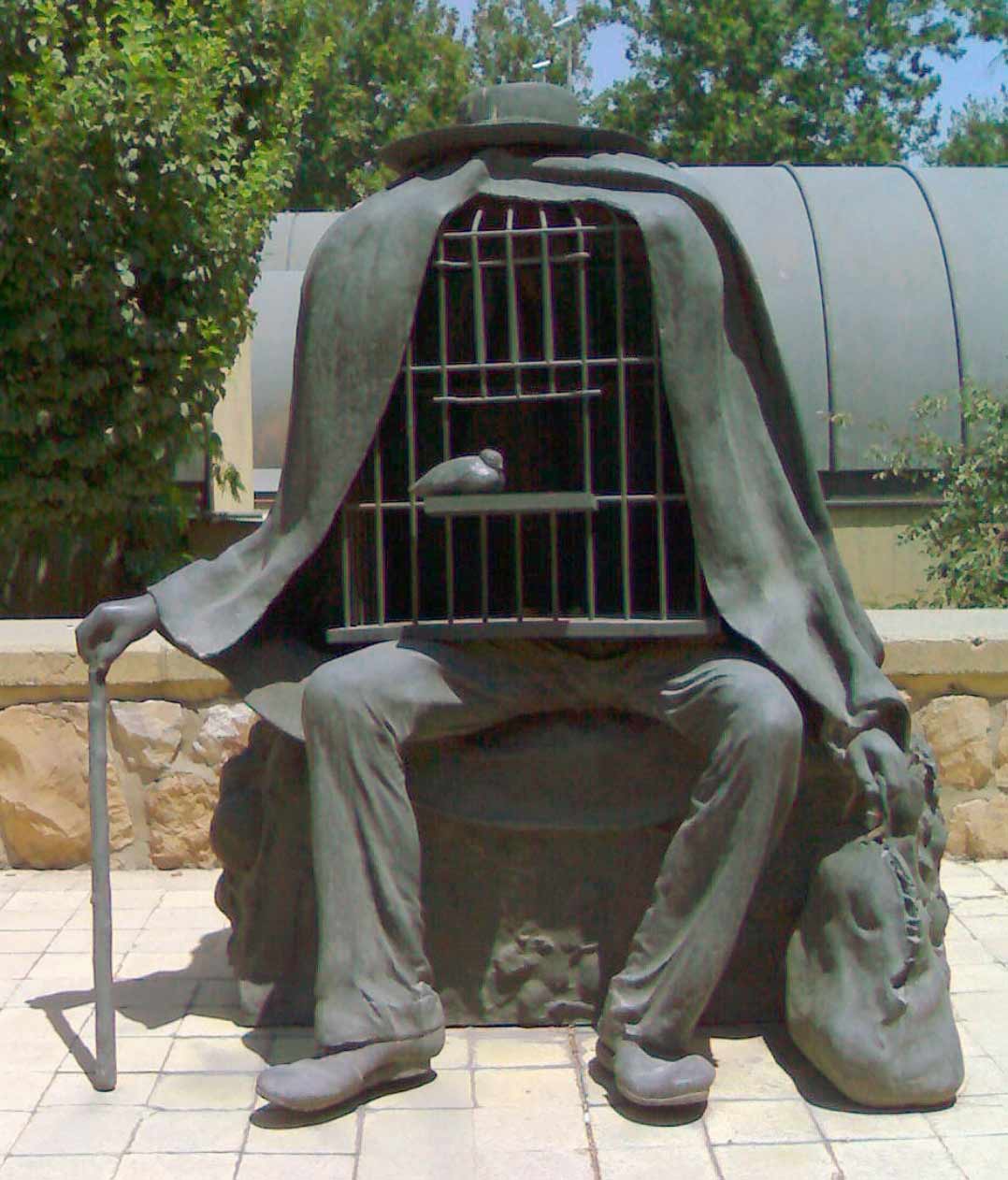 René Magritte, Le Thérapeute (1976), Tehran (Copyright: WikiCommons)
René Magritte, Le Thérapeute (1976), Tehran (Copyright: WikiCommons)The title refers to a concrete iconography that makes research necessary which - as a reward - helps to decipher the birds and the blue dress: Mrs Pinckney refers to a prominent historical woman (Eliza Pinckney, 1722 - 93) whose biography - as one can read on Wikipedia - was deeply entangled with English colonialism and the American War of Independence. Shuttling between North America and England, she was remarkably innovative and entrepreneurial. The birds in the sculpture allude to a specific anecdote when Eliza Pinckney gave such birds as a gift to the mother of the British King George III. The blue of the dress can be seen as an allusion to Pinckney's production of indigo in South Carolina.
The globe and the pattern of the dress - like the title - also allude to the theme of colonialism. Even the material specification of "Dutch Wax" tells a tangled story in colonialism. But the female role model embodied by Eliza Pinckney in her time, obviously denies the usual connotations associated with colonialism, slavery and looting. The birds outside the cage perhaps also make references to the immanent contradiction between freedom and captivity.
Alluding seems to be the most adequate term to grasp the specificity of the visual language of this work. Nothing is clearly asserted, no thesis is put fprward. Rather, a dazzling, assembled, ambiguous figurine stands in the context of 18th-century colonialism, hinting at many themes that are significant also today: women's roles, capitalism, domination and exploitation of nature, colonialism, freedom and oppression. This fits in well with the immediate perception of the object. Looking at the artwork, one gets the impression of a strange balance of lability and stability, of theatricality and ridiculousness, of immediate sensuality and learned knowledge.
Now, the question remains as to how this work is located in the transcultural contact zones. Today, it is exhibited in a US collection of British art, the "Yale Center for British Art". The artist himself is called a British-Nigerian artist. He himself uses his English title of nobility CBE (Commander of the British Empire) in his name. Since documenta 13, he is well known in the context of Global Art. In terms of iconography, the work is also located at these interfaces. Through montage, it merges different associations into an inherently contradictory complexity that cannot be resolved. This creates a fundamental openness that is reflectes when we ask about its meaning: can we read the work as ironic alienation? Or as a commentary on history? Or as homage or, on the contrary, as criticism of the historical Mrs Pinckney? As a reflection of current and very serious issues or as a harmlessly playful object?
A video produced by the museum where the work is now located shows an analogous reception history (Link 1 / Link 2). How does the work constitute the “ideal” viewer? He or she is a decoding, deciphering viewer who allows the iconographic fixation to fail with relish because of the sensuality of the playful object, just as the narrative of Mrs Pinckney fails because of the mannequin's instability. The ideal, contemporary viewer simultaneously enjoys the openness and yet sees him-/herself confirmed in his/her anti-colonial habitus.
 Discussion
DiscussionDiscussion
EW: When I compared all three contributions, I was initially surprised by the large number of common intersections. This certainly points to the global power of interpretation of media representations in English (website of the collection at Yale, Wikipedia), which we could not escape either. We all researched Mrs. Pinckney on Wikipedia, we all trusted the video on the website as a source. But what is interesting now is how differently we deal with it and what different conclusions we come to. I have the impression that in your approach, Bernadette, the story of Mrs. Pinckney plays the biggest role, while in my text this story is rather only a possible reference point. I don't know if you can agree with me.
NK: Yes, I also see these differences. With Ernst, I see more of a fundamental, principled attitude in the analysis of the work. In Bernadette's interpretation, I found the interpretation of the birds as "slaves" interesting. I myself saw in it the - temporarily - liberated soul of an emancipated woman. Moreover, in this context, I also find your reference to the paradox of the actually already liberated "slaves" particularly illuminating, as it seems to have been derived from your discussion of colonial history in Africa.
BVH: When comparing our contributions, I was also reminded of the fact that art is always about other art, hence we looked for precedents that may have inspired the artist. But what I find most exciting about our interpretations are the differences in emphasis on the various meanings that are embedded in the work. For Ernst, the transcultural nature of the work stands out, as well as its openness in meaning. For Nobu, it is the reference to gender ideology and women’s emancipation that forms the core of the work, especially in light of ongoing gender discrimination. For me, it is the historical narrative that led me to interrogate the issue of racial discrimination which also continues today in movements such as #BlackLivesMatter.
EW: I share this, and I would like to follow up with a question. Is it possible that our respective contexts in which we work have influenced this? Not in terms of content – we agree on that – but in terms of patterns of argumentation. If you, Bernadette, place so much emphasis on the story of Mrs. Pinckney, does this perhaps reflect the great oral, meaningful storytelling traditions in Africa? And when you, Nobumasa, on the other hand, elaborate Mrs. Pinckney as an encouraging and at the same time cautionary symbol, does this perhaps reflect the great ethical traditions in Asia? My refusal of direct meaning-making and ethical service, on the other hand, would then be a European-style reflexive evasive manoeuvre to a (preferably unassailable) meta-level?
BVH: Good question indeed. In my opinion, this exercise shows how we are all conditioned by the sociocultural environment in which we live and work. Hence my response, from a South African point of view, focused on the story/history in order to highlight the importance of the work in decolonising the subject. While playfully complicating racial issues in a historical context, the artist mainly celebrates Africanness by means of materials, patterns and colours. This allowed me to infuse my interpretation with African epistemologies. Your response, Ernst, could be regarded as a refusal, perhaps, to acknowledge and engage with the deeper implications of the work and indeed rather shift the focus onto more theoretical concerns as inspired by German art historians? I am keen to hear Nobumasa’s view on this matter.
NK: Ernst's question about whether a Japanese ethical tradition might secretly be reflected in my interpretation is very difficult for me to answer. But as Bernadette has just pointed out, the social context in which we work definitely plays a certain role. While globalisation has erased spatial distances, perhaps not necessarily mental ones. For Japanese today, Africa is still very distant, in the double sense mentioned above. Although Africa is the second largest continent with 55 countries and countless information is available, detailed and nuanced ideas about it are often missing from our consciousness. My leap into the general, or ethical, implication of the work could possibly be explained in this way. Seen in this way, I have probably unconsciously "traced" my own situation. But this also underlines the fact that the critique of representation – in the sense of a critical questioning of pictorial representations – is still as relevant today as it ever was.
EW: I was very grateful to you, Nobumasa, for the emphasis on the ethical, because we always have to include the ethical dimension in the context of education. My argument from a German point of view would be that the interpretation of a work like Mrs. Pinckney must not be arbitrary. That would be the ethical responsibility of the interpreters. We will have to come back to this in a moment when we discuss conclusions for a toolbox for decoding images.
But first I would like to learn more about the differences between our approaches – even though there is a large area of consensus. In the theoretical discussions we had some time ago, we clearly distinguished the Japanese concept of 'kansho kyoiku', the South African concept of 'art criticism' and the European concept of 'work immanence'. Could you elaborate on the question of how these positions are reflected in your texts?
NK: The introduction of dialogue-based art viewing from the USA in the late 1990s revived the field of art education in schools or museums in Japan. Since then, this didactic method, which seems to seek to maximise the viewer's part in interpretation through its strict rejection of knowledge transfer and ultimately prioritises the discussion of interpretation, is still in vogue today. But a crucial question still arises as to how the meaning of interpretation, or meaningful interpretation, is secured without degenerating into mere arbitrariness. In this respect, too, our experiment seems to be very inspiring.
BVH: At the University of South Africa we believe that the basic skills required to interpret objects of visual culture are best taught by beginning to practise art criticism. The proper domain of a critic is the description, interpretation and evaluation of concrete works of art. As a first step in this process, students must learn how to describe and interpret artworks. Essentially art criticism is a practice embedded in western epistemology that has been appropriated to study the art of contemporary Africa in a global context. When investigating the historical arts of Africa, the method remains the same although the local context of traditional culture and customs must be taken in consideration. My interpretation of Shonibare’s work was guided by these very same principles.
EW: Finally, I would like to ask you something with regard to the 'methodological kit' proposed by the editors of this volume: Which methodological approaches for the interpretation of images do you consider absolutely necessary – independent of our respective Japanese, South African or European context? And I'll add a second question in a moment: Does that leave one area that plays a role exclusively in your respective local context?
BVH: From an art historical point of view, the methods best suited for the interpretation of political images stem from a contextual approach which demands critical consideration of the cultural context of the work, its artist and of the social practices and power relations in which it is embedded. As the interpreter, you can apply the iconological method: first describe what you see – formal elements and details – and then identify the iconography, the specific subject and symbolism of the work. Do some research on facts and historical context, as well as the reasons why the work was made or commissioned. Then you can explain how all this information was put together to express the meaning or content of the work and decide what message or ideas the artist was trying to communicate. Because every interpreter comes to the artwork with his/her own worldview, the interpretation will differ depending on that worldview and not on the local context. For example, because I attach more importance to the idea of decolonisation, my contextual approach is combined with and influenced by decolonial theory.
NK: Basically, Bernadette, I gladly agree with you, especially with regard to your gradual approach. I also think it is reasonable and sensible from a pedagogical point of view. But this raises the question of what actually constitutes a "political image" or "when" an image becomes political. Of course, there are pictures or works of art that are obviously and unmistakably recognisable as such, but there are also those that are much more subtle, that are not so noticeable to foreign eyes, or that were not originally created with political intentions, but that in retrospect seem to be quite political. What one considers to be political depends, after all, very much on the view of the observer, possibly even completely apart from the original intention of the creator. In this respect, it seems to me that a fundamental attitude is indispensable for the viewer to be able to keep a mental distance from a picture and its context as well as from himself and his own horizon in order to perceive a picture (also) politically.
EW: Thank you both, because from my point of view I cannot and do not need to add anything more. I completely agree that an iconological basis, as Bernadette has formulated it, is needed. And I am deeply convinced that the reception-historical and reception-theoretical extension that Nobumasa has added is absolutely necessary, indeed indispensable, for the toolbox. I can add nothing to this bundle of methods.
What perhaps came up short in our conversation were the different cultural conditions and the resulting consequences for interpretation. But we'll make up for that on another occasion.
NK: Finally, let me add something to my previous statement. For responsible interpretation, we need above all a willingness to engage in dialogue. I experienced this again in our conversation and our experiment also shows this in an exemplary way.


